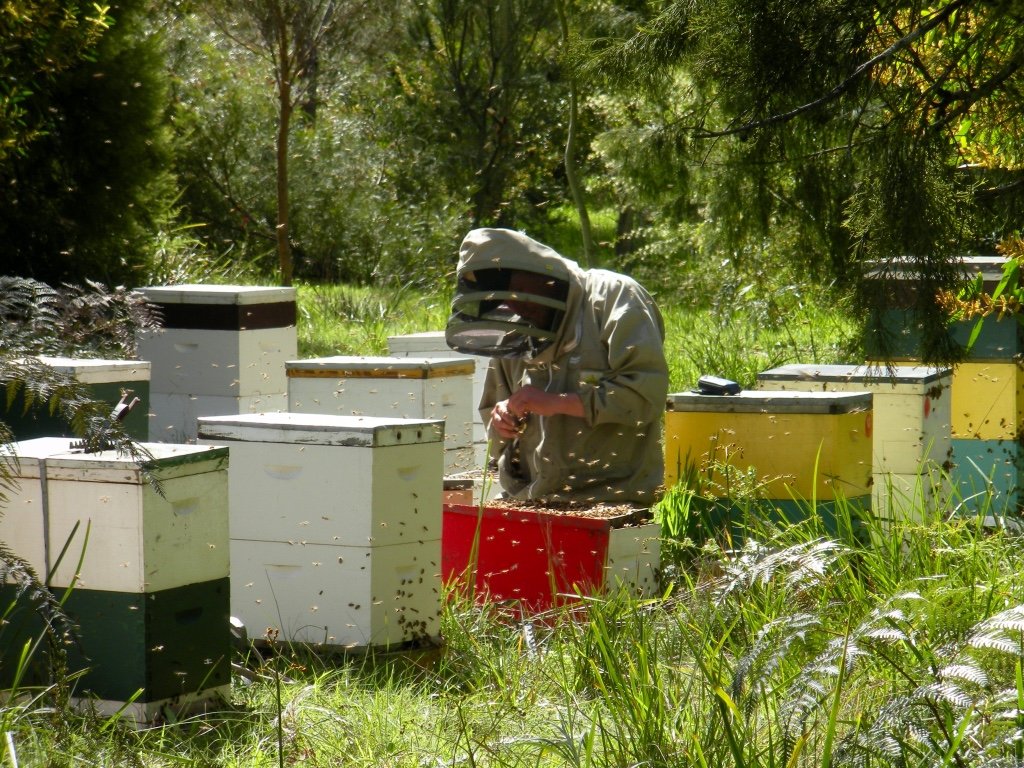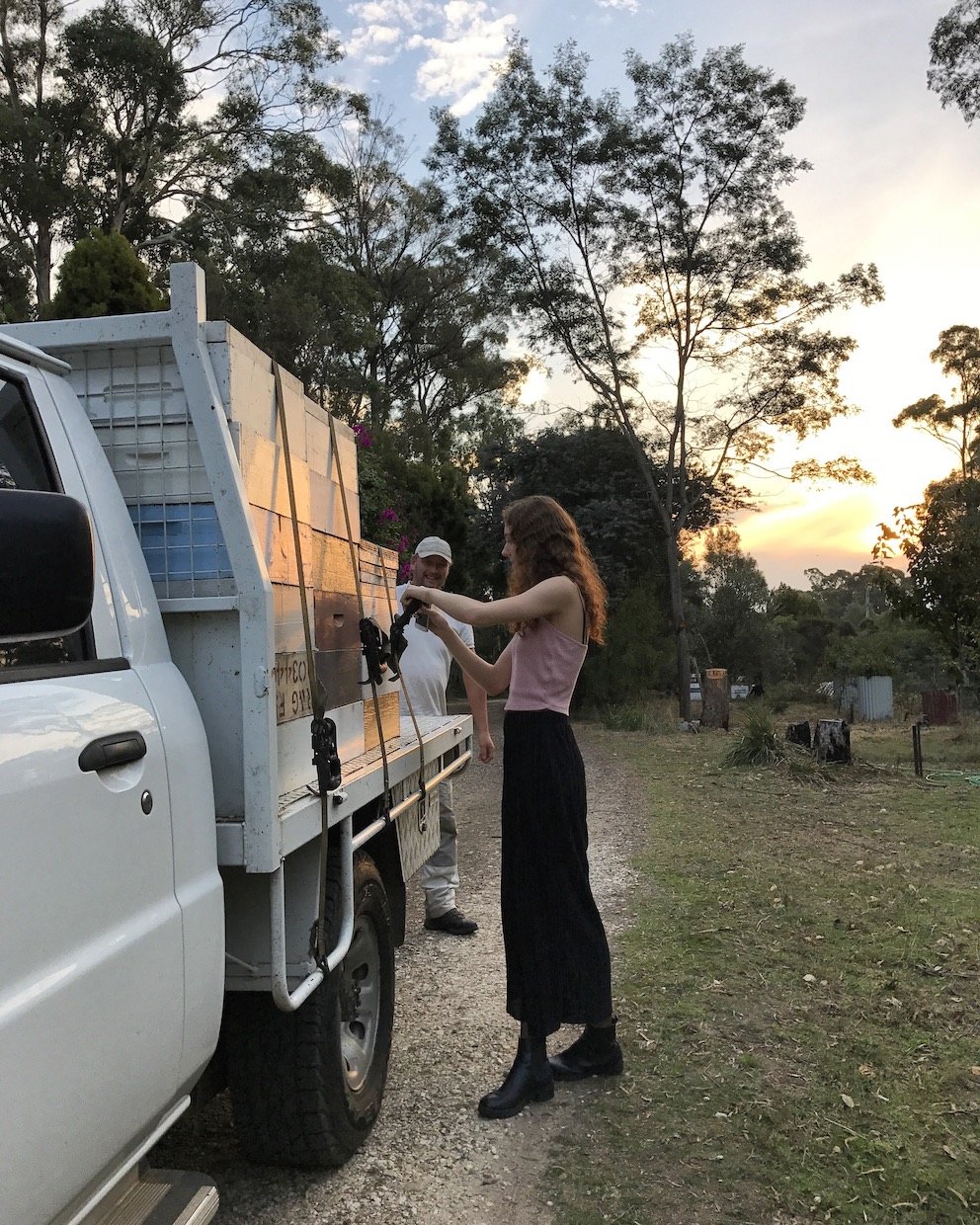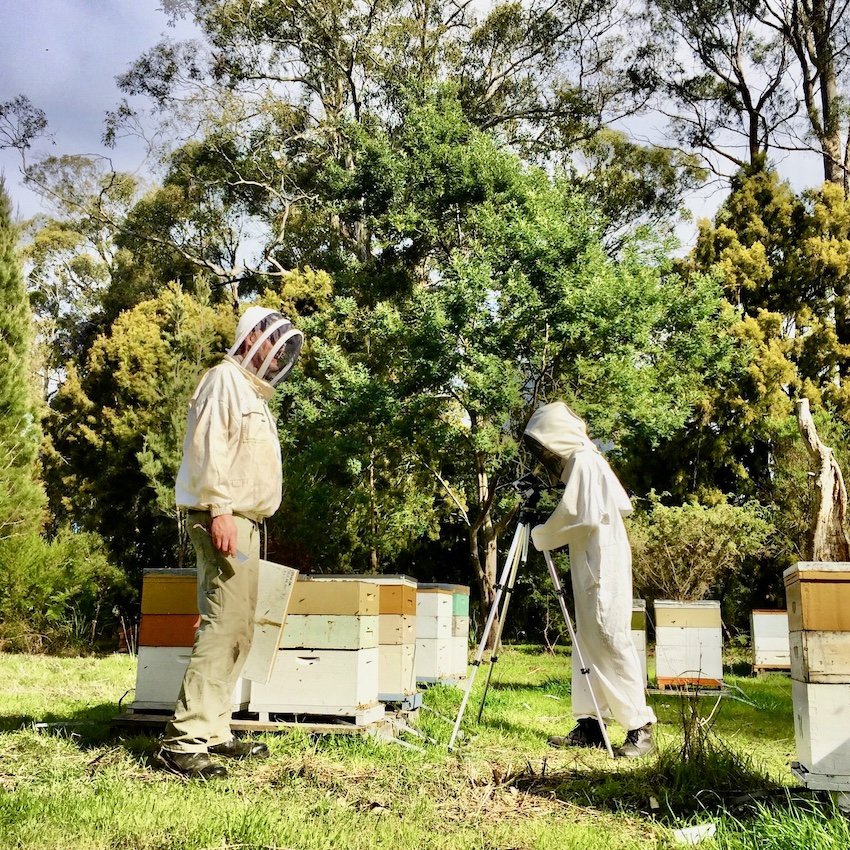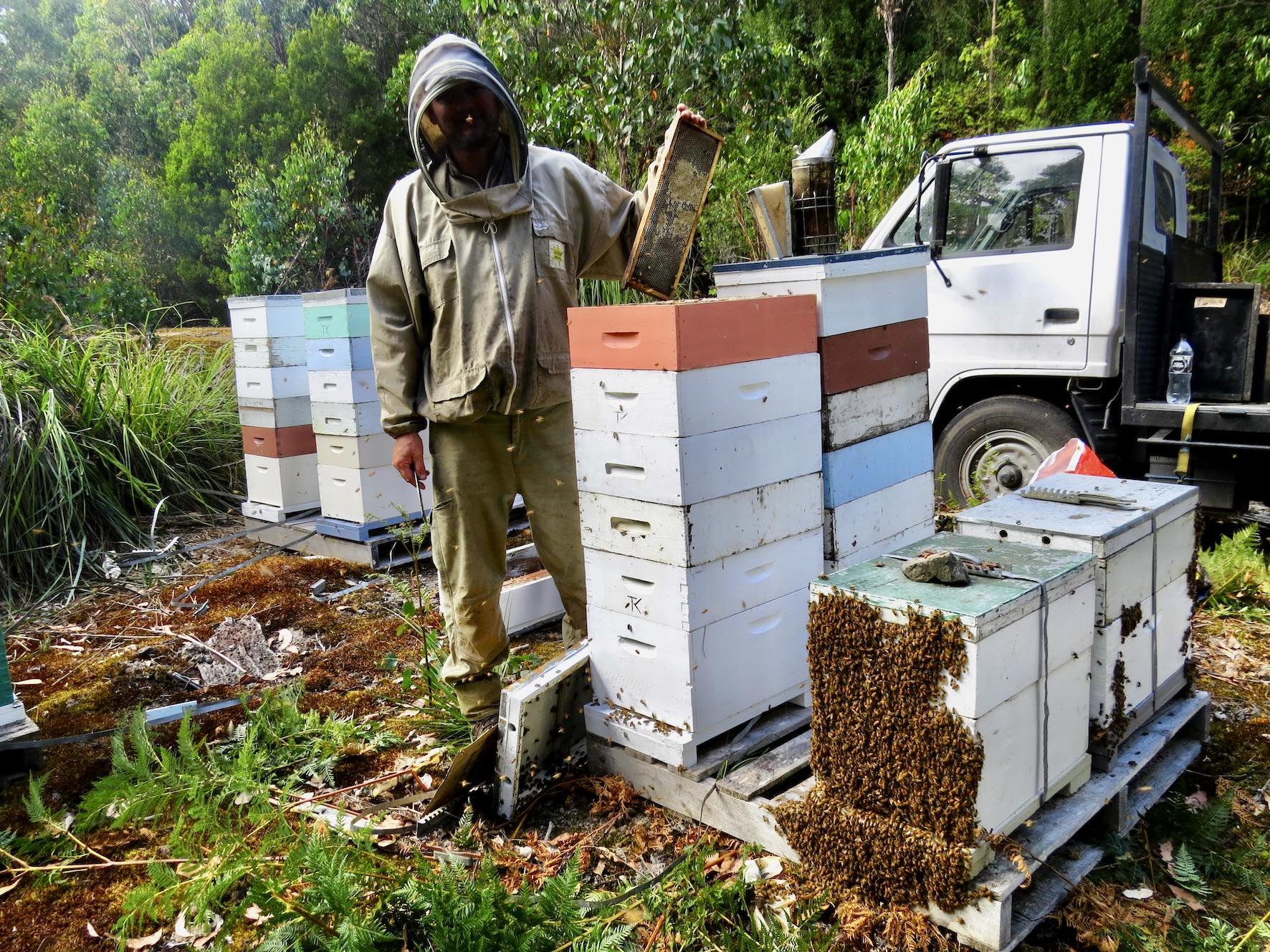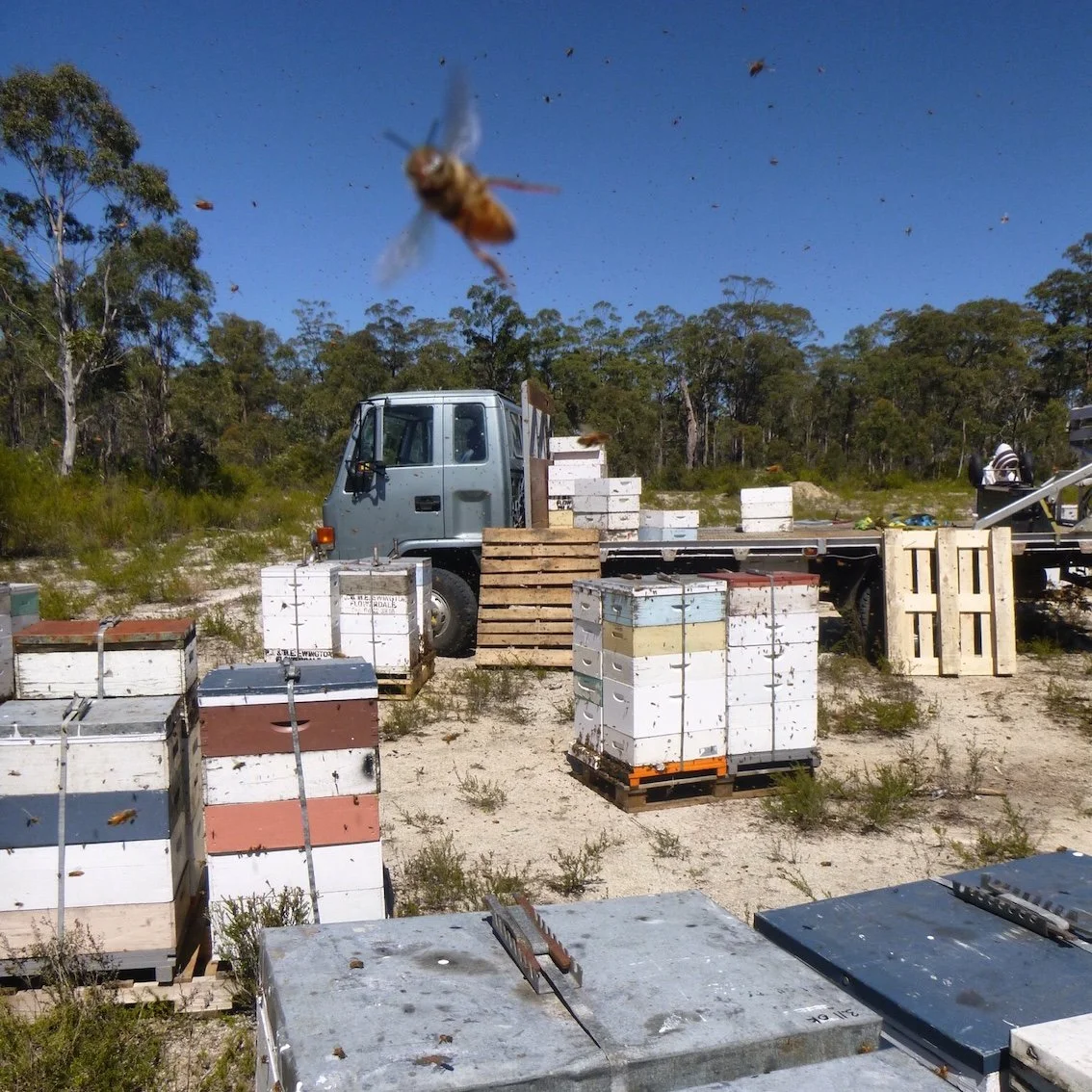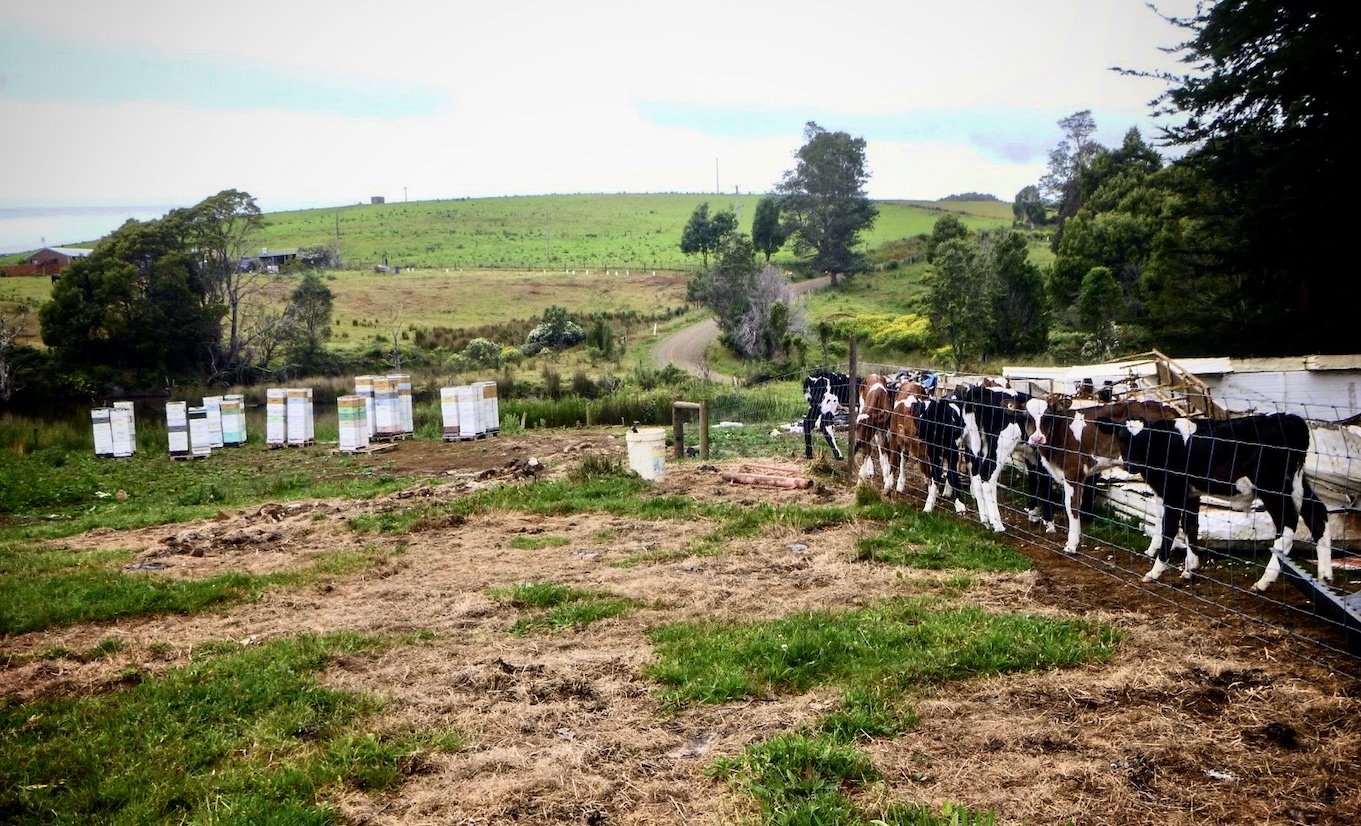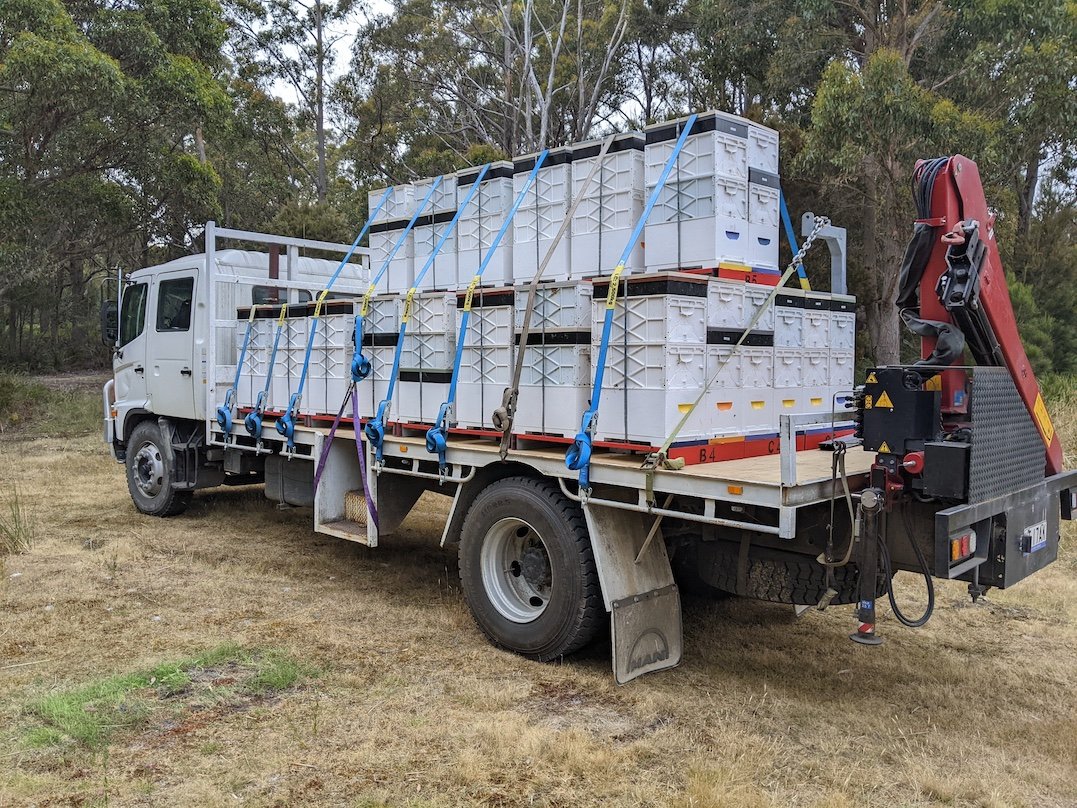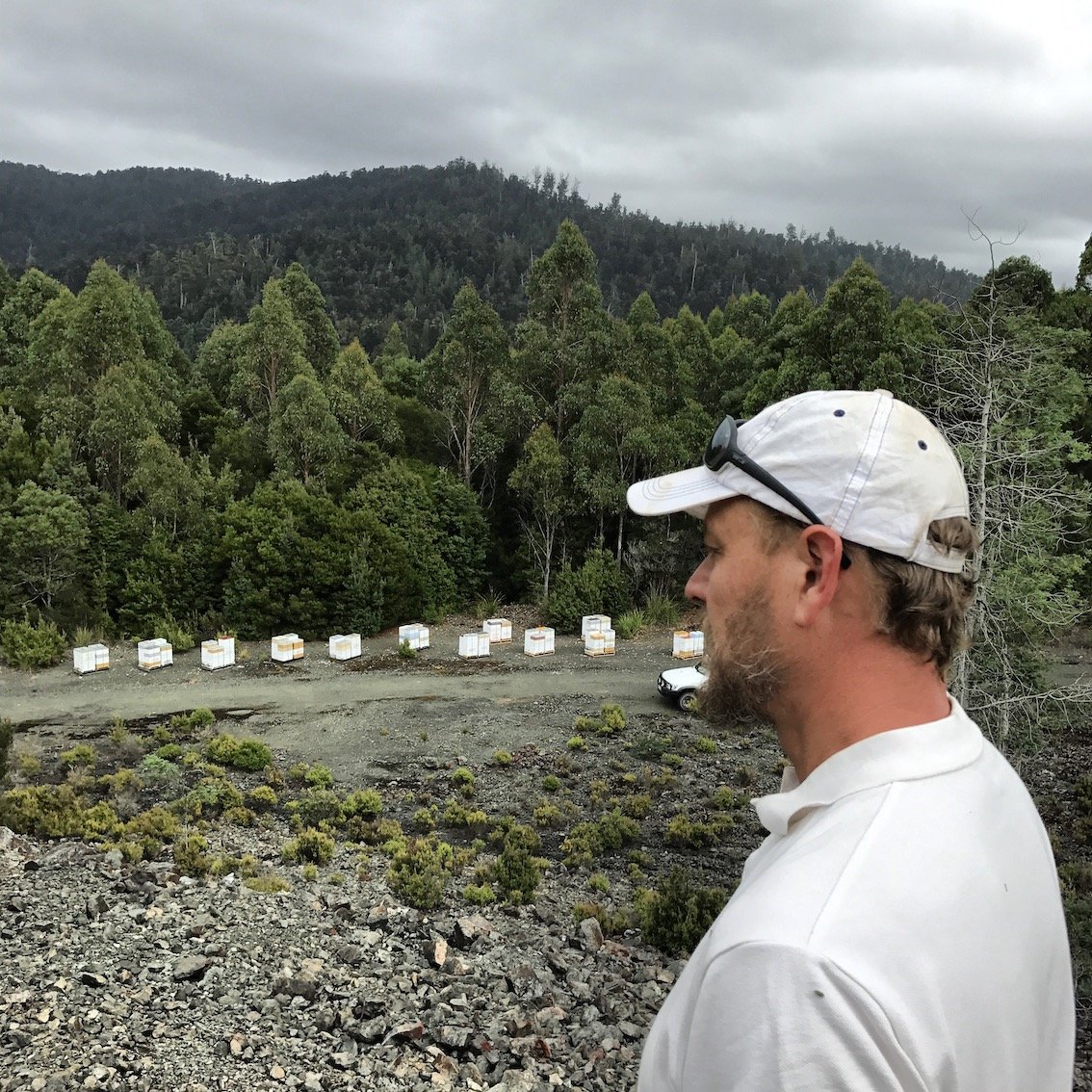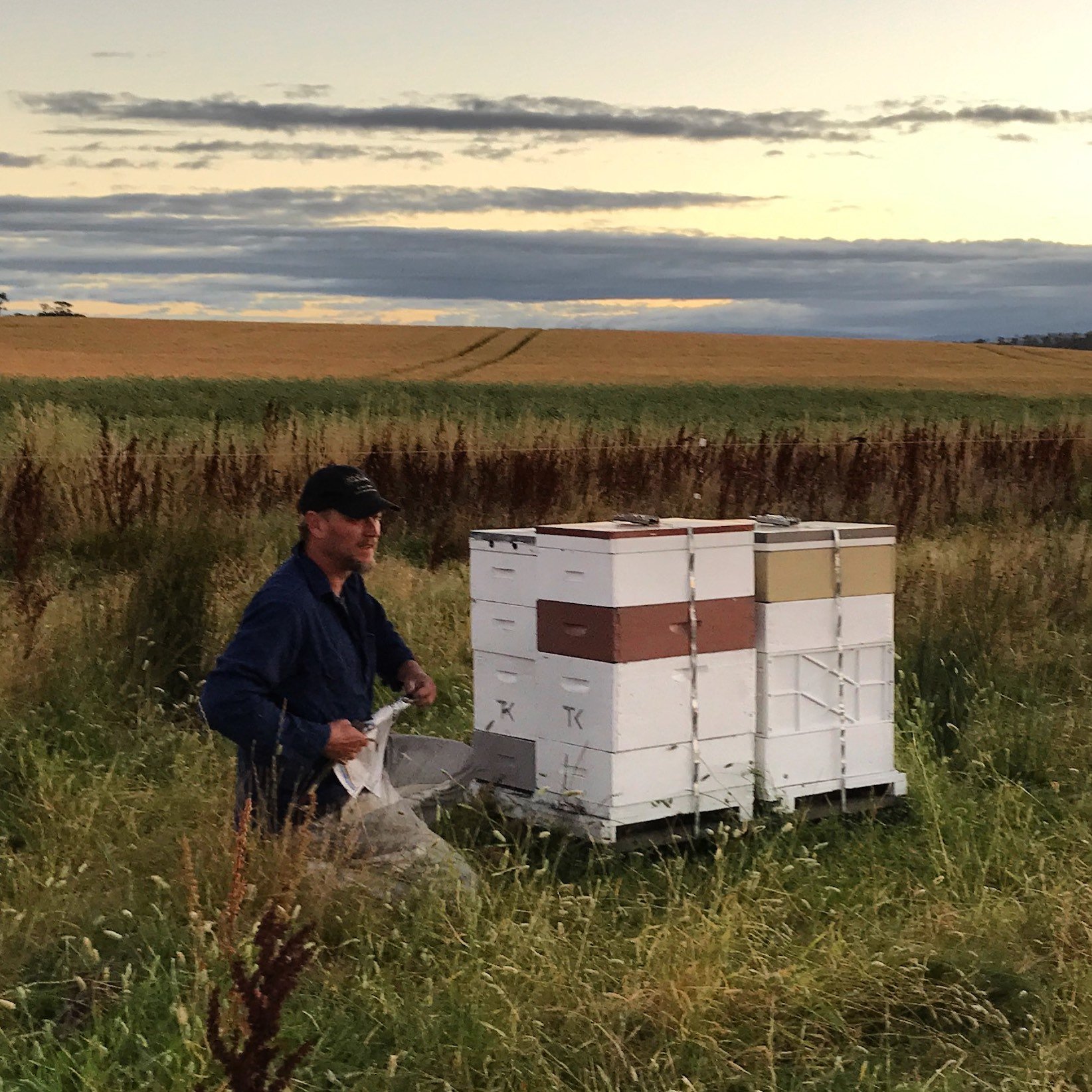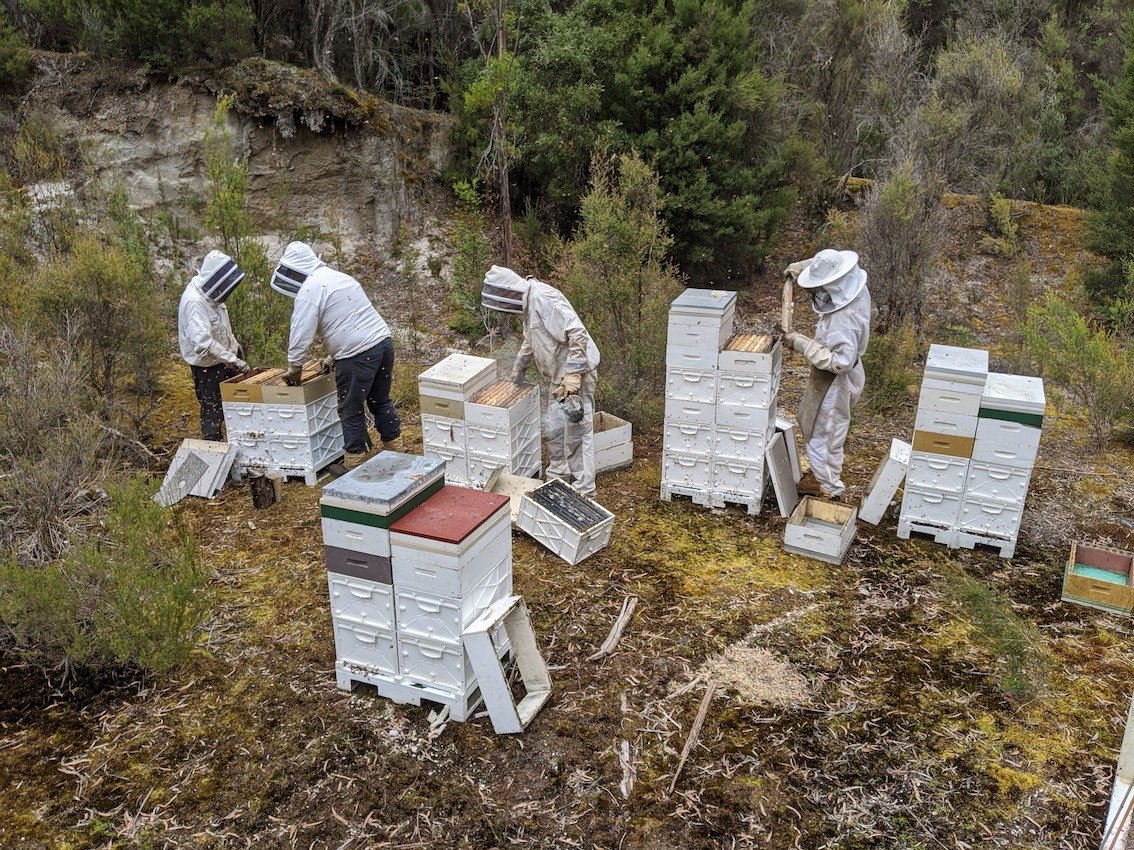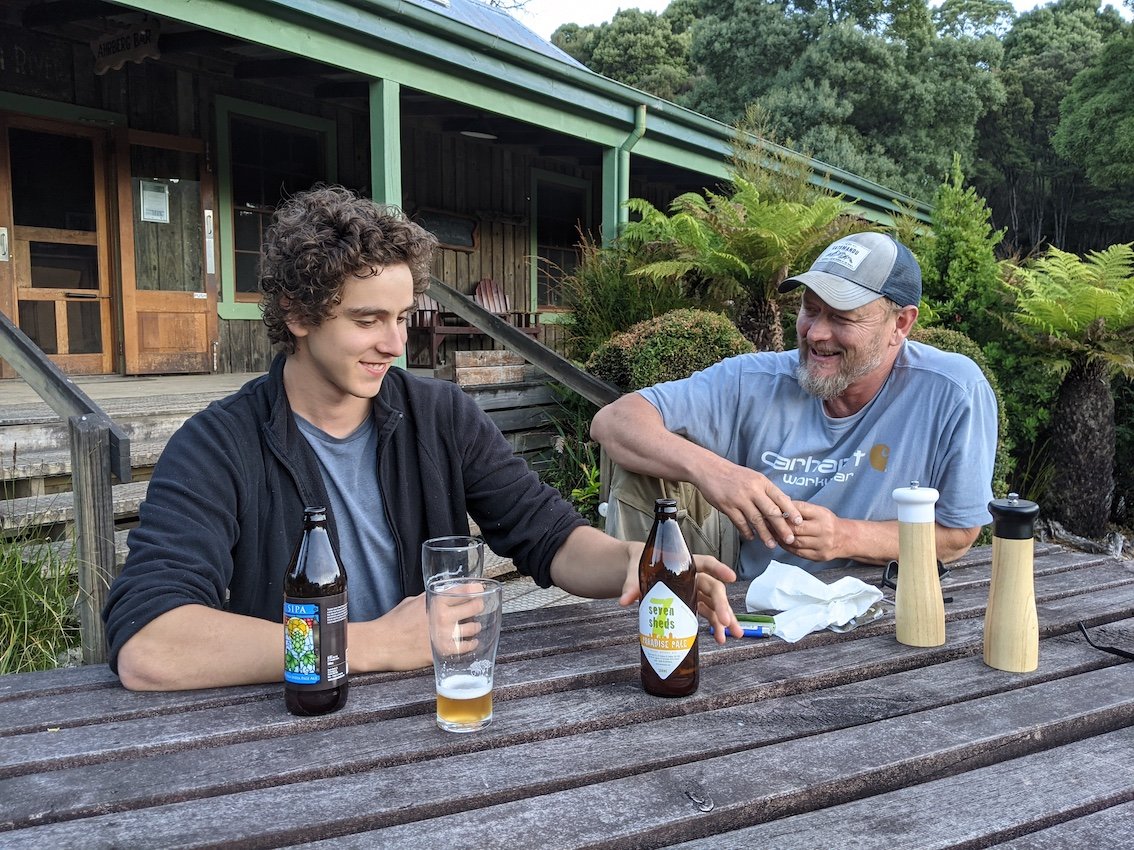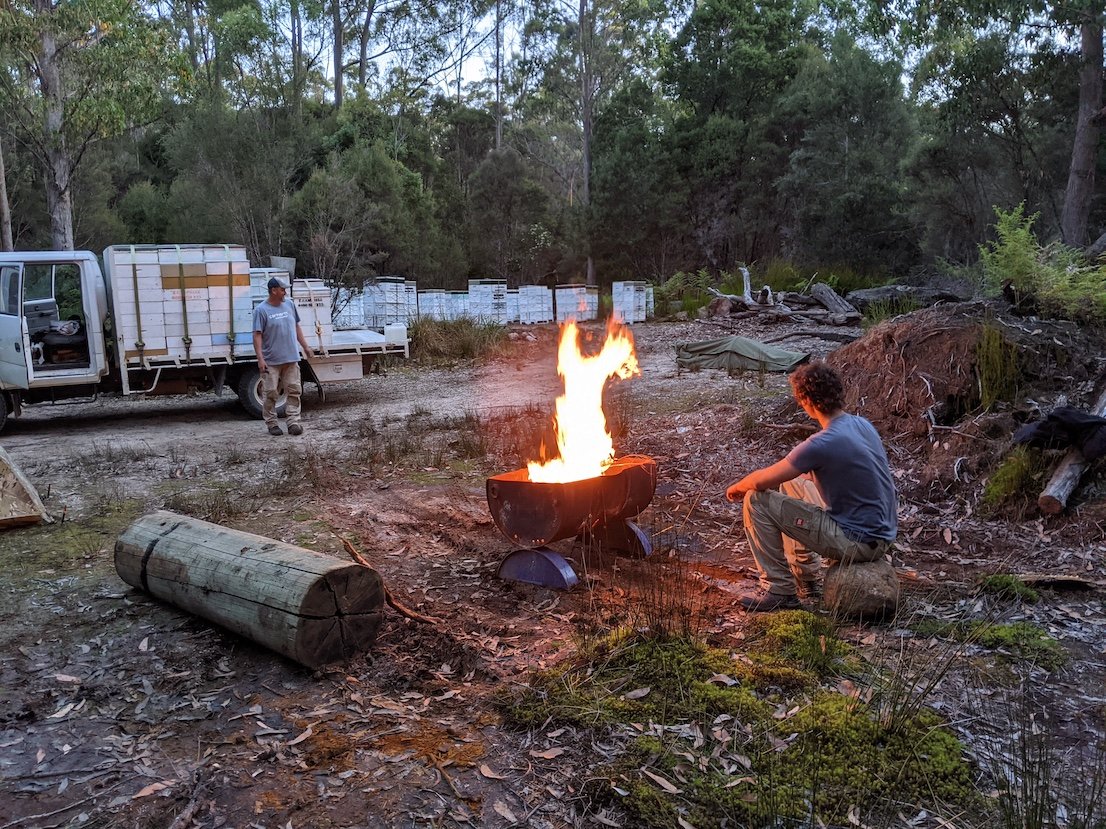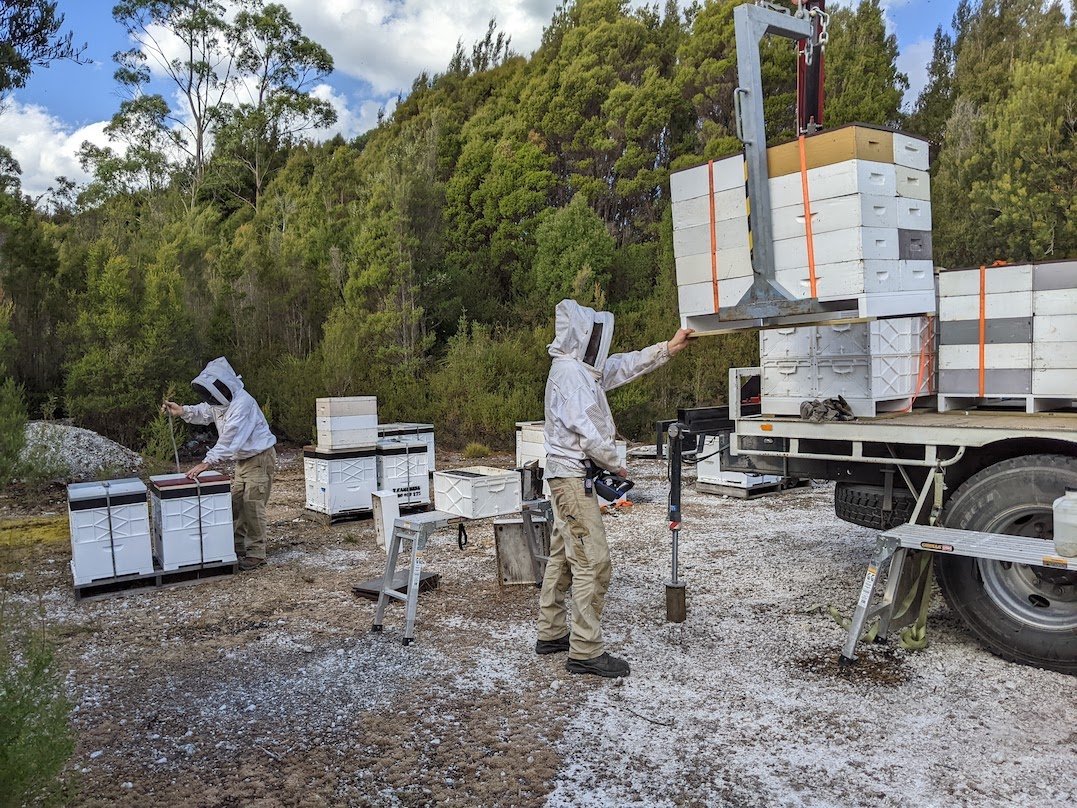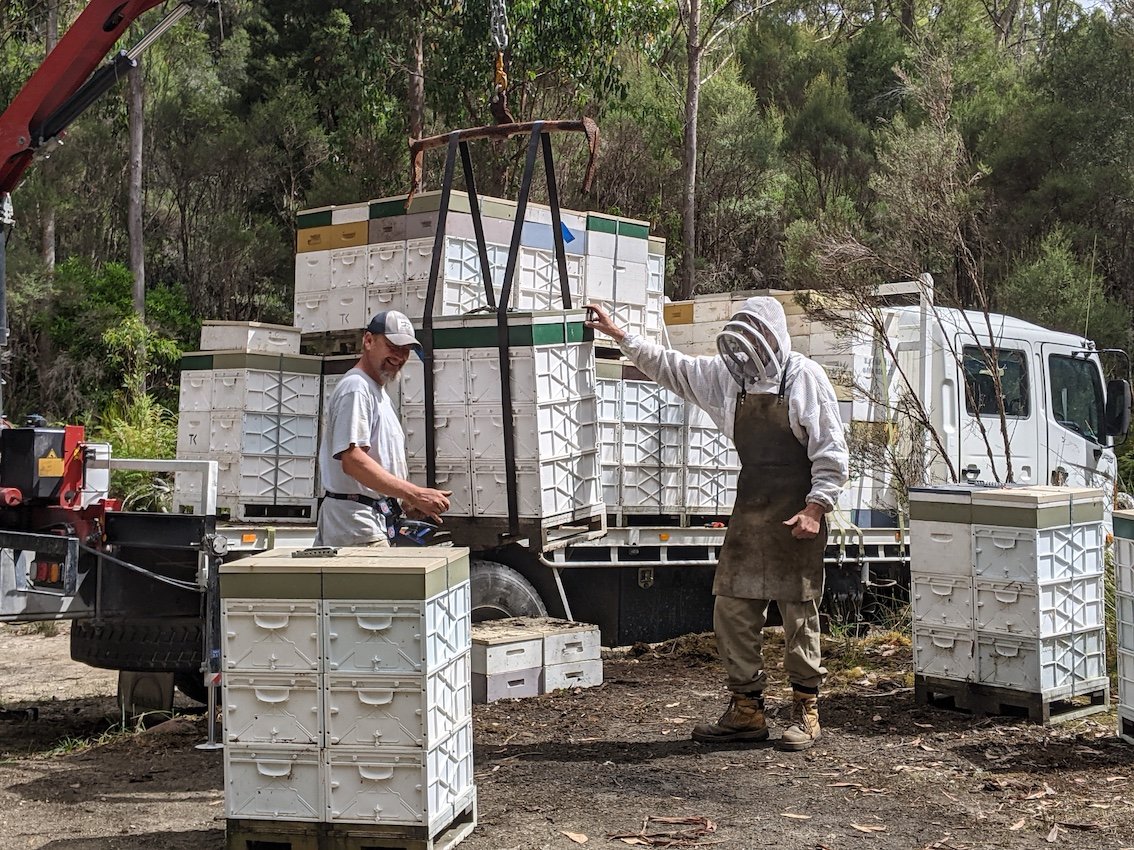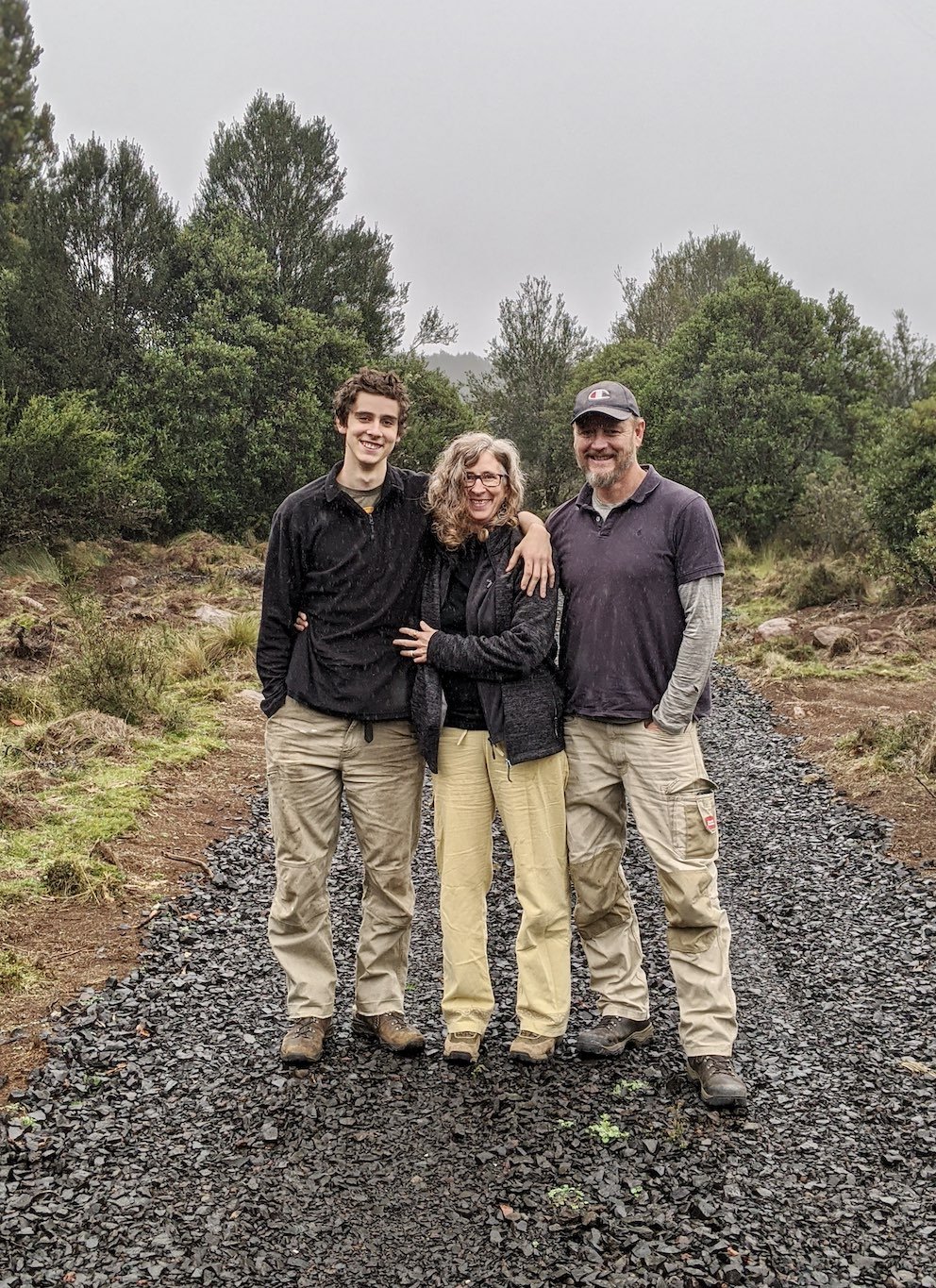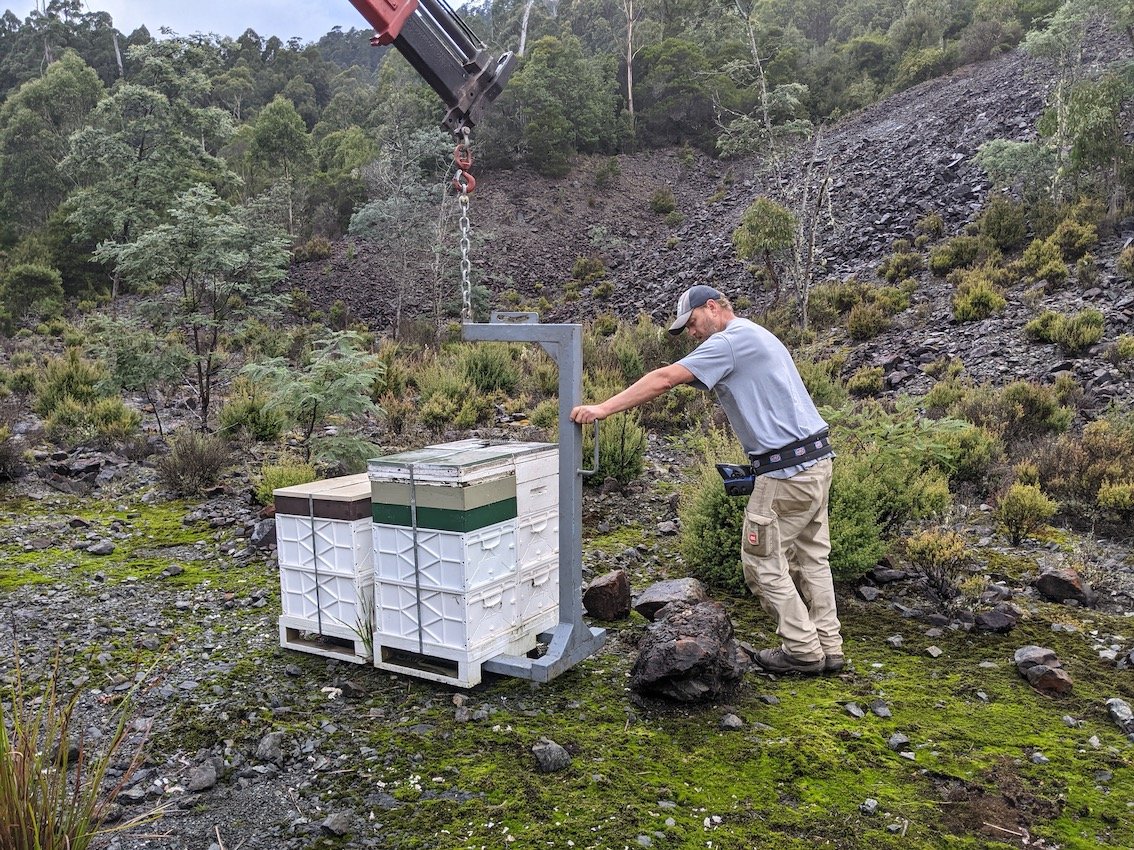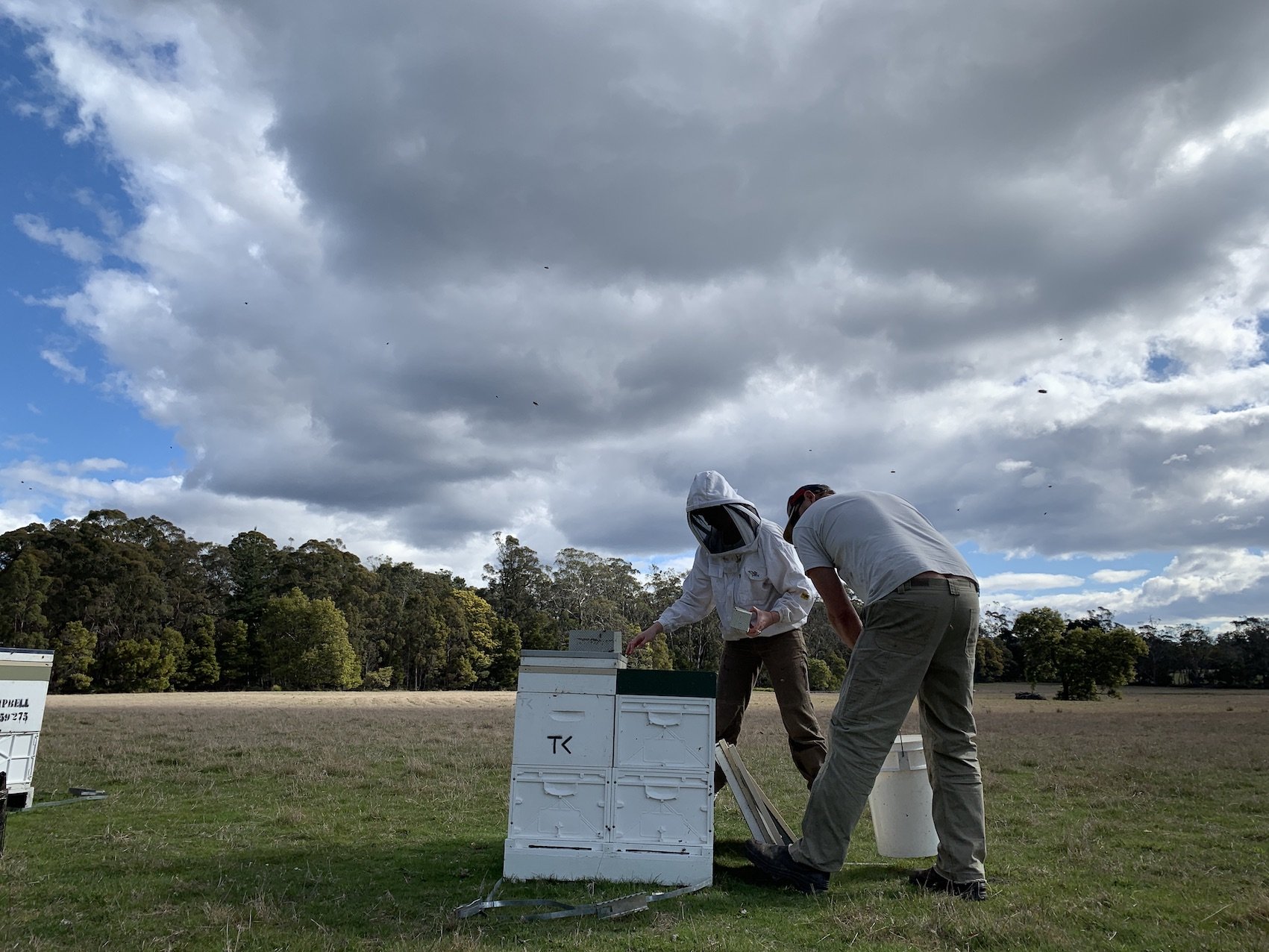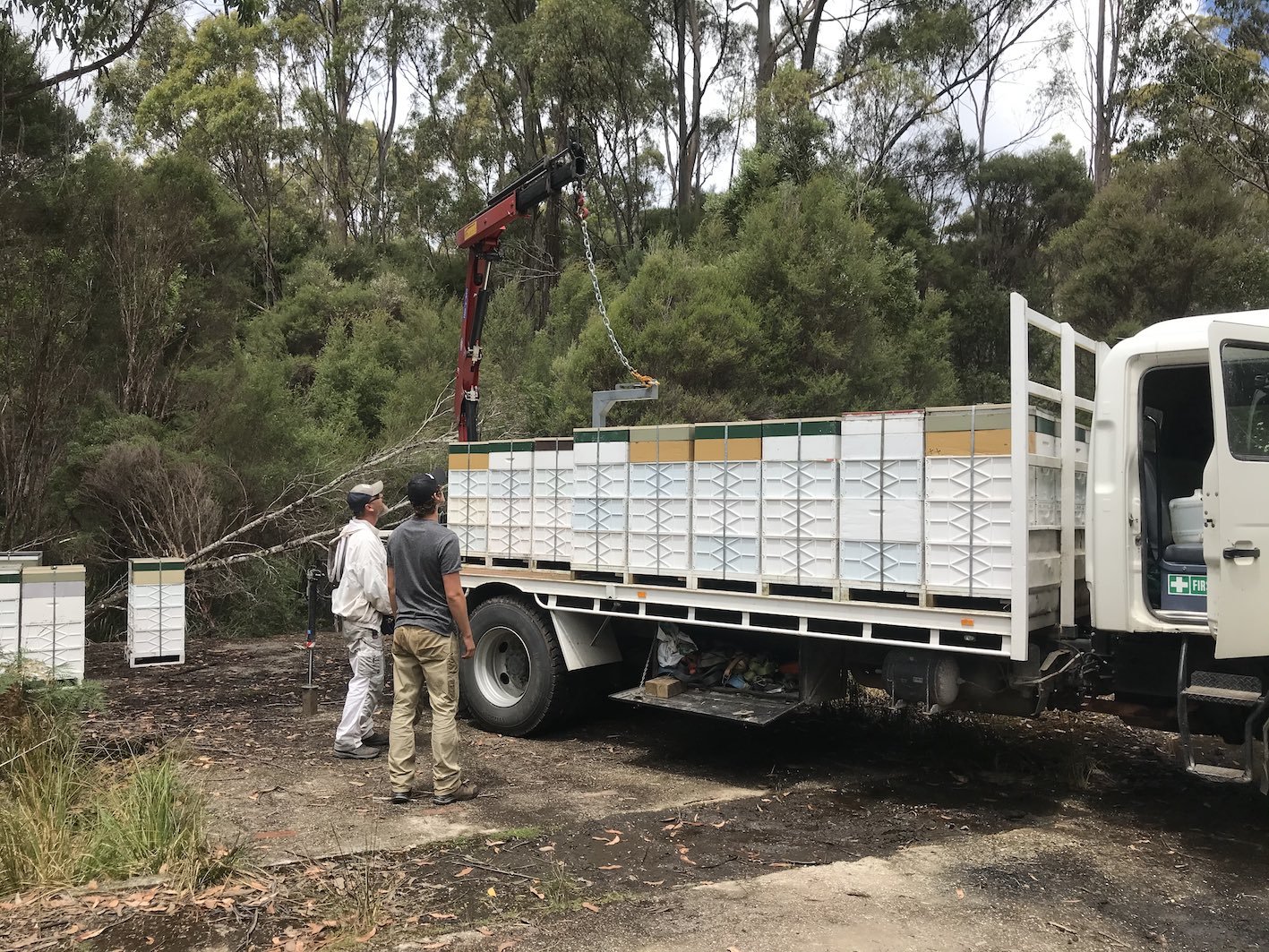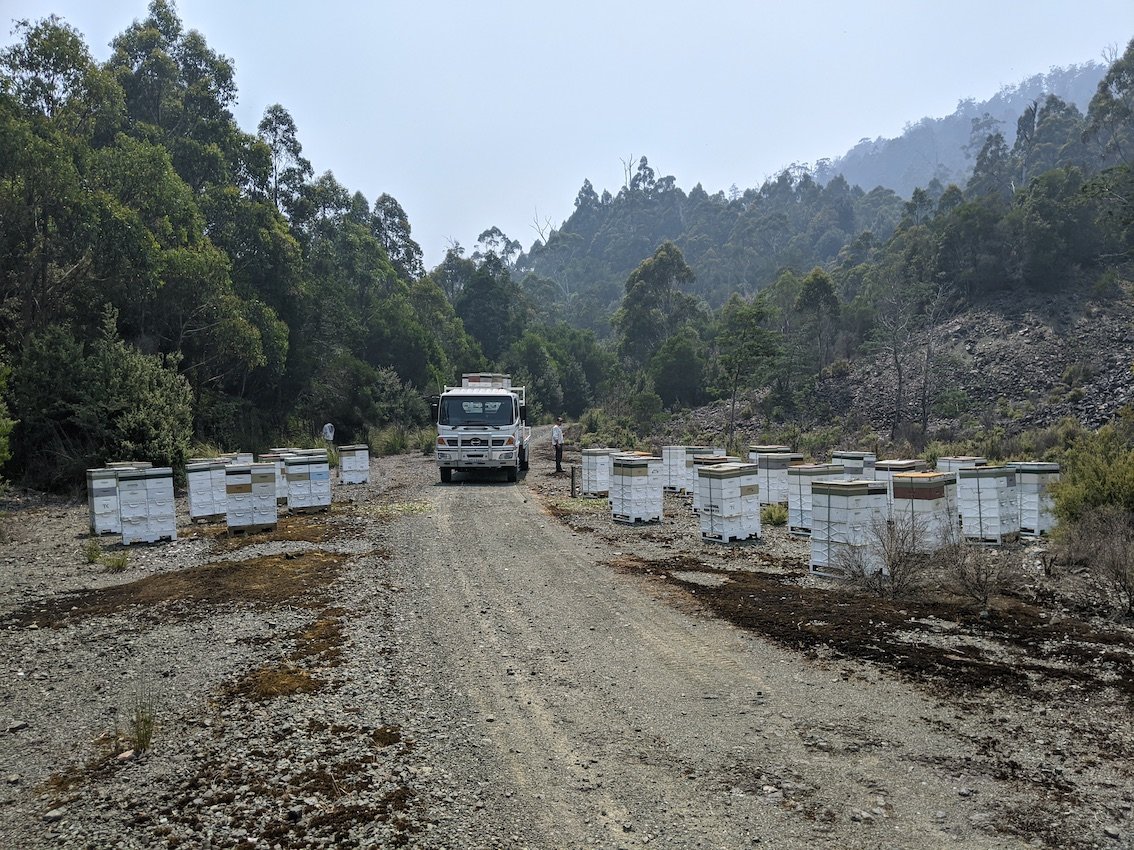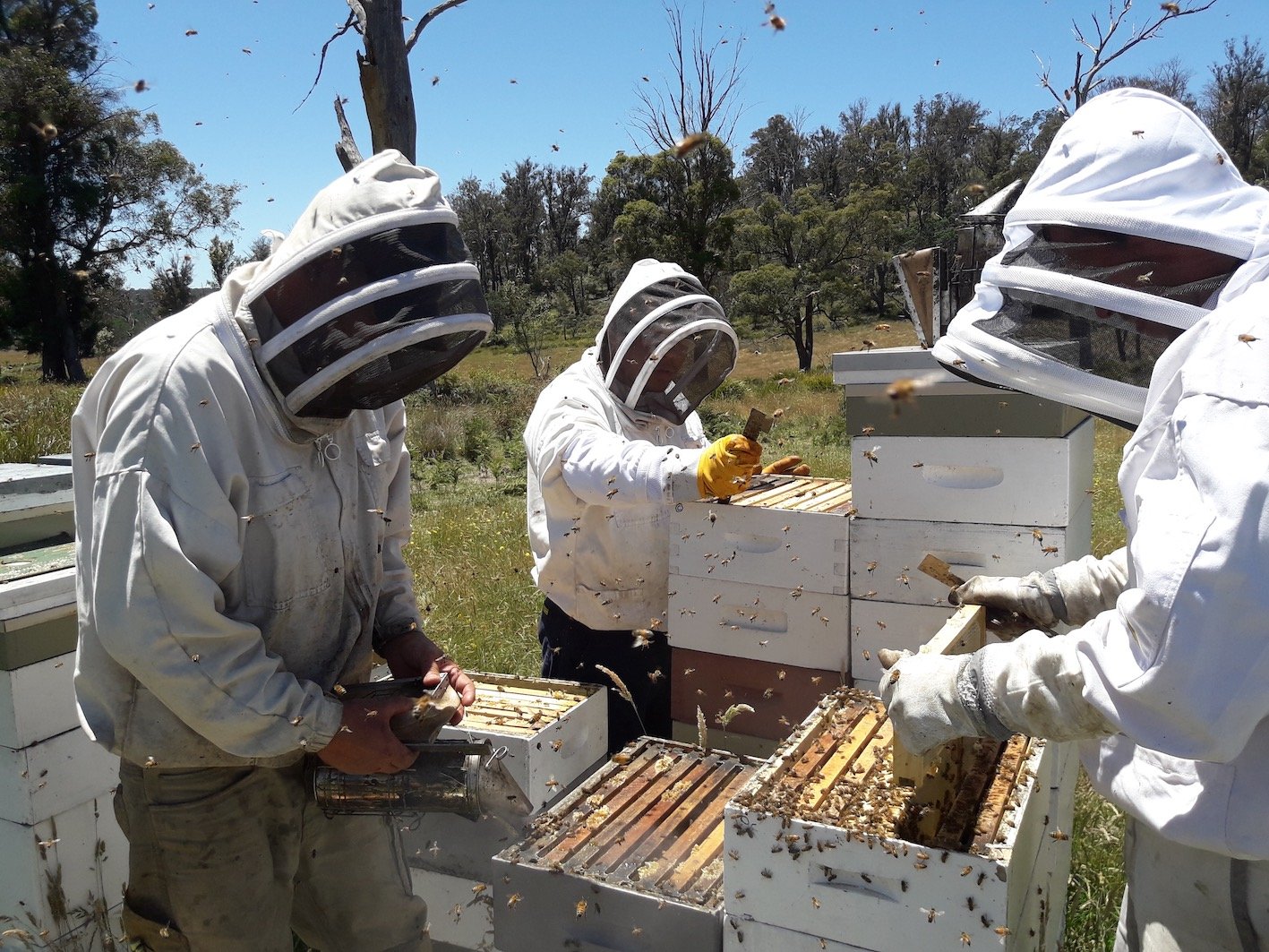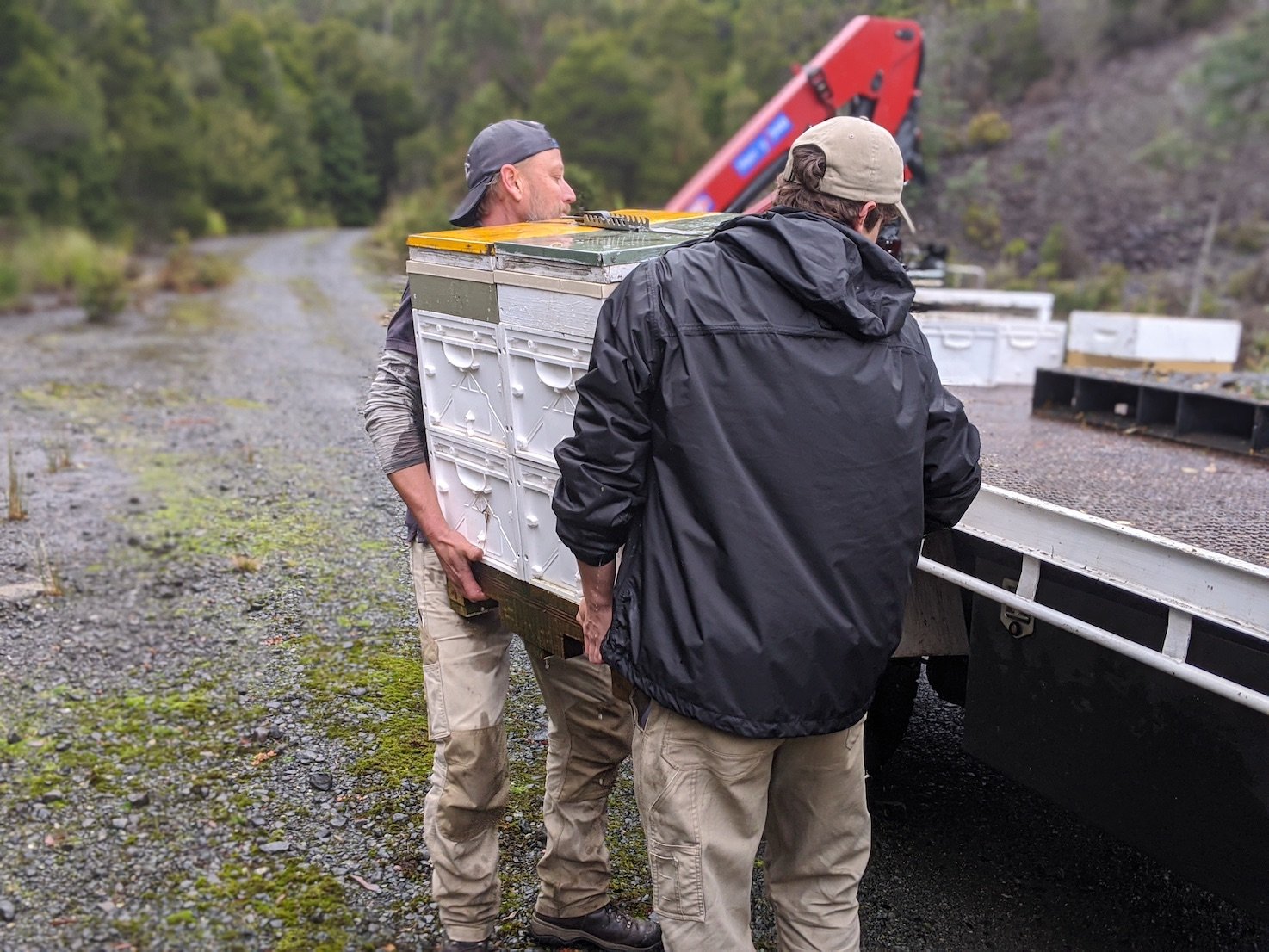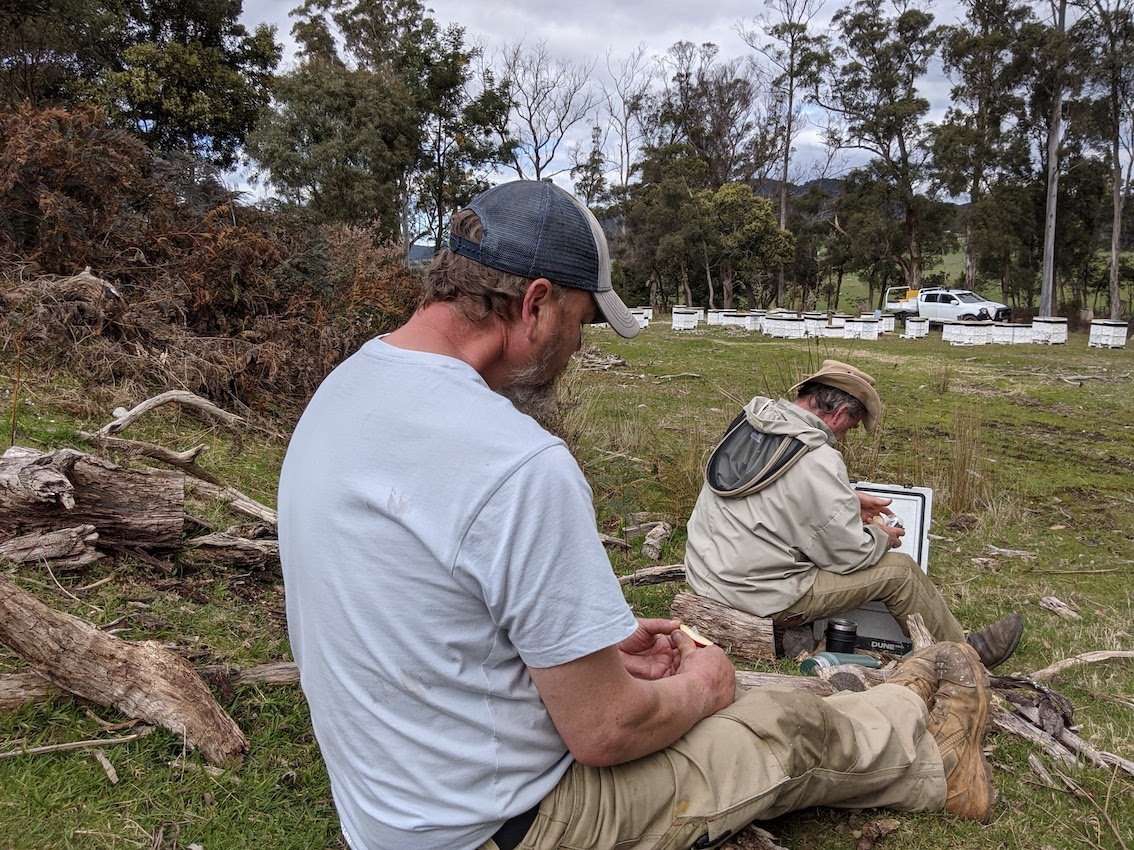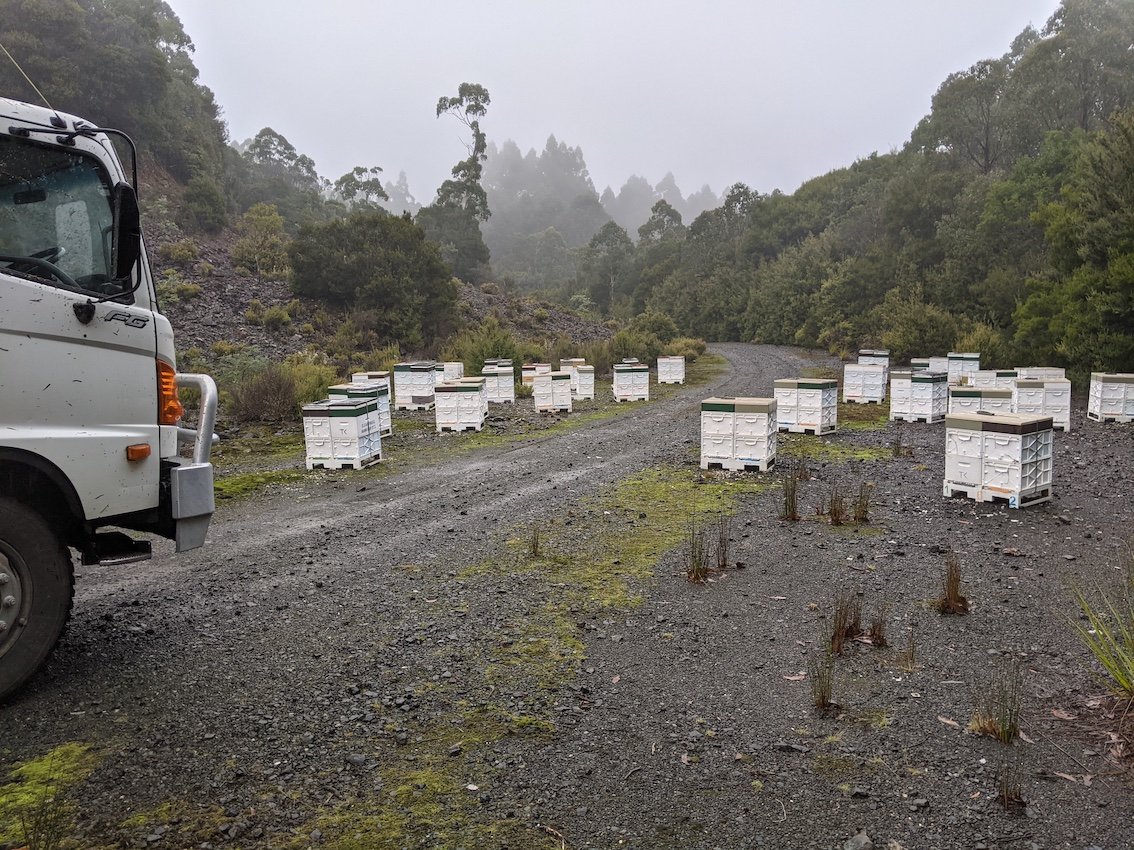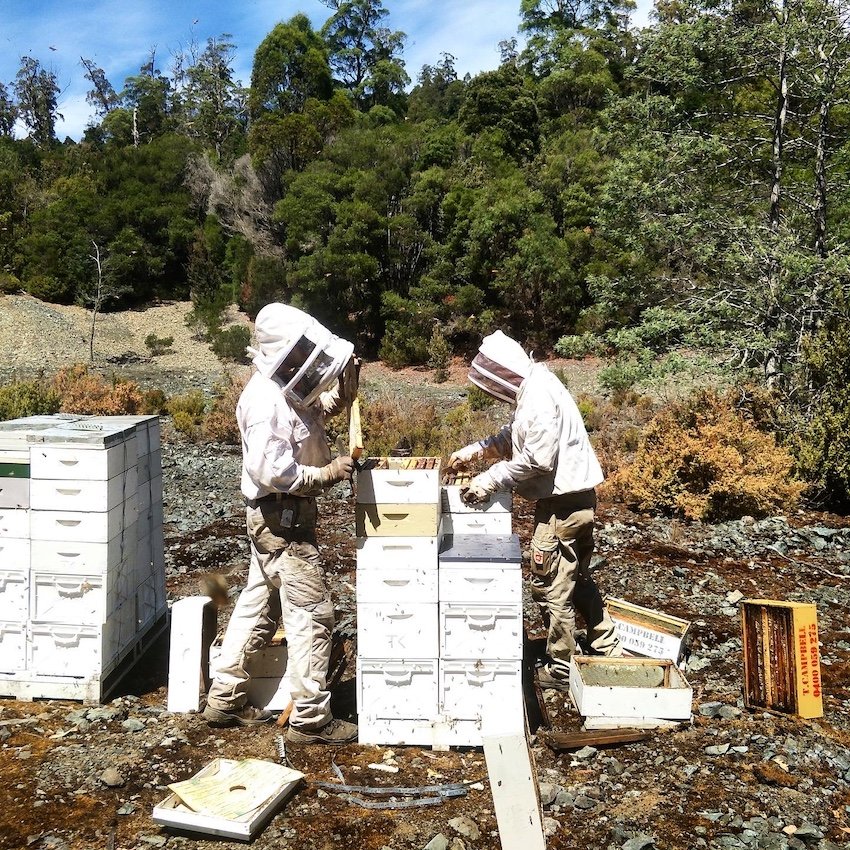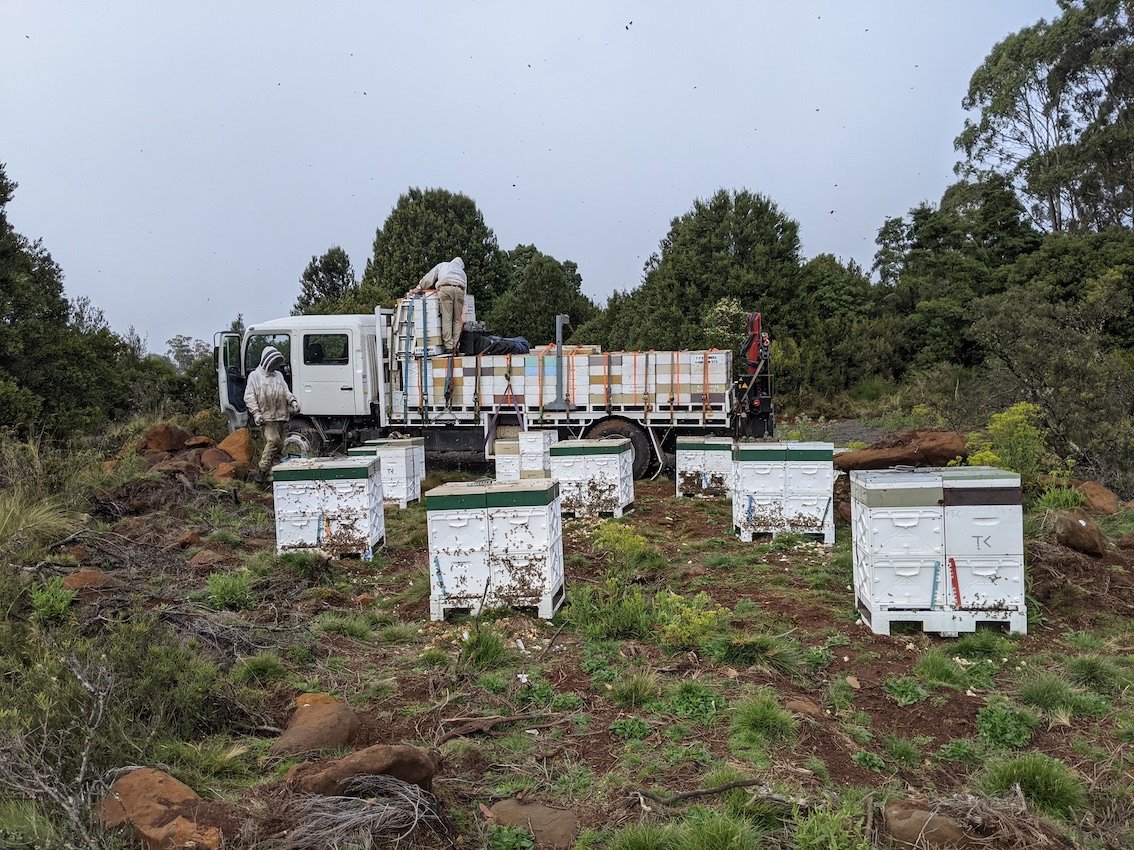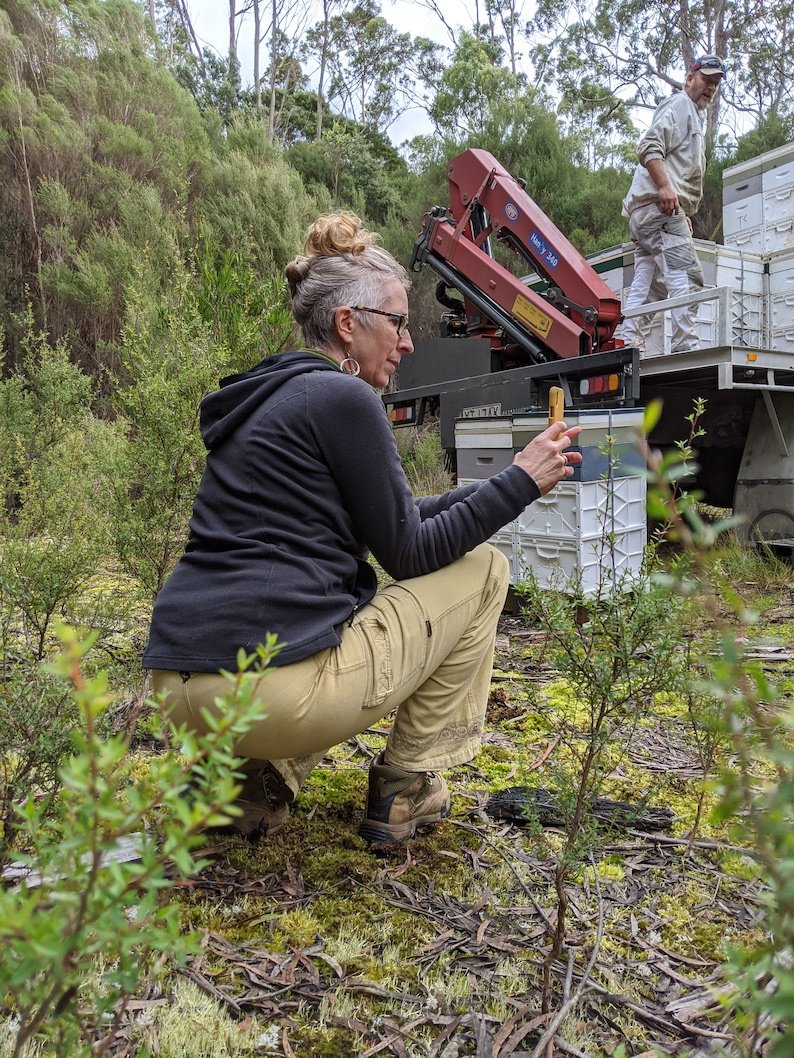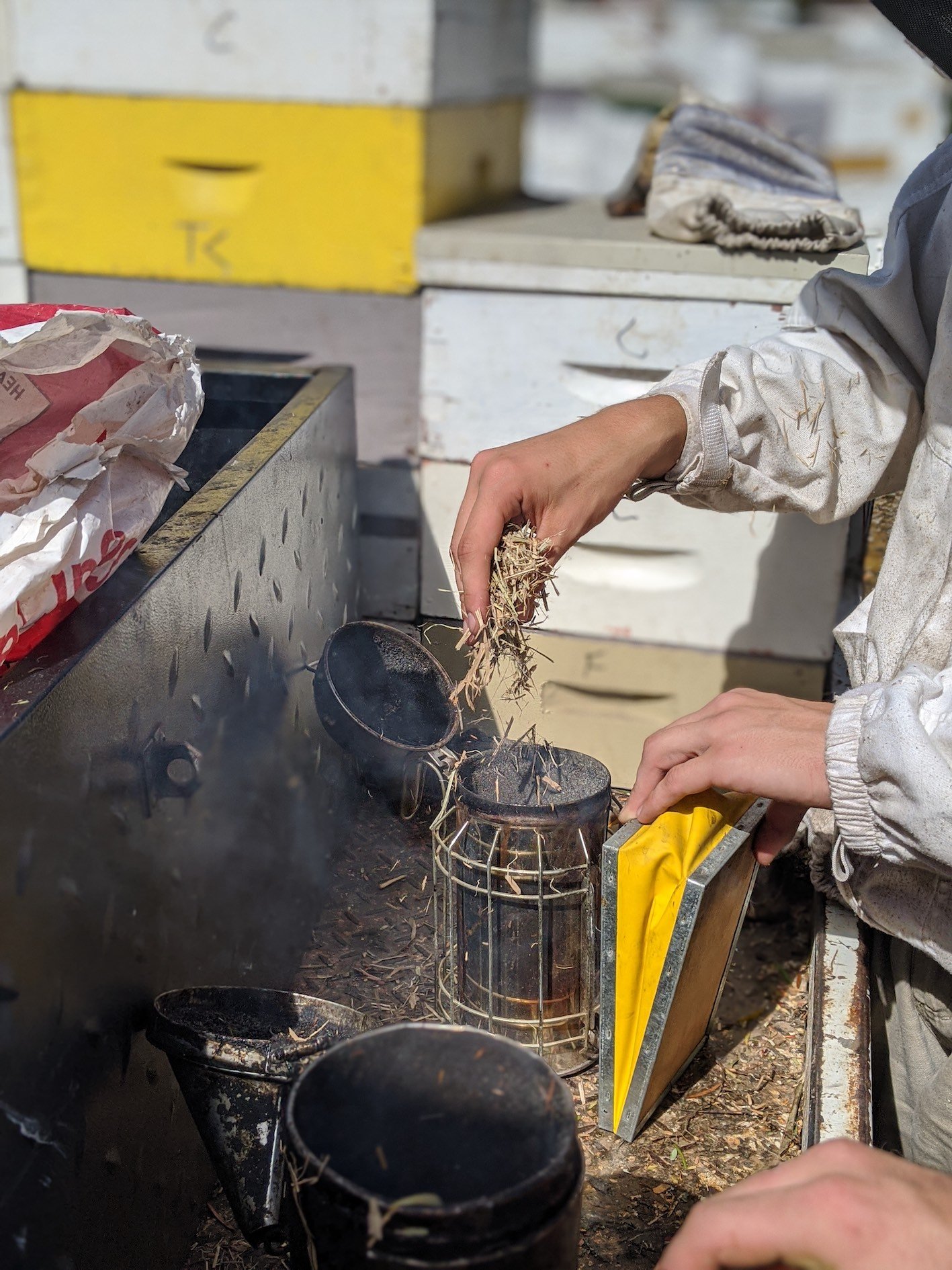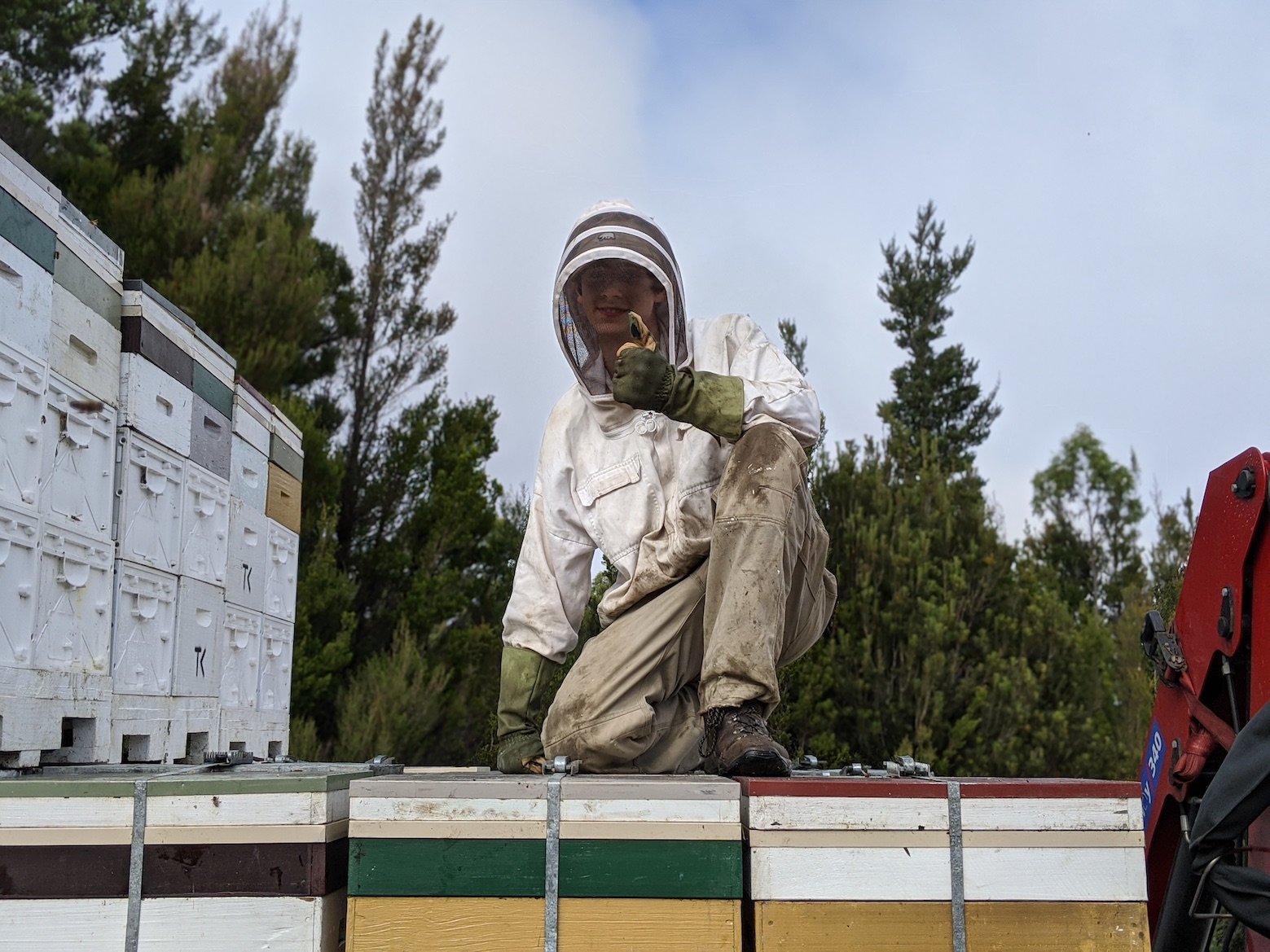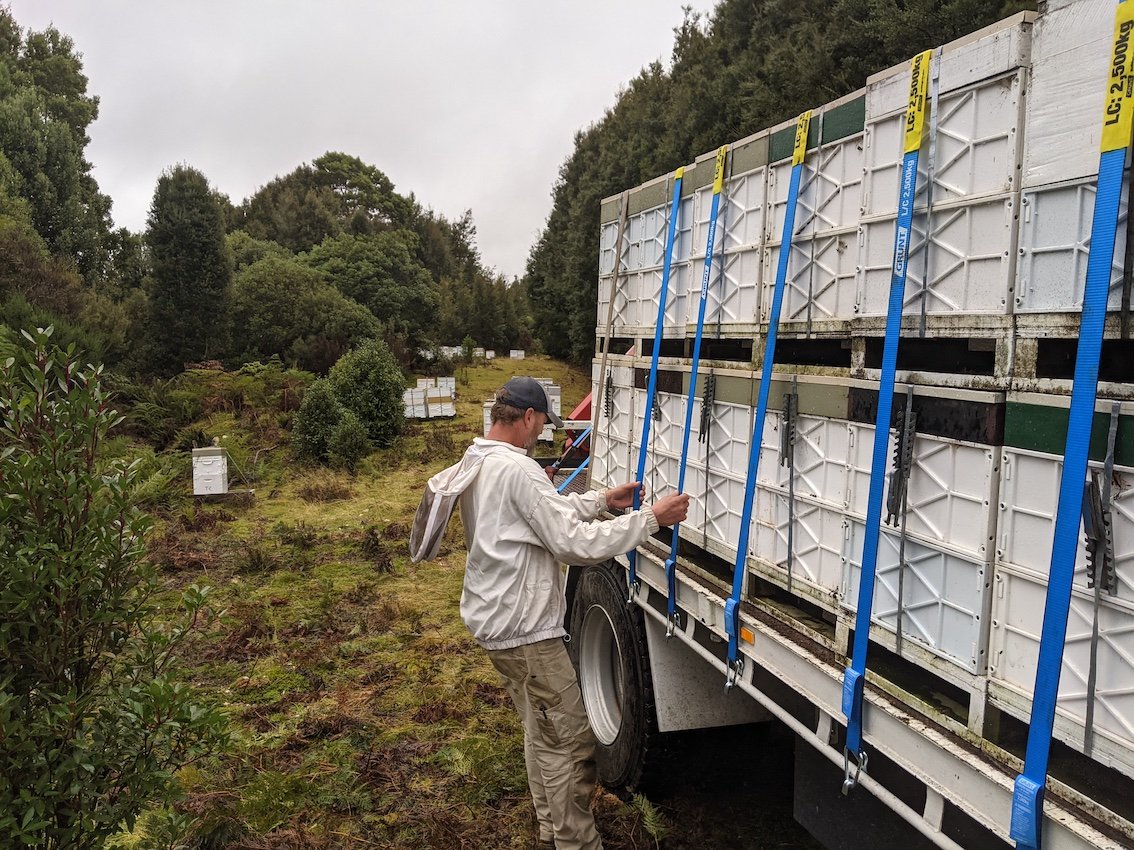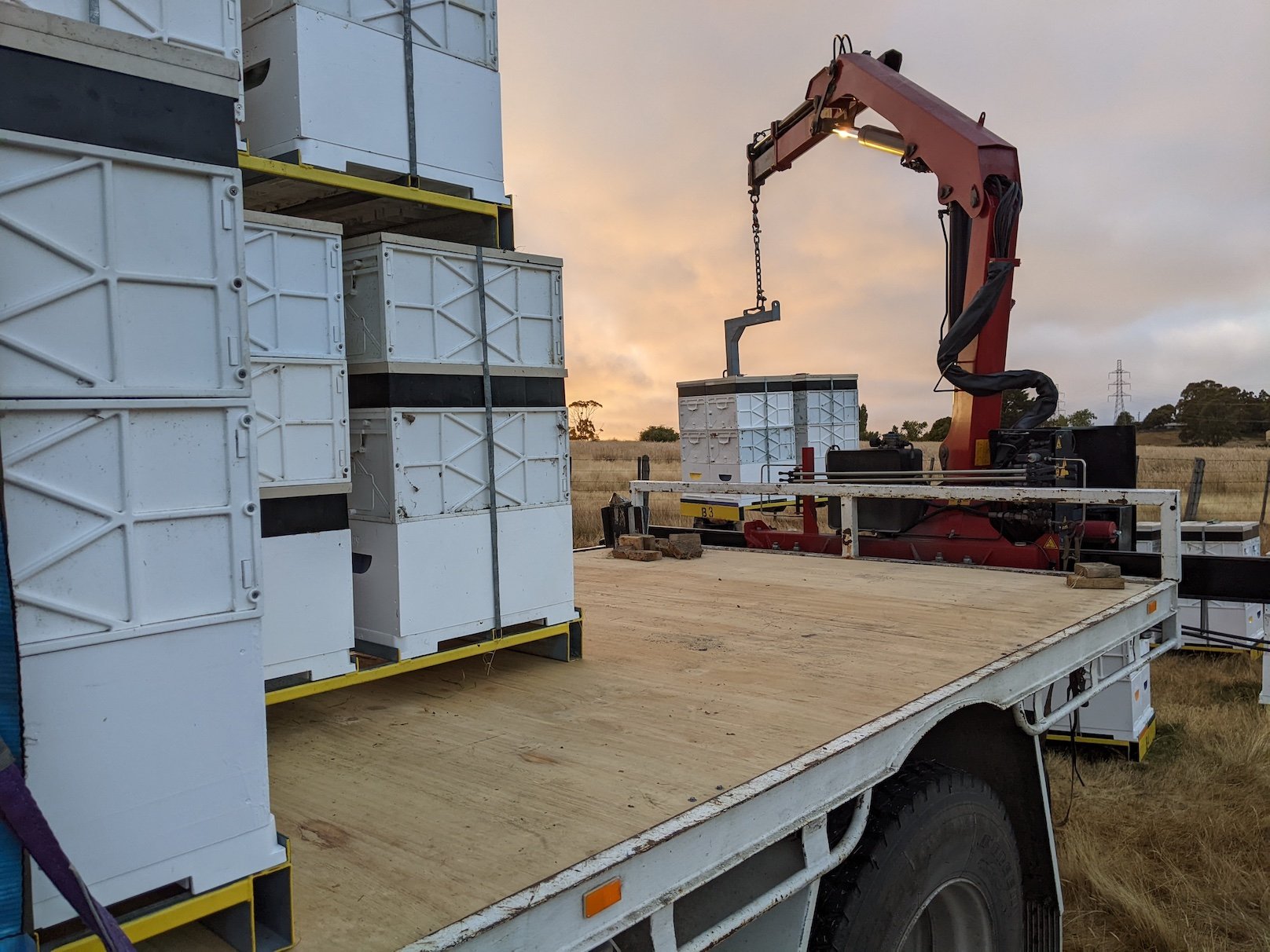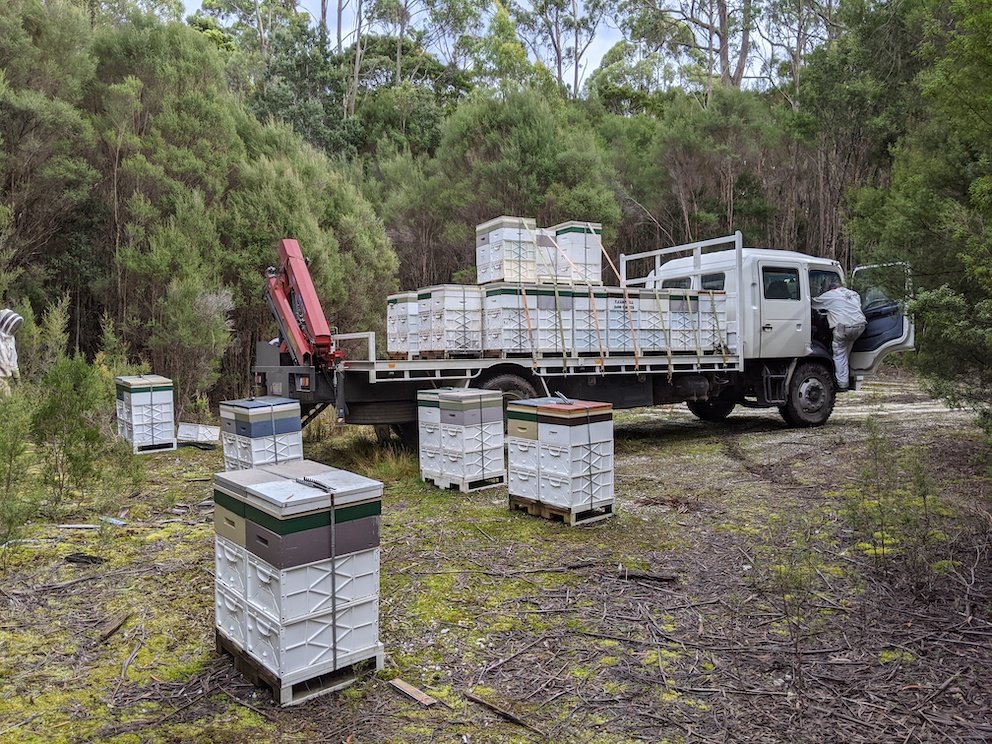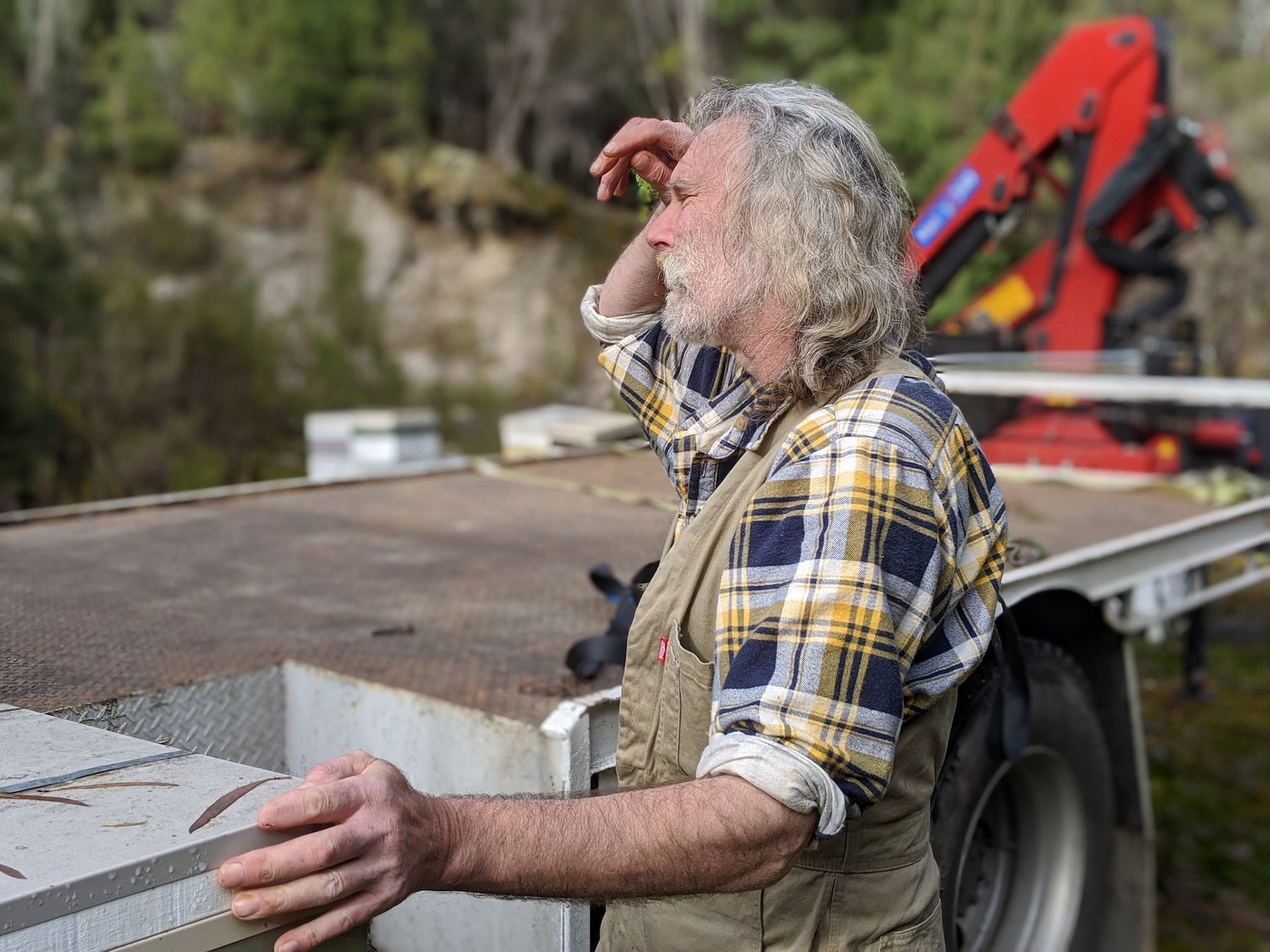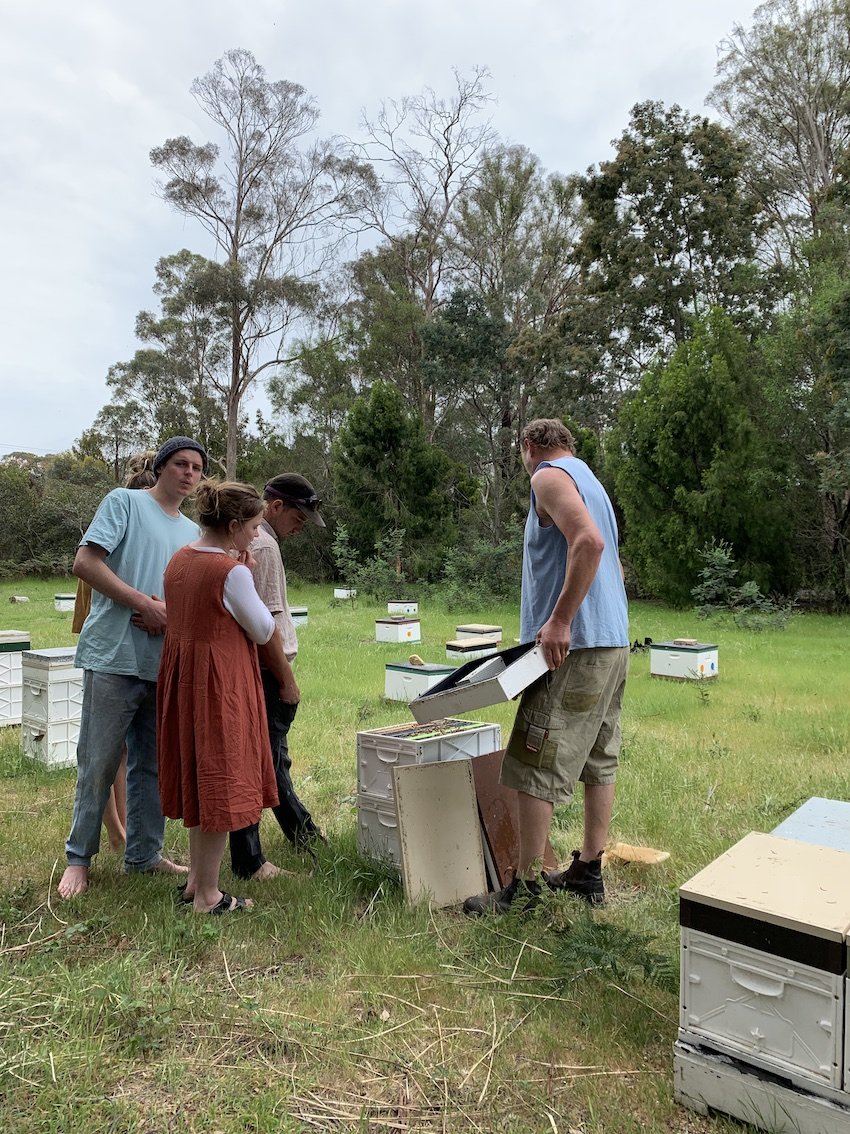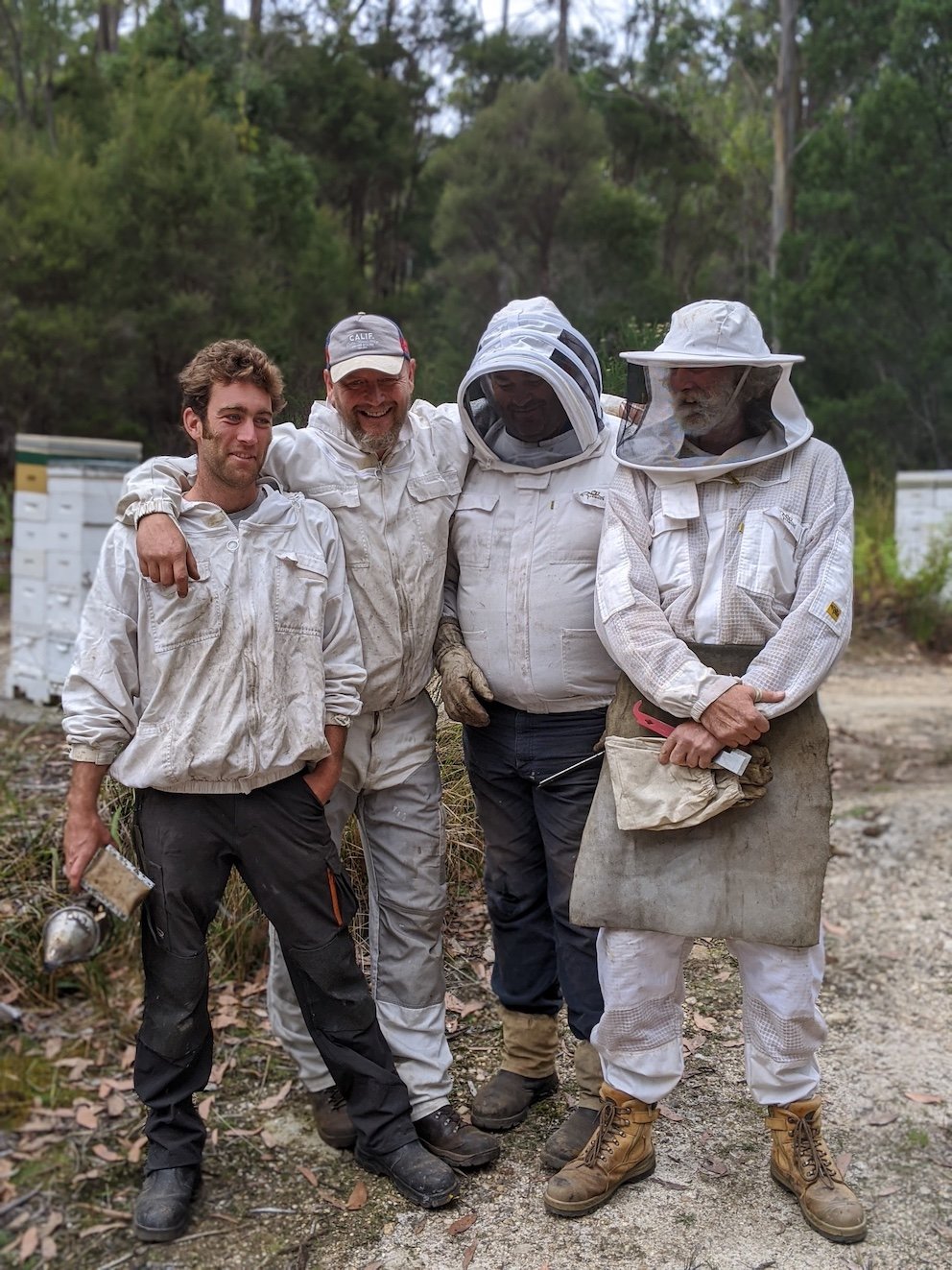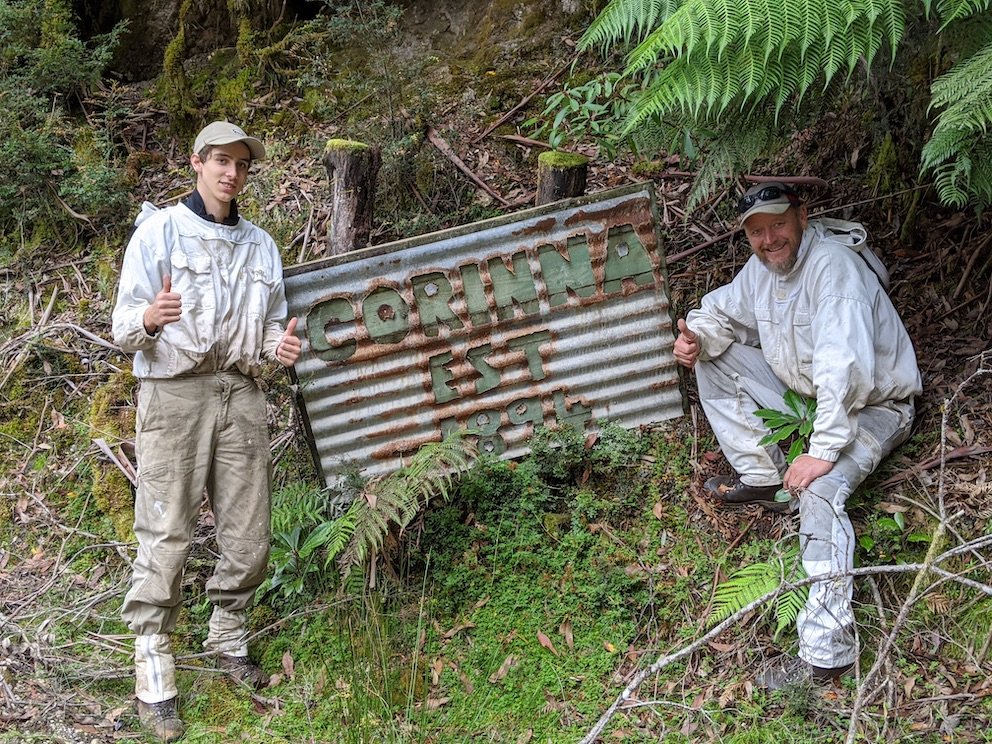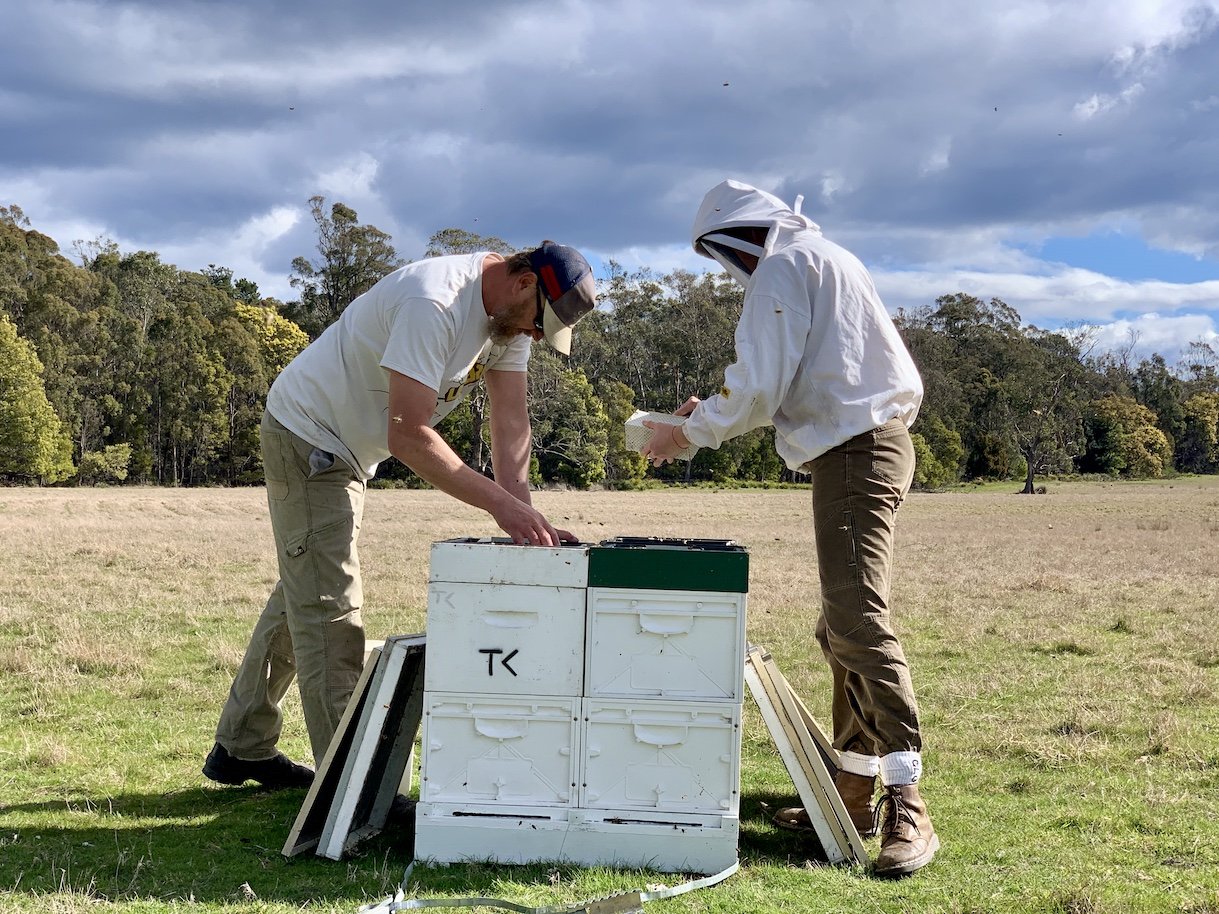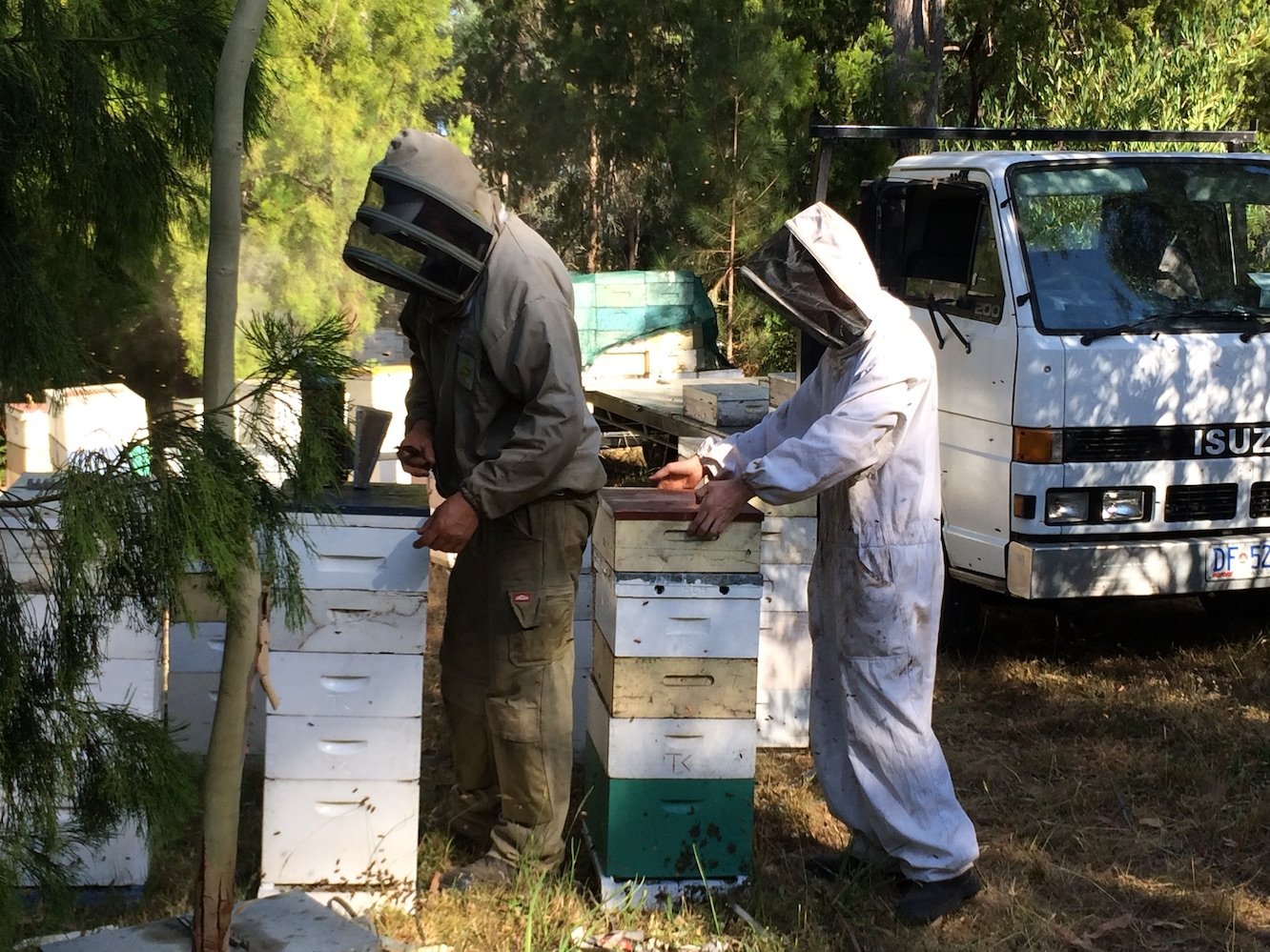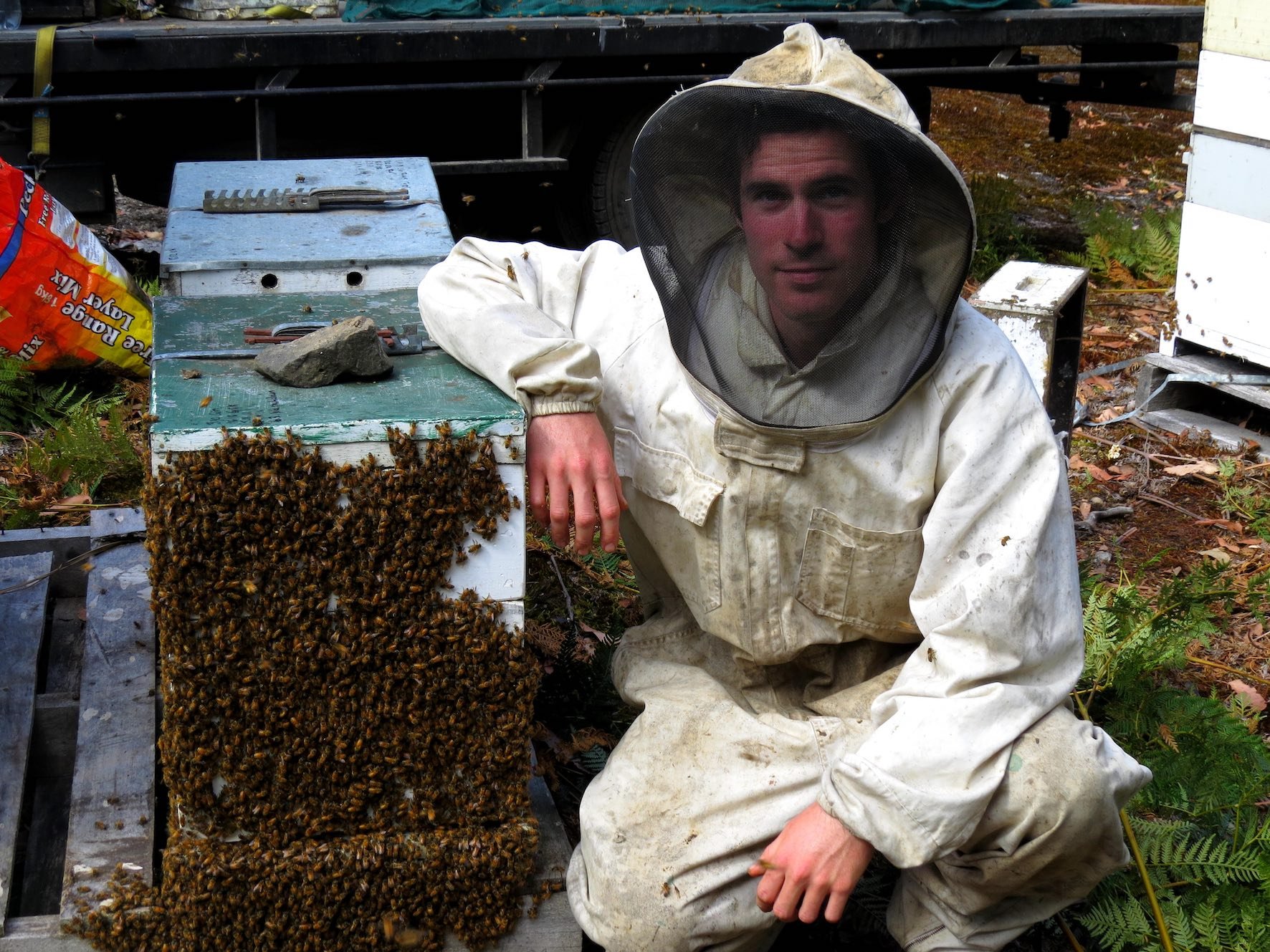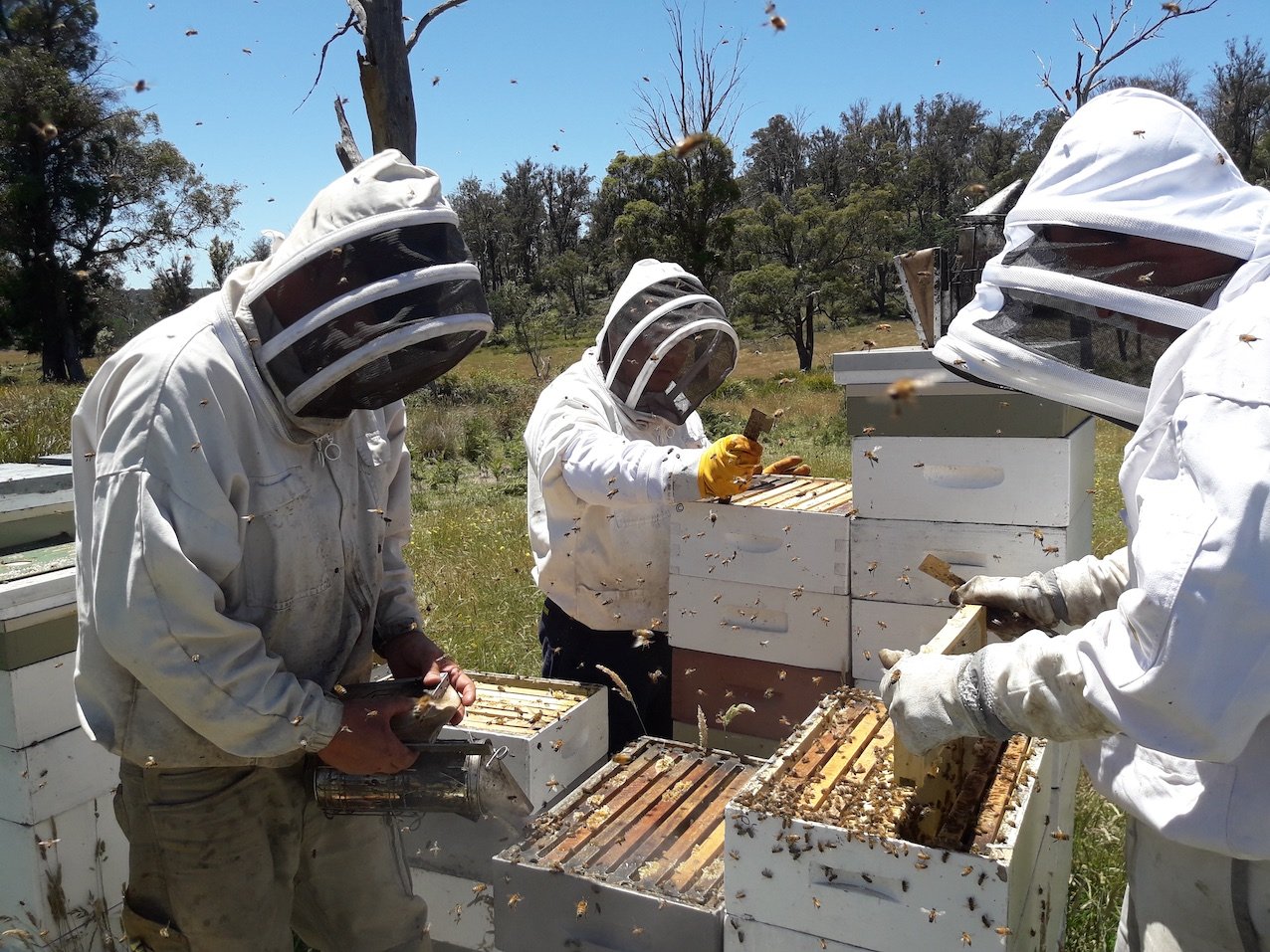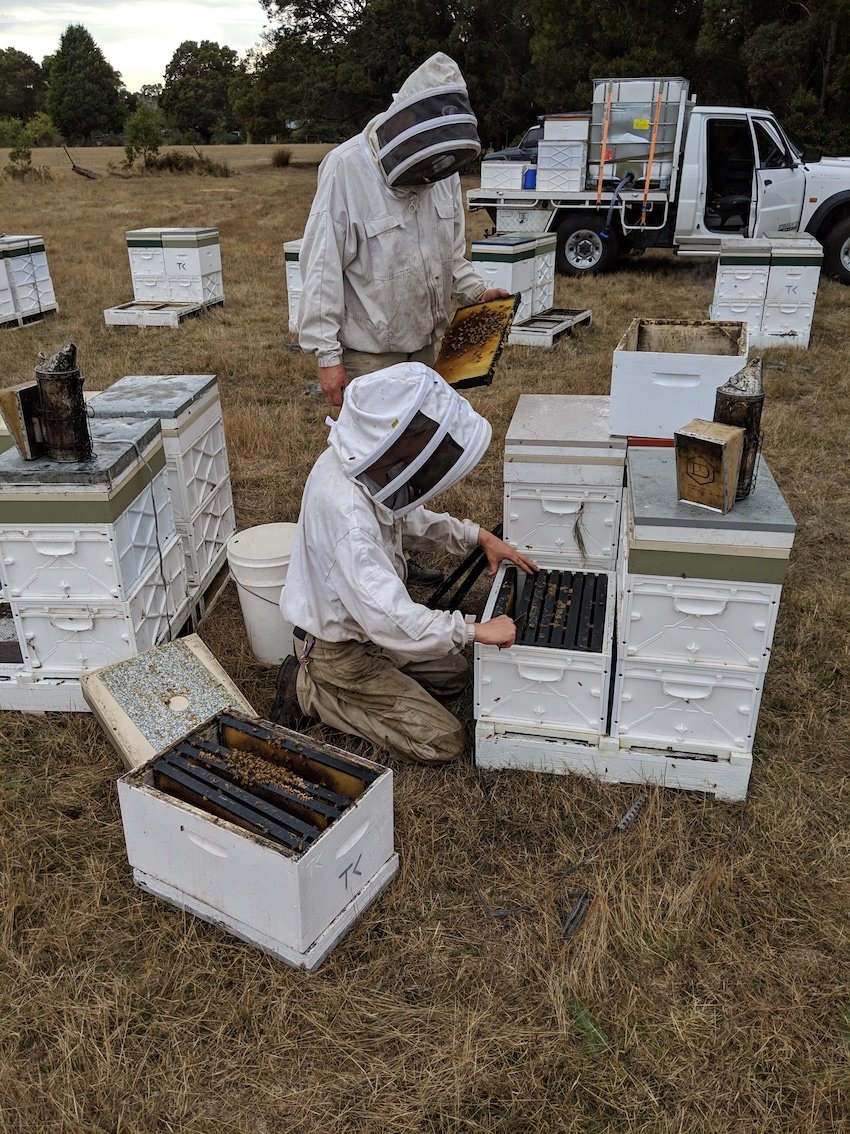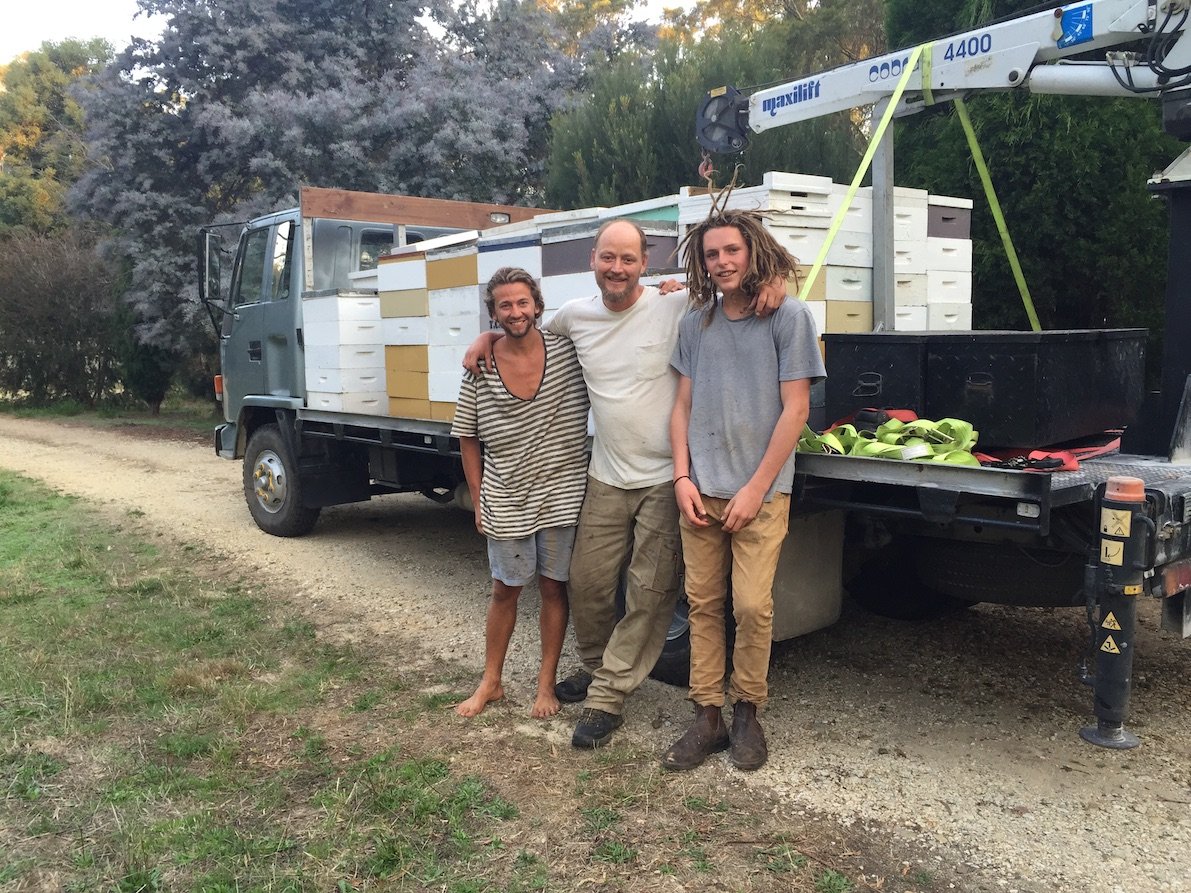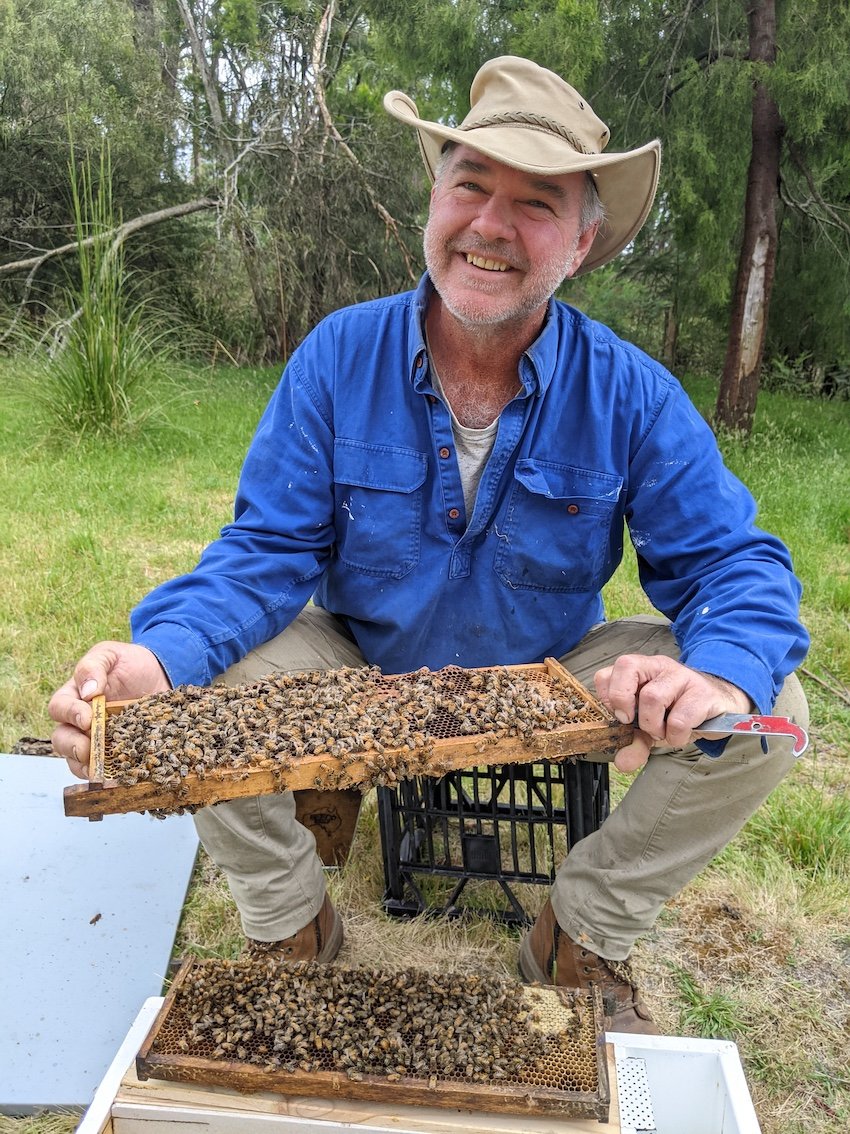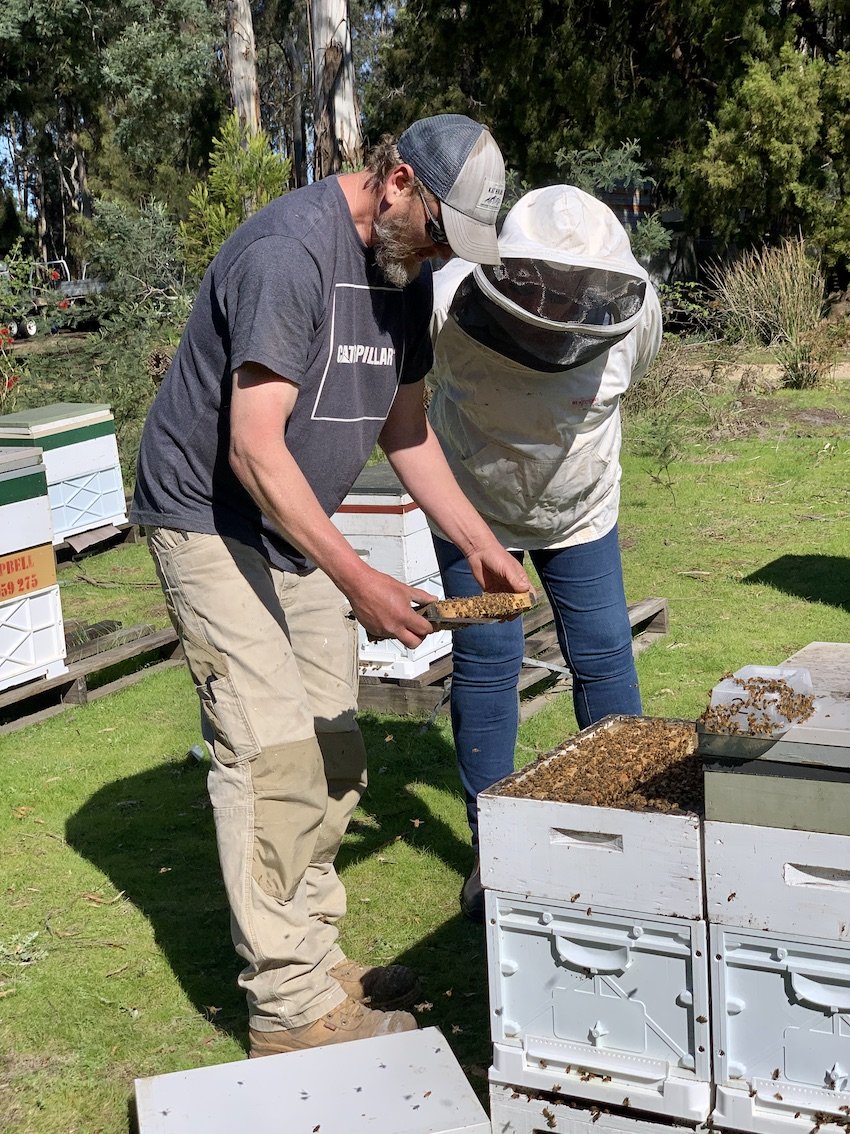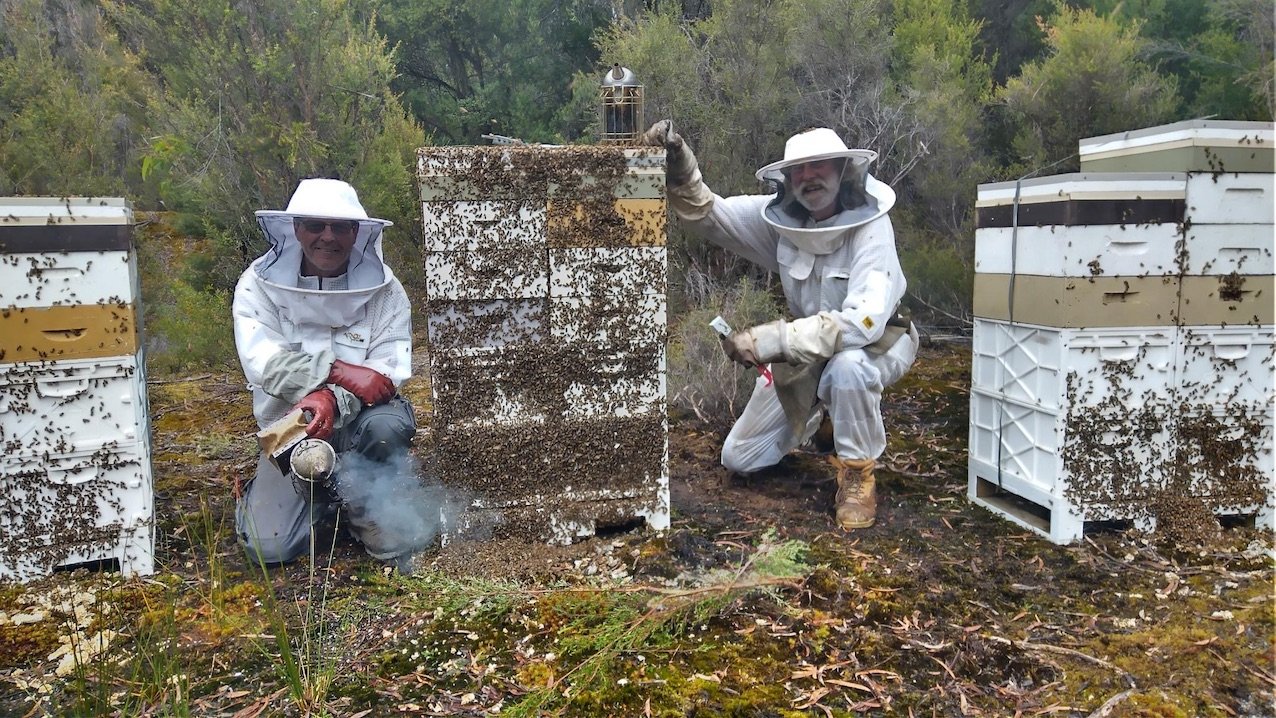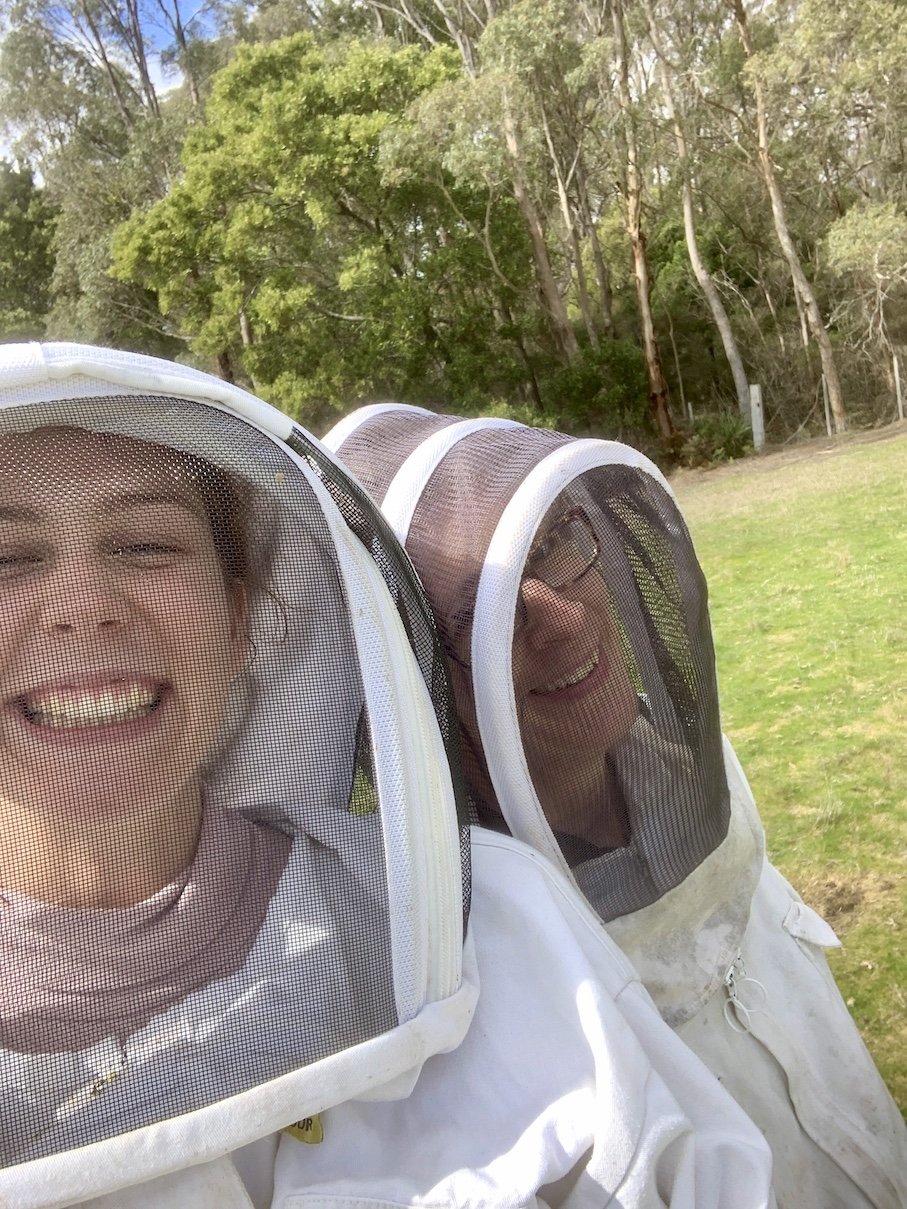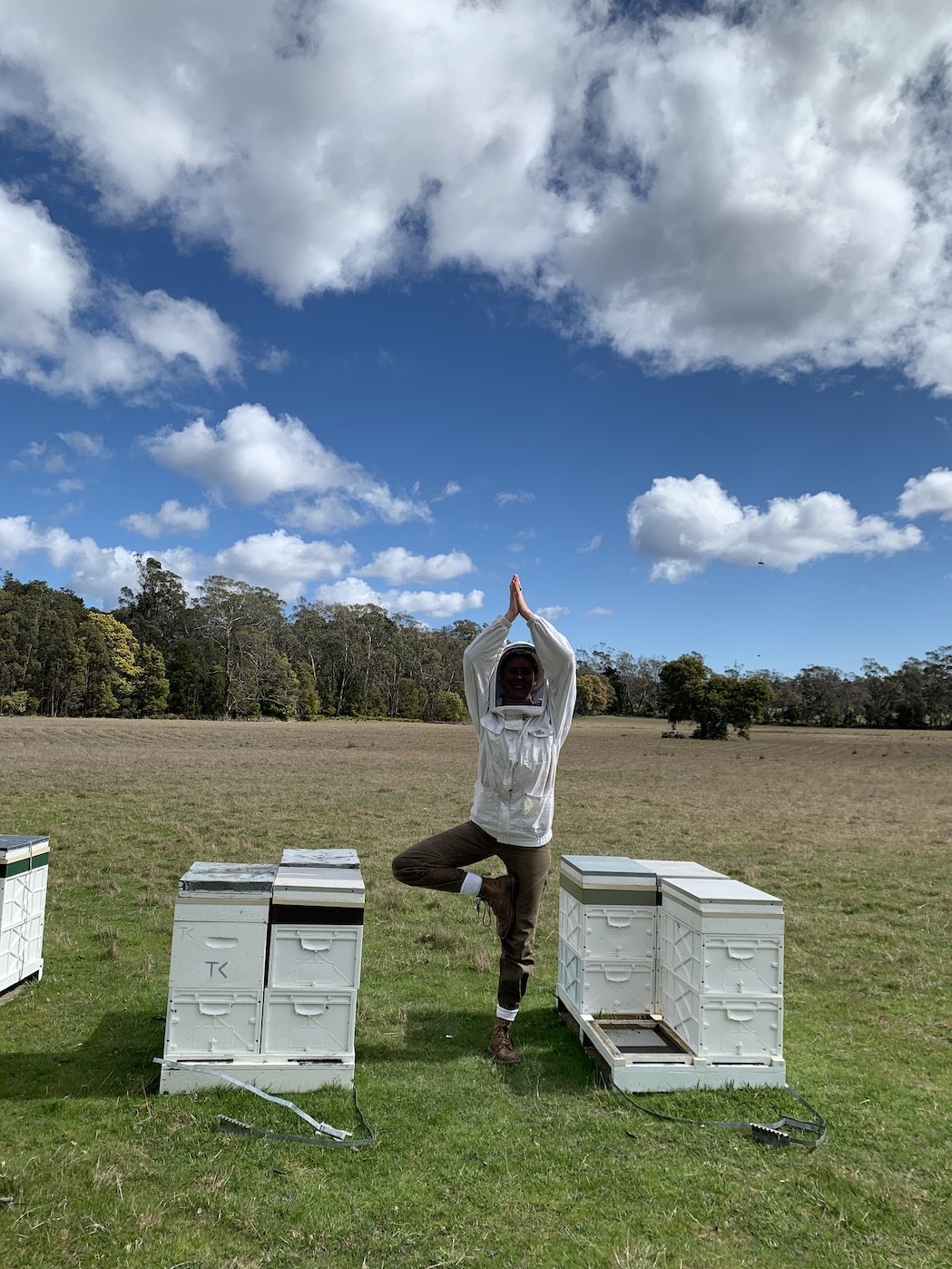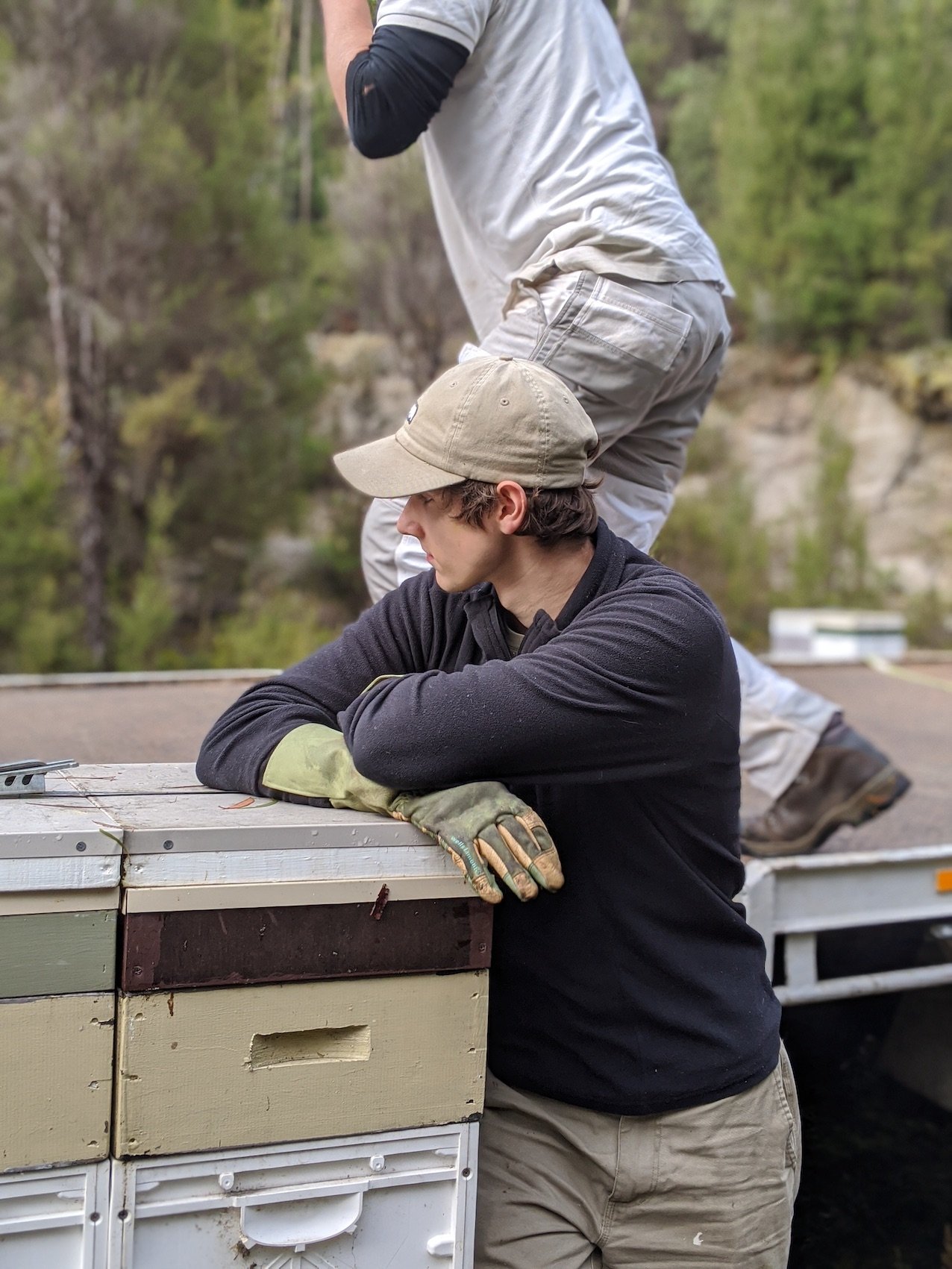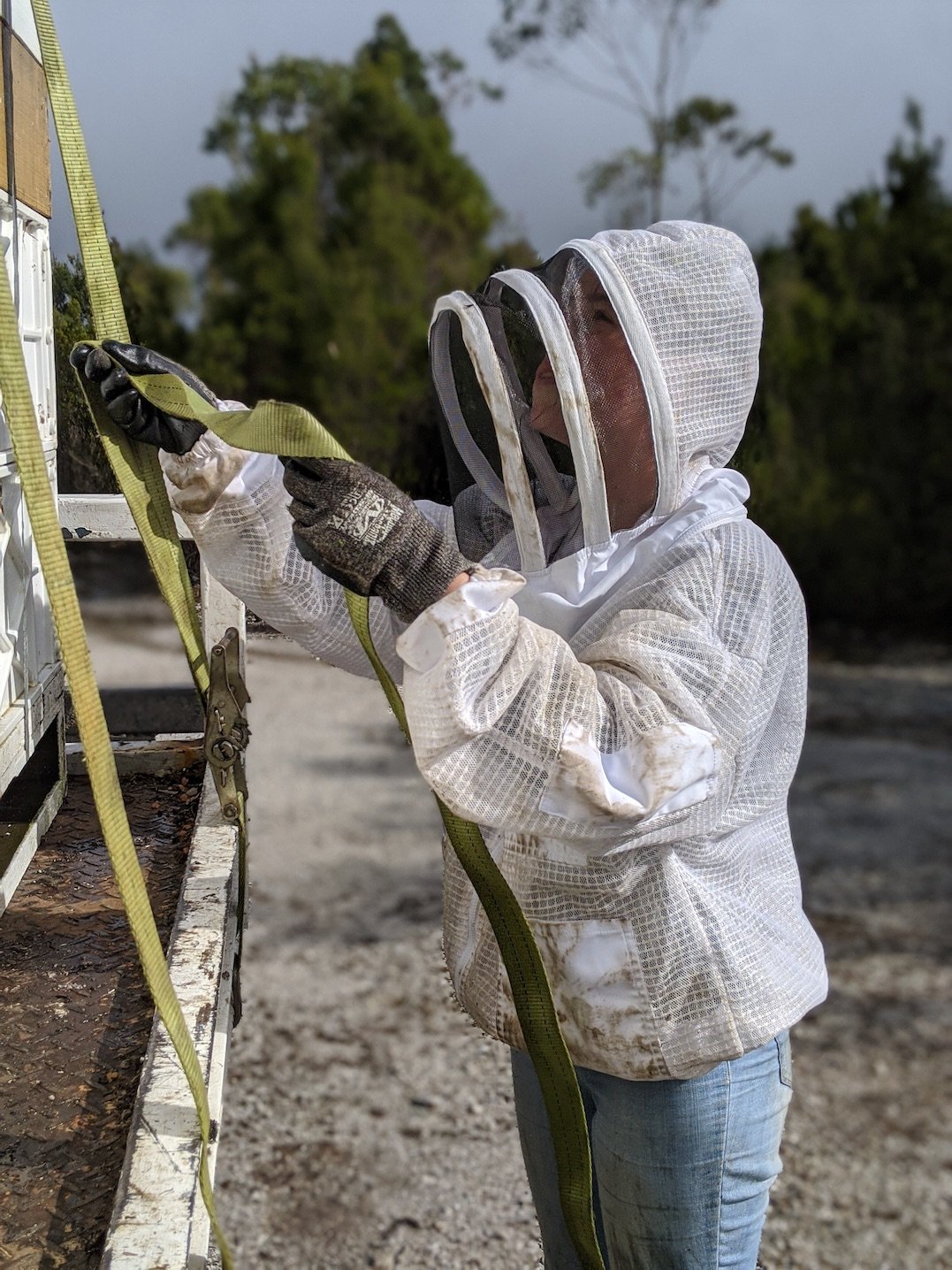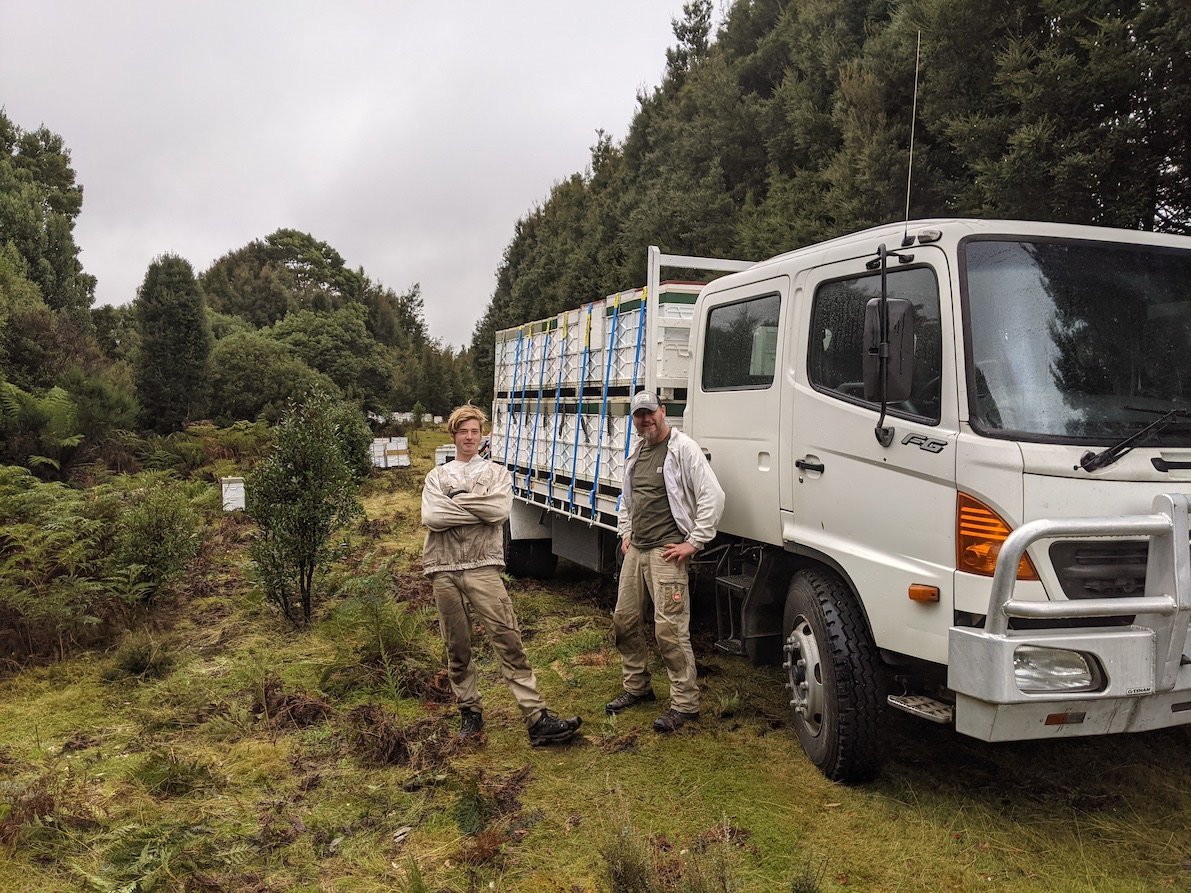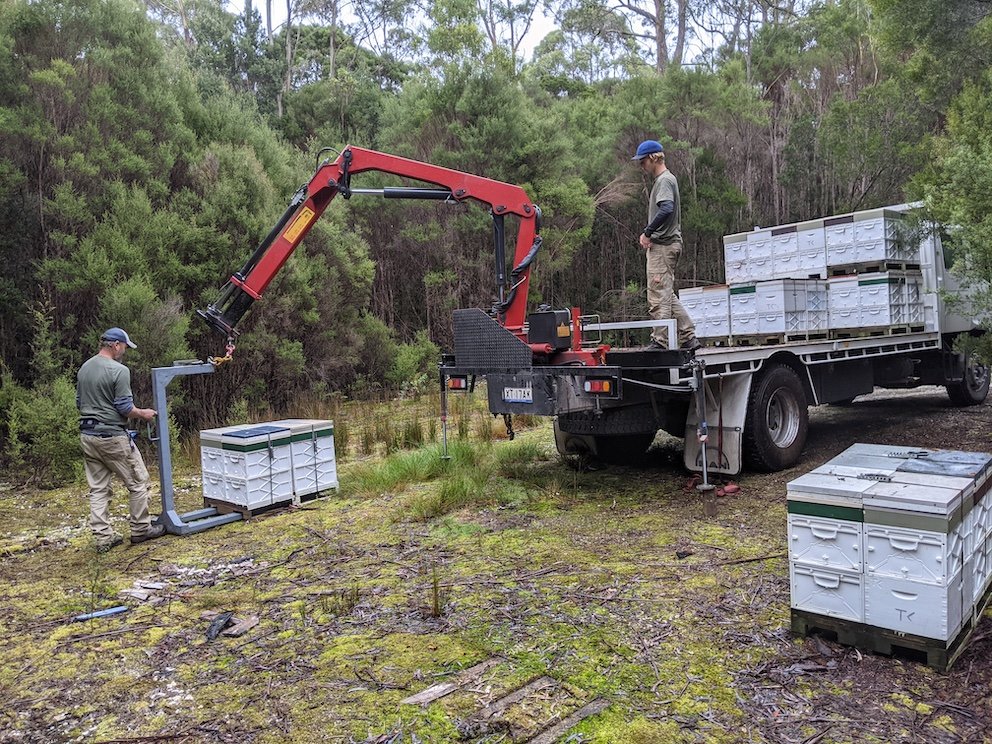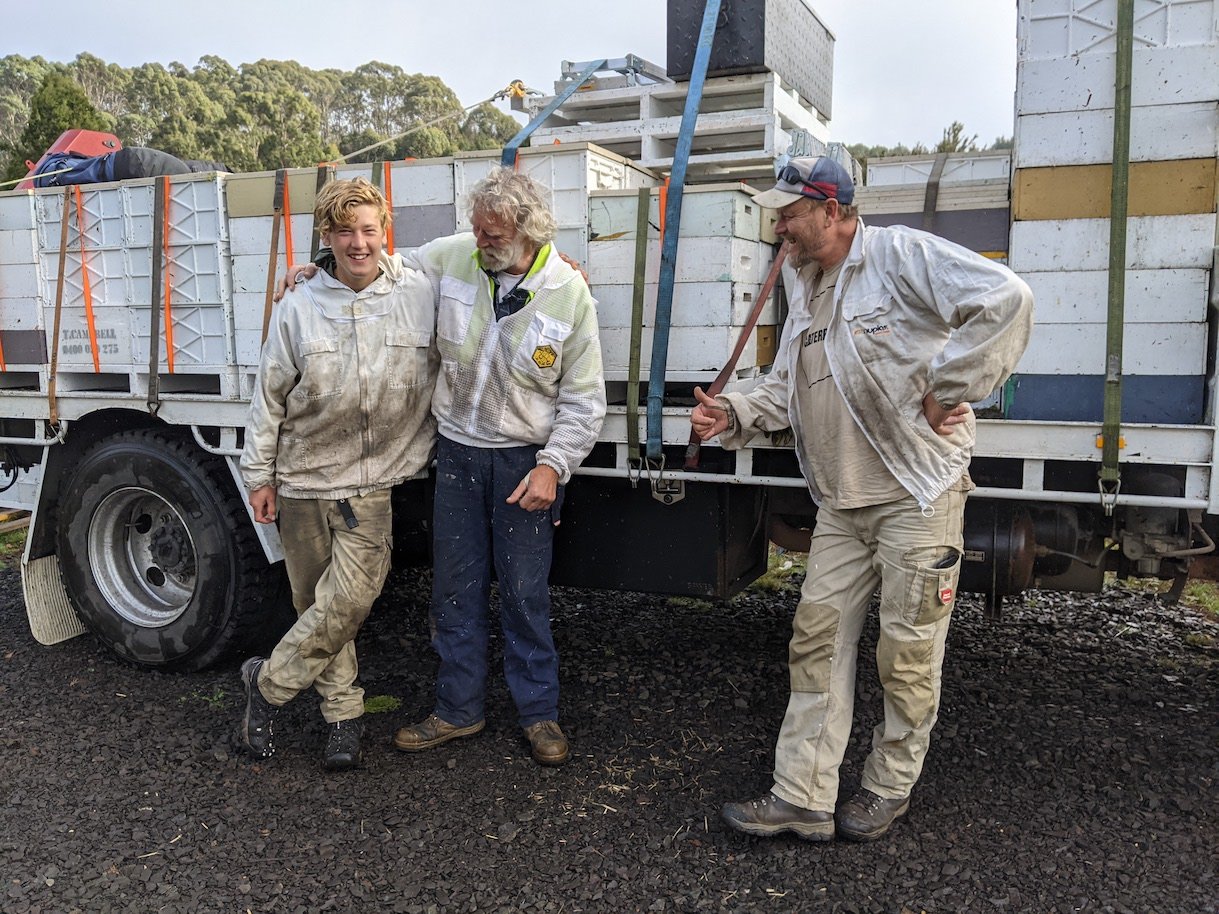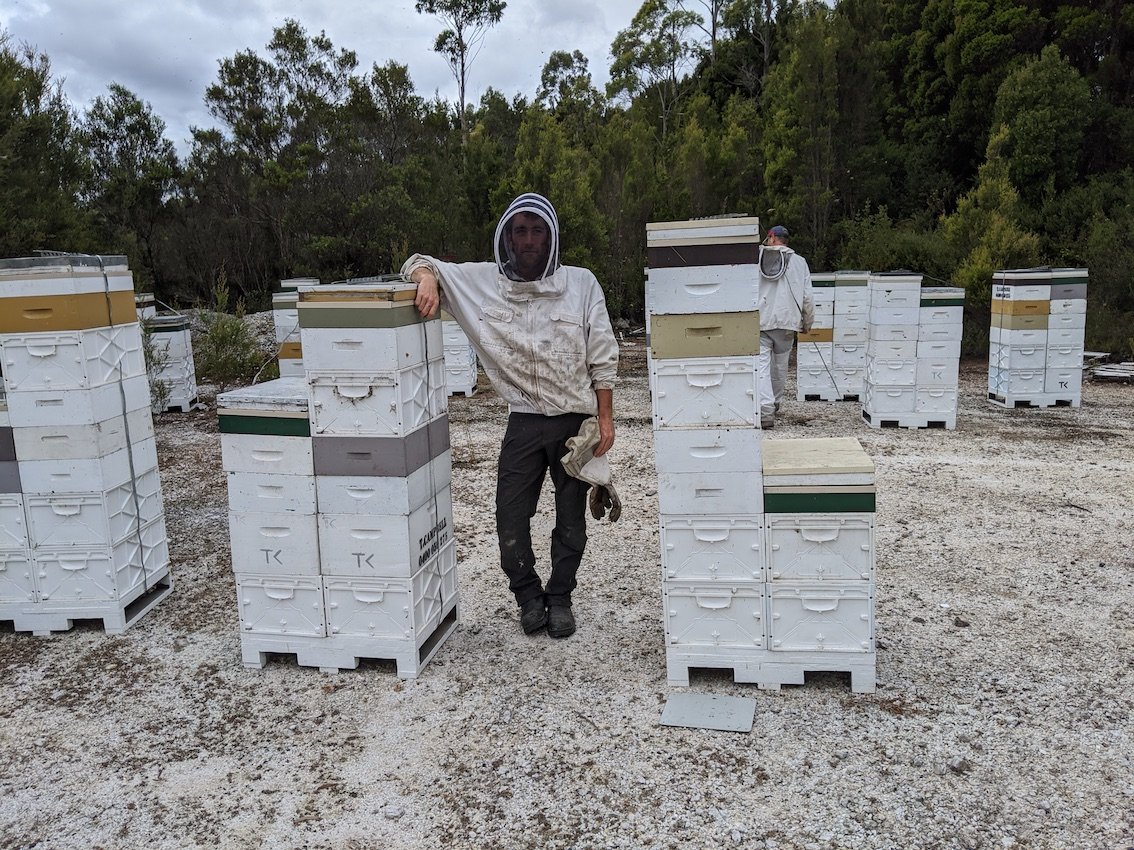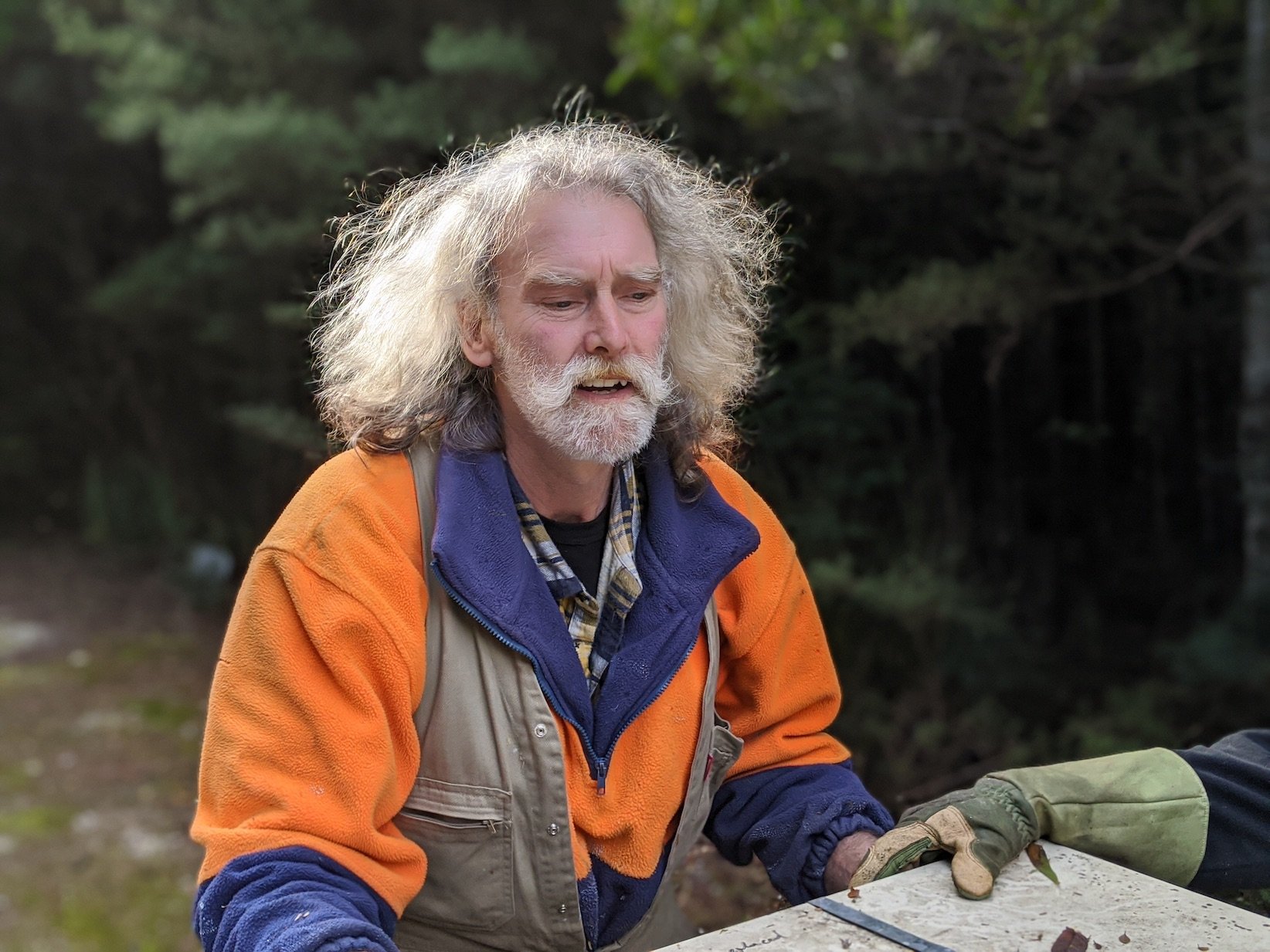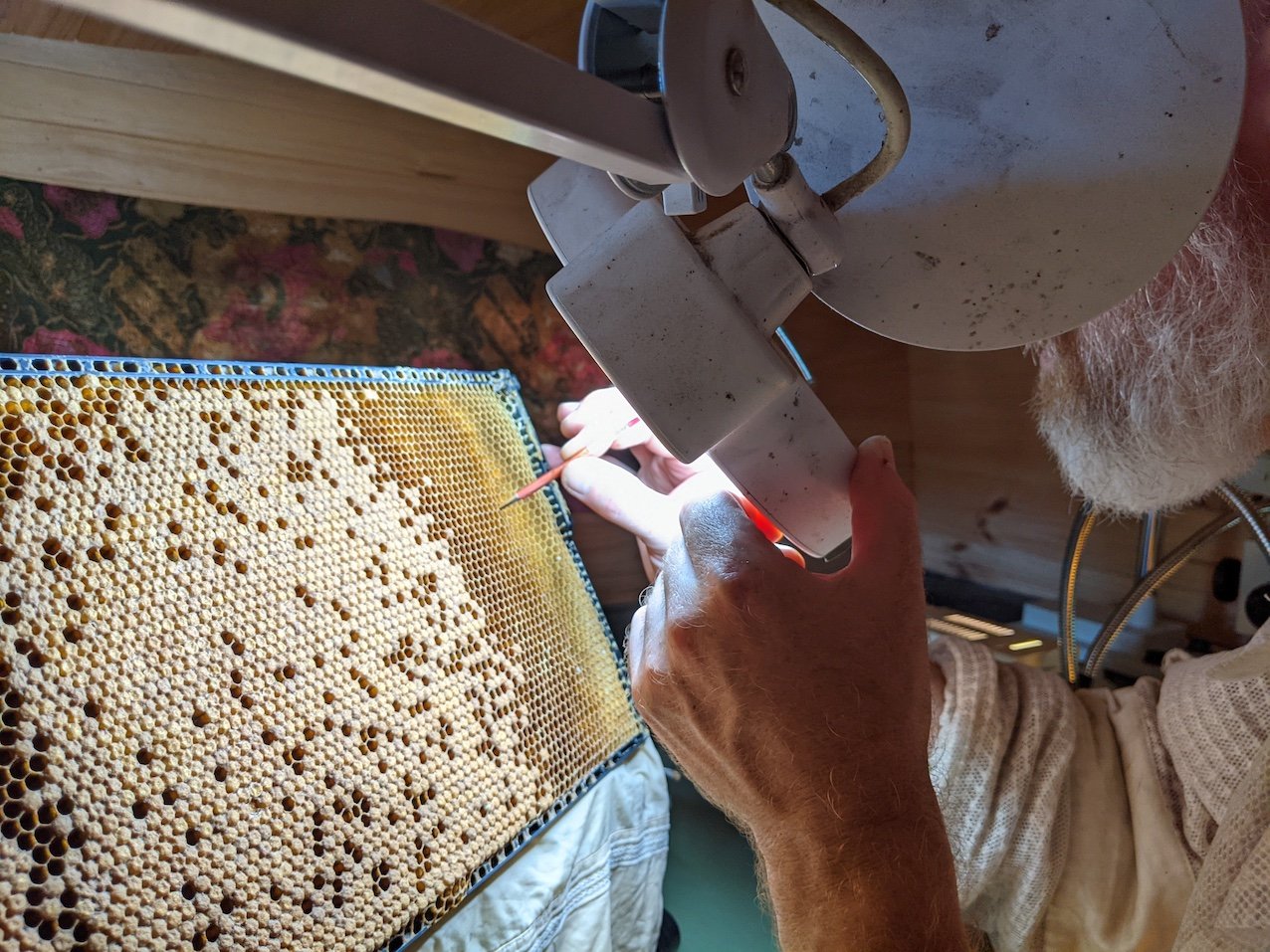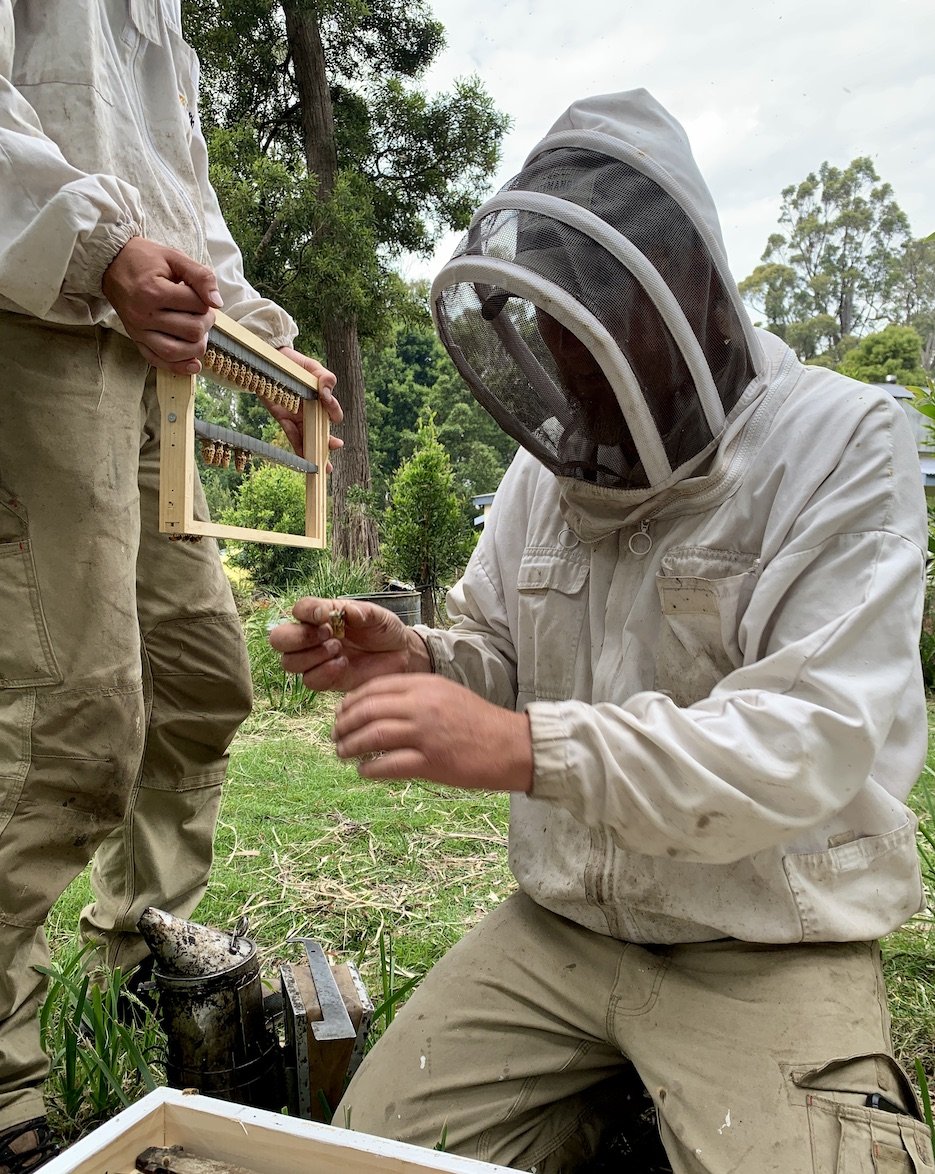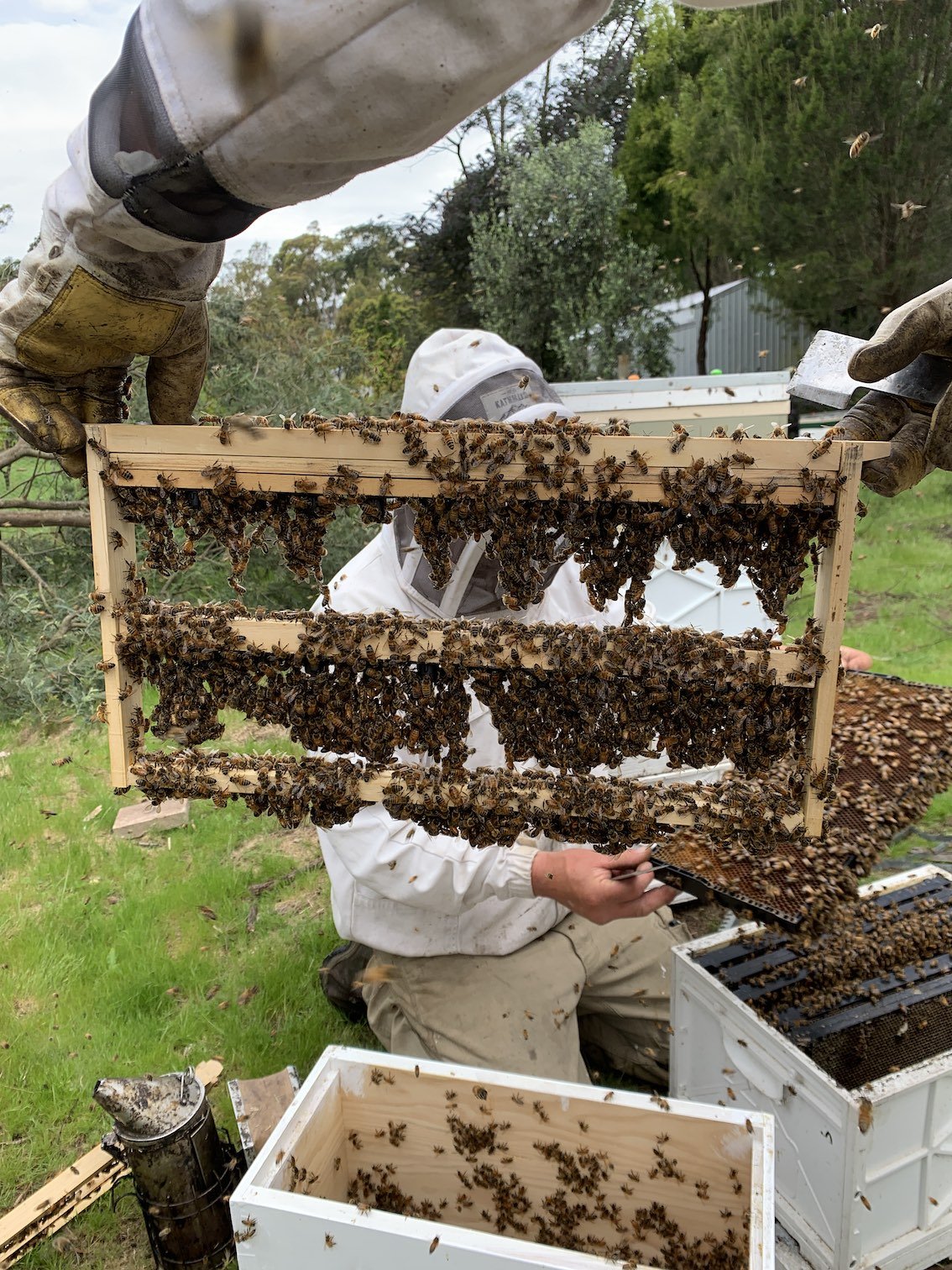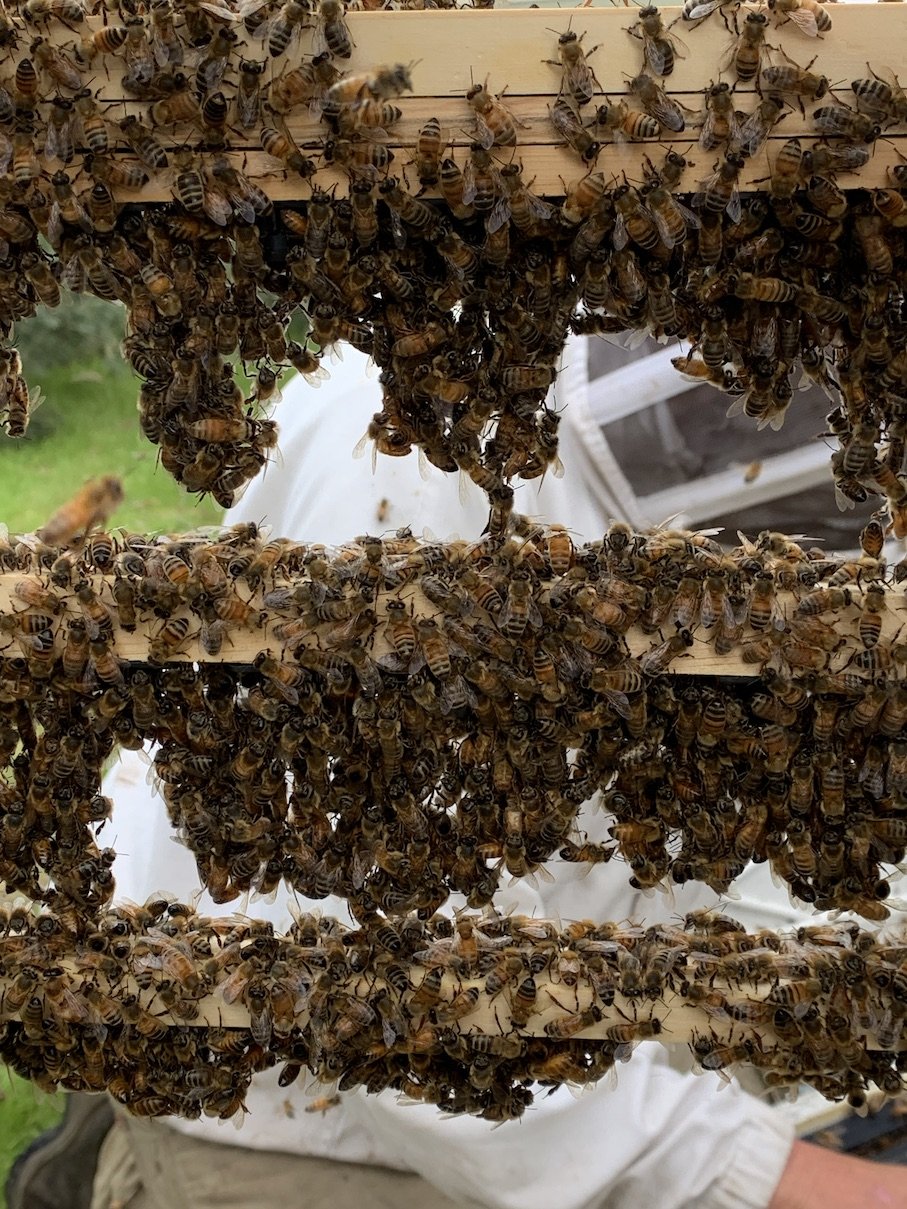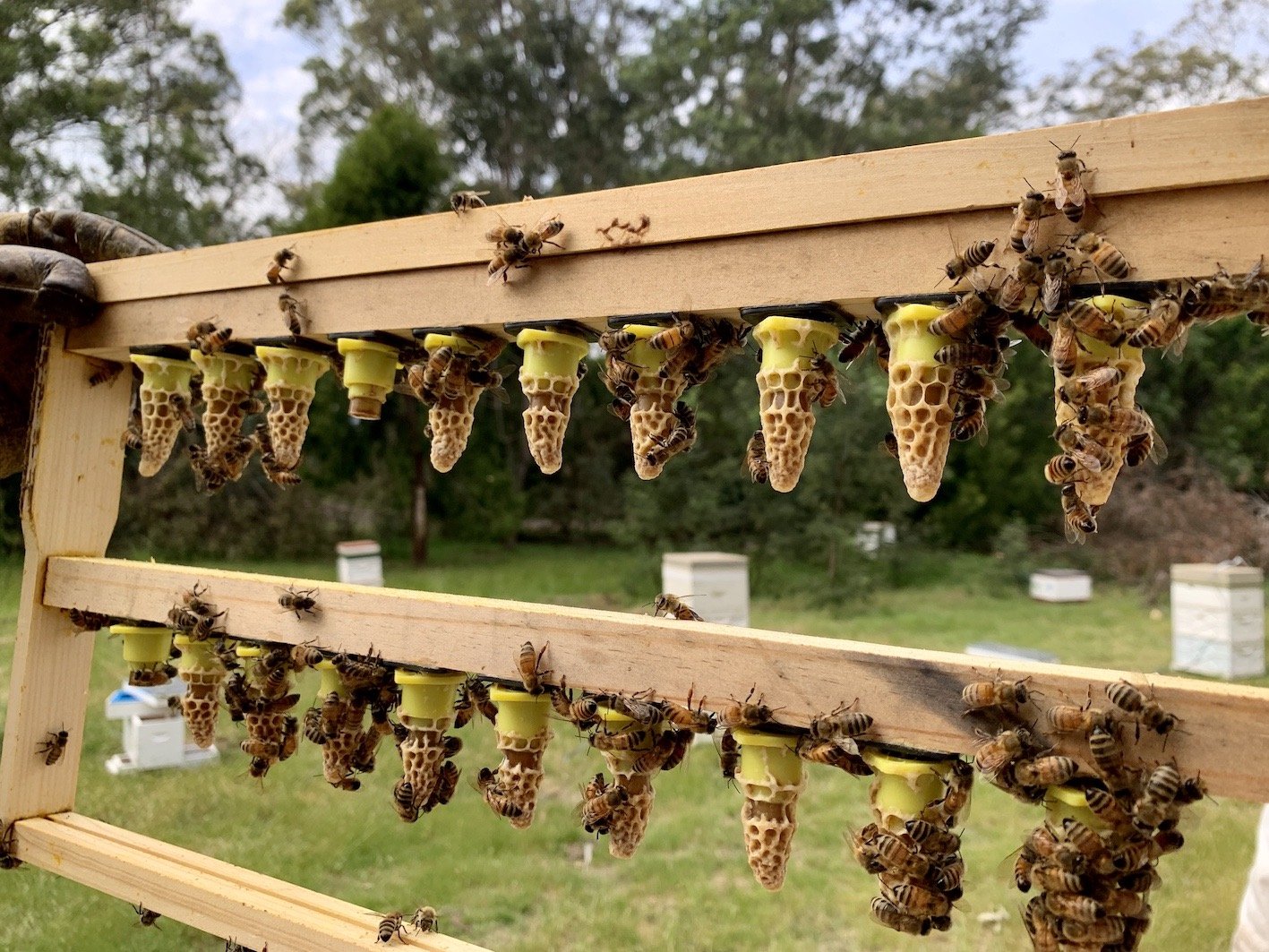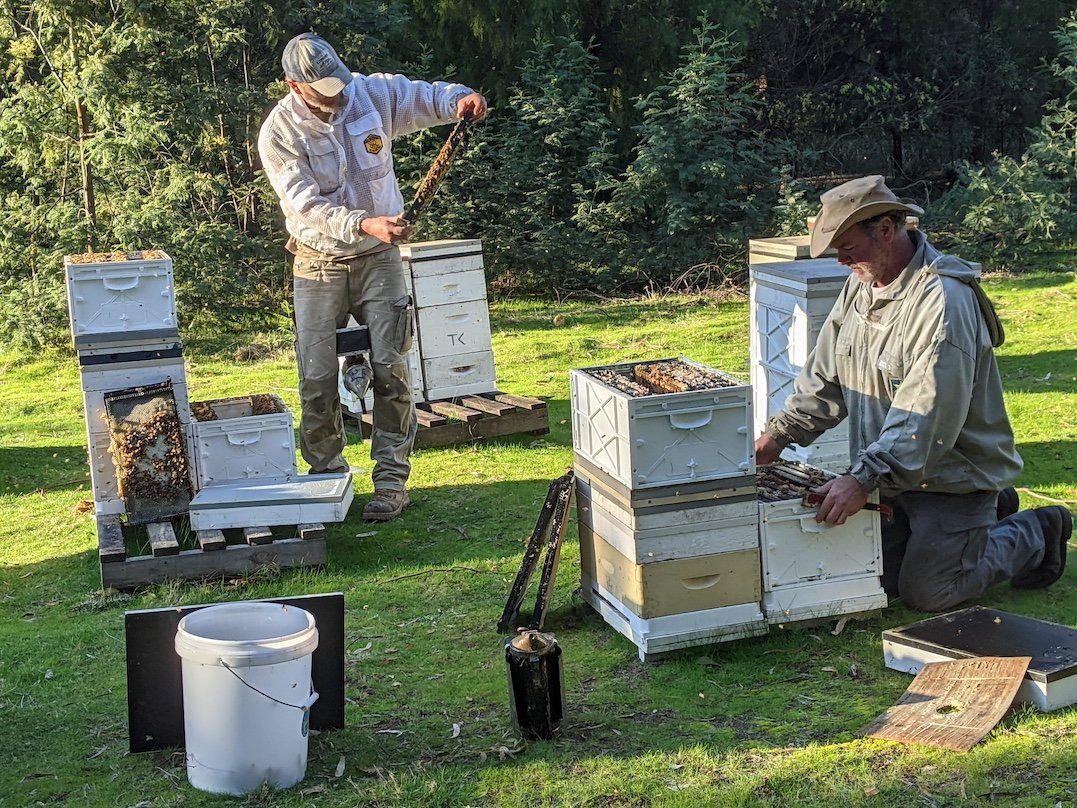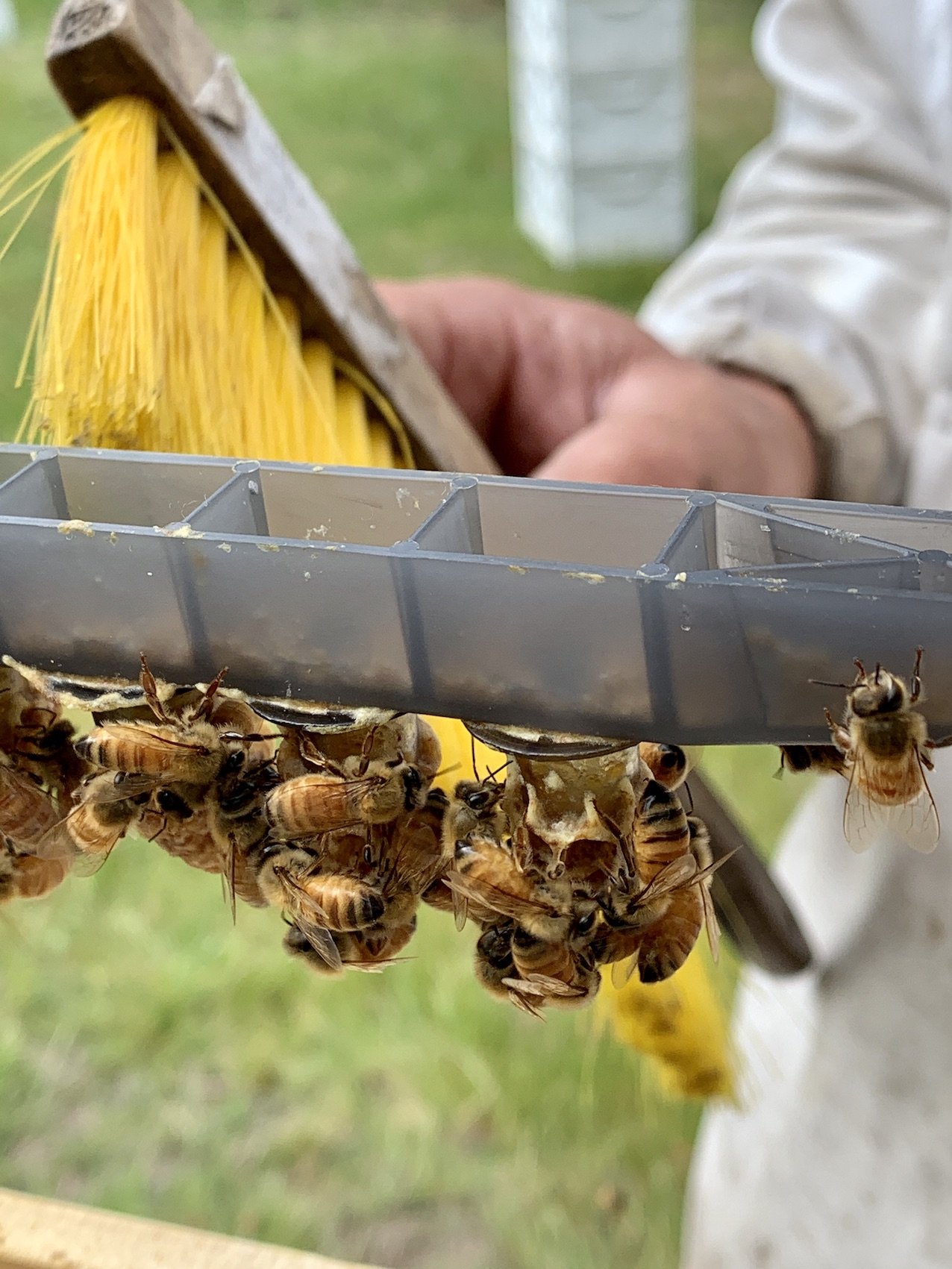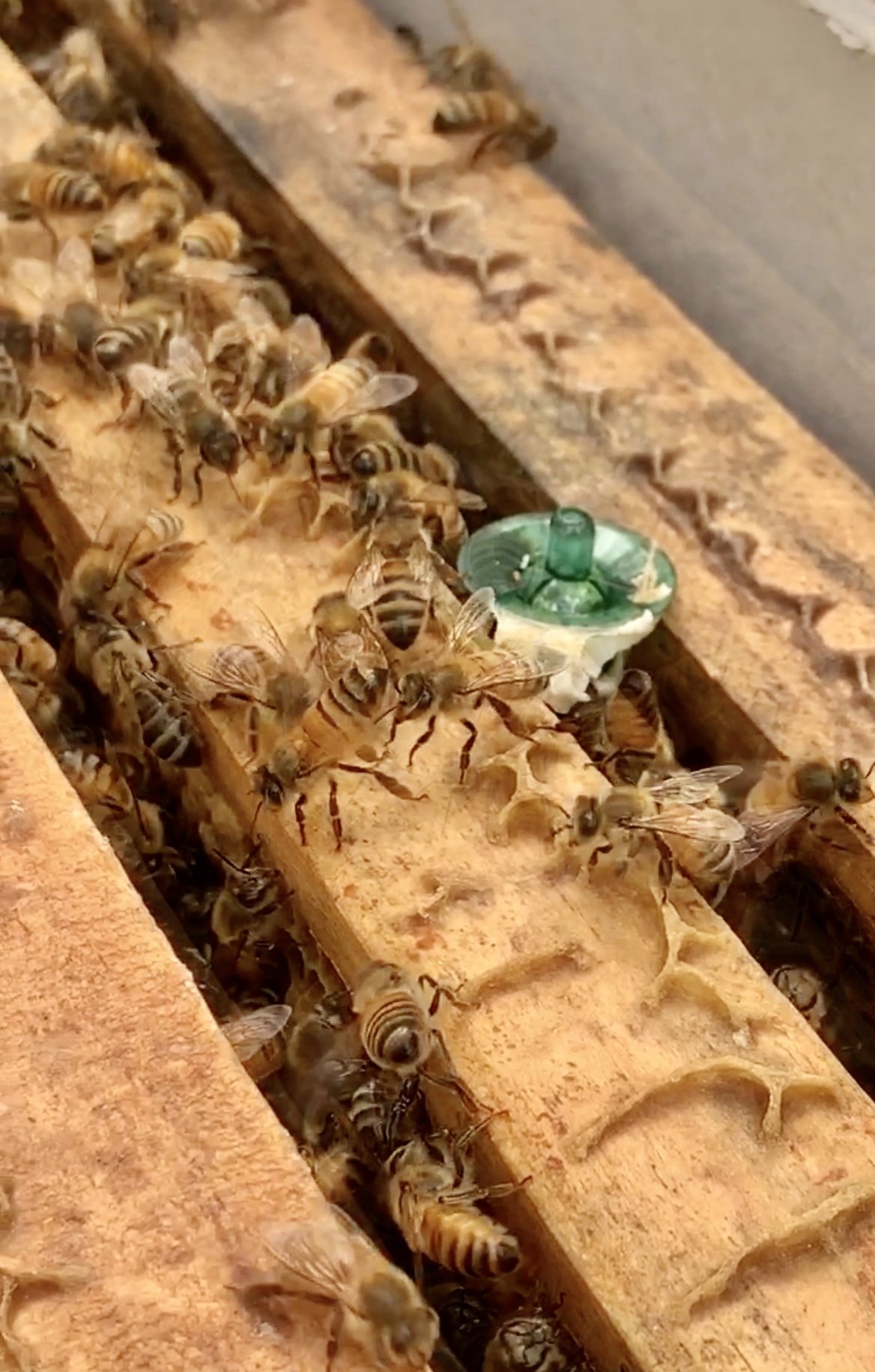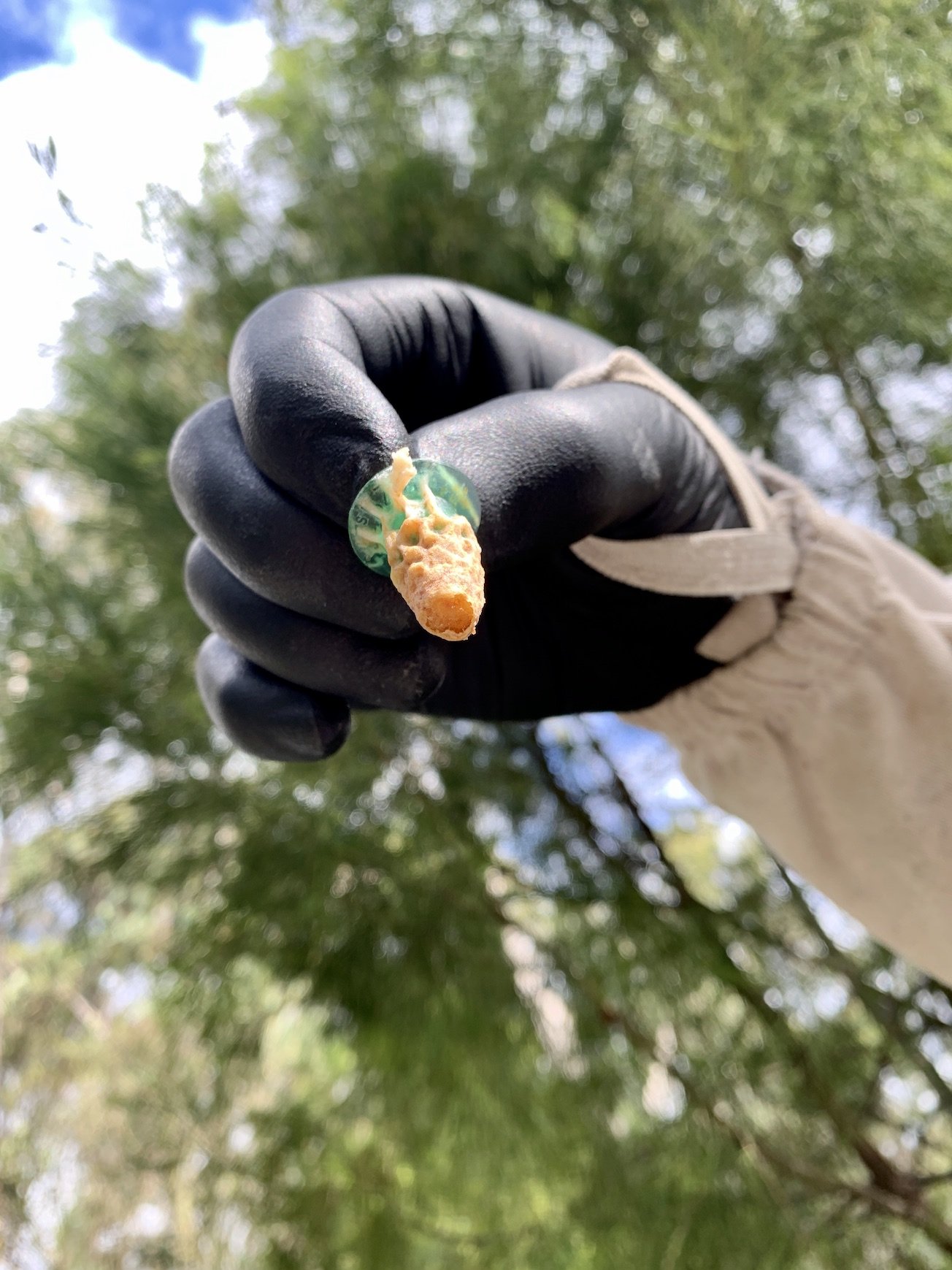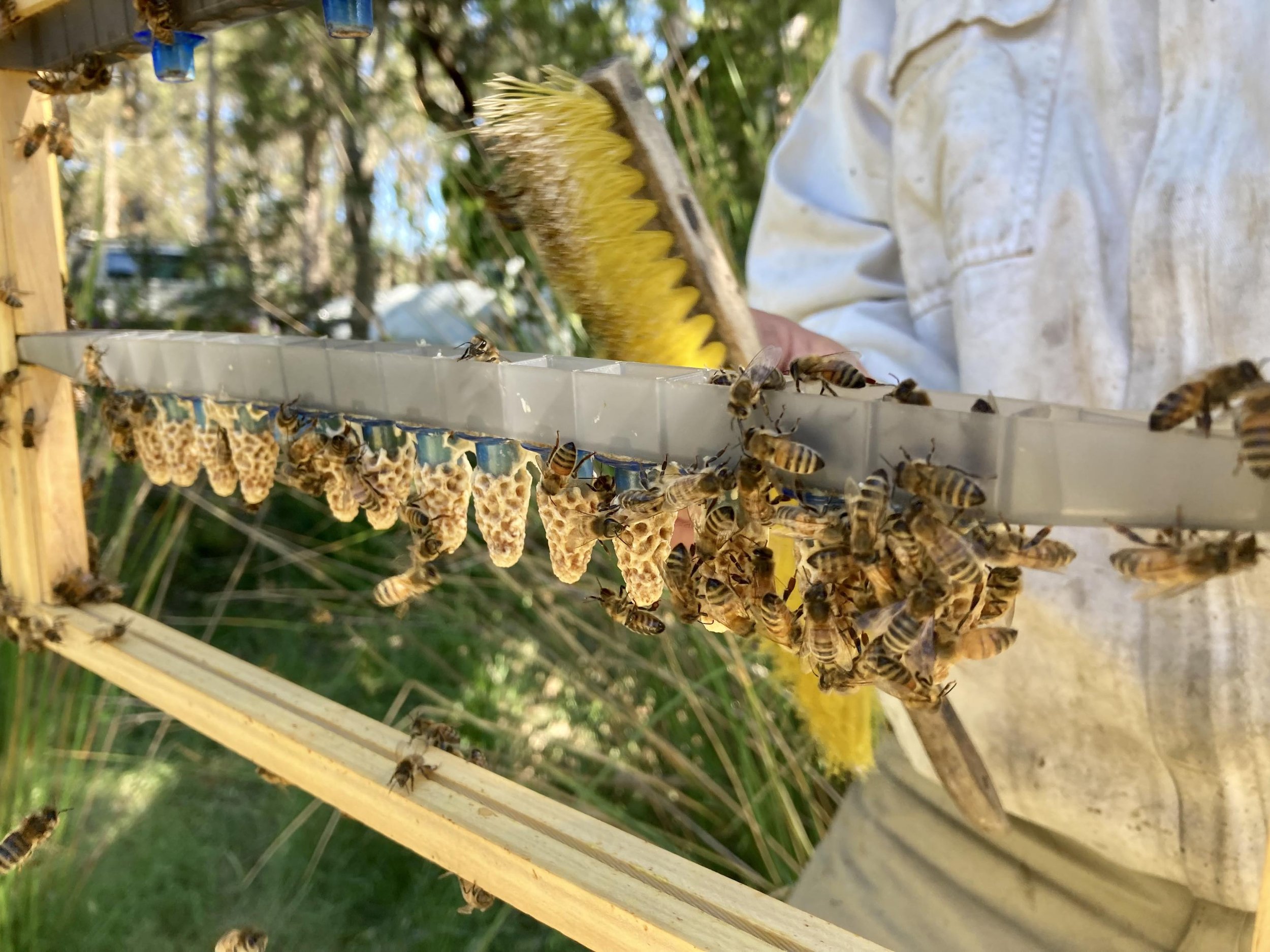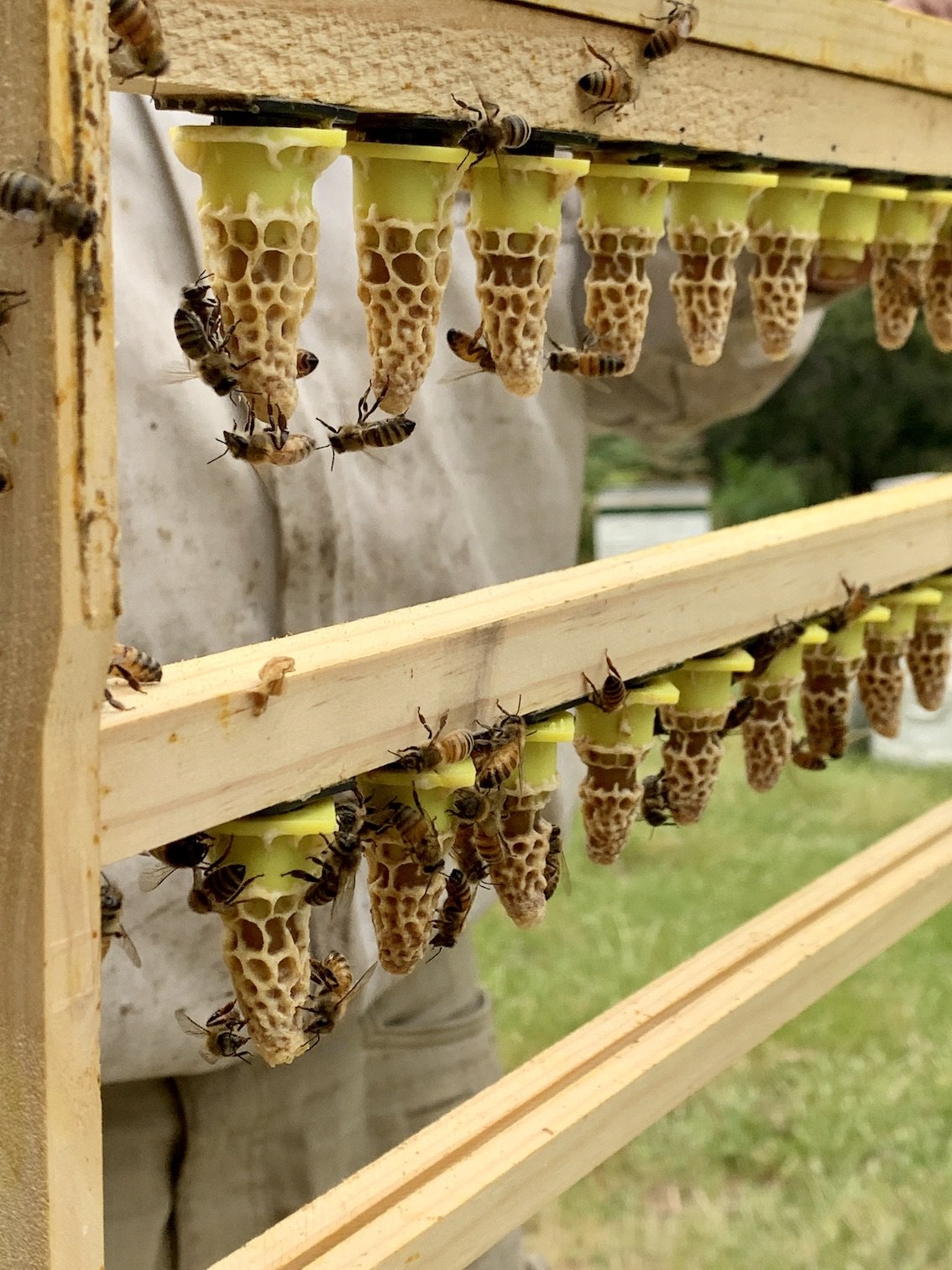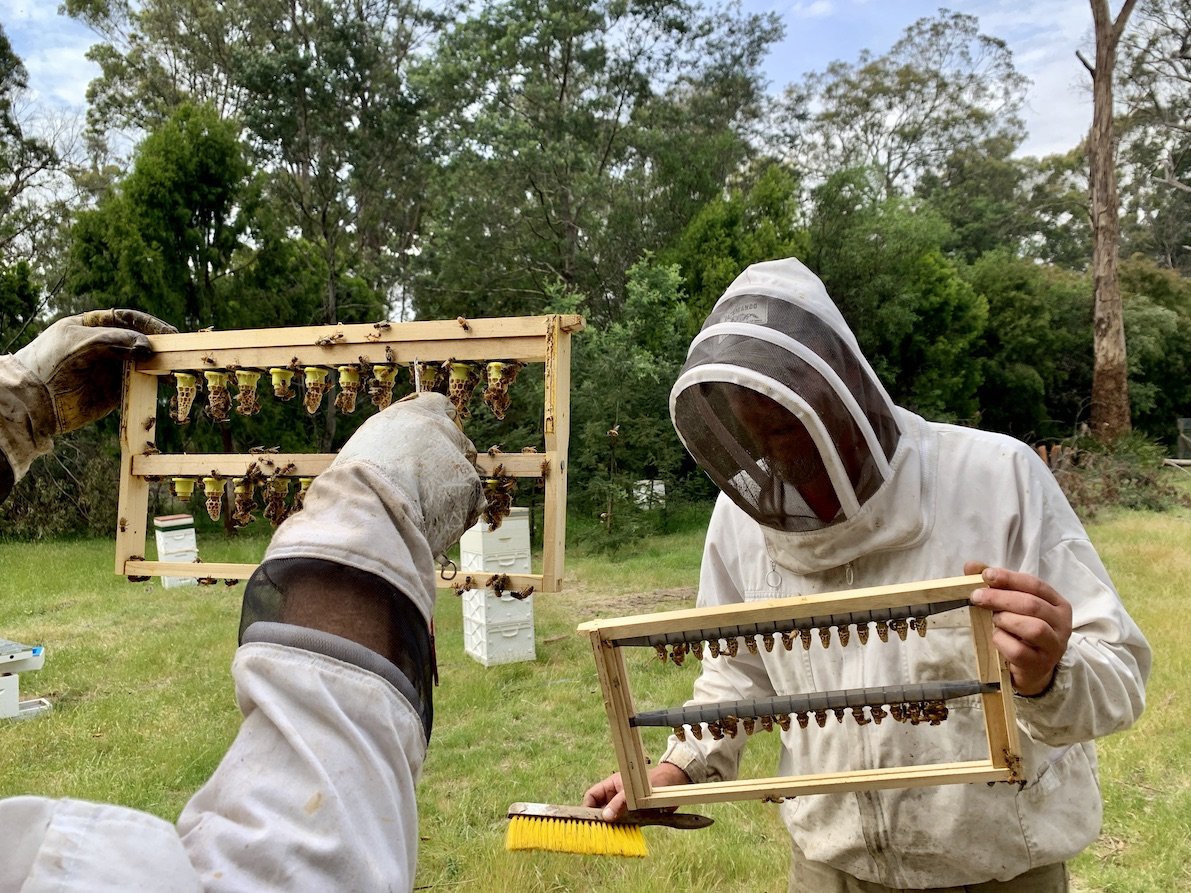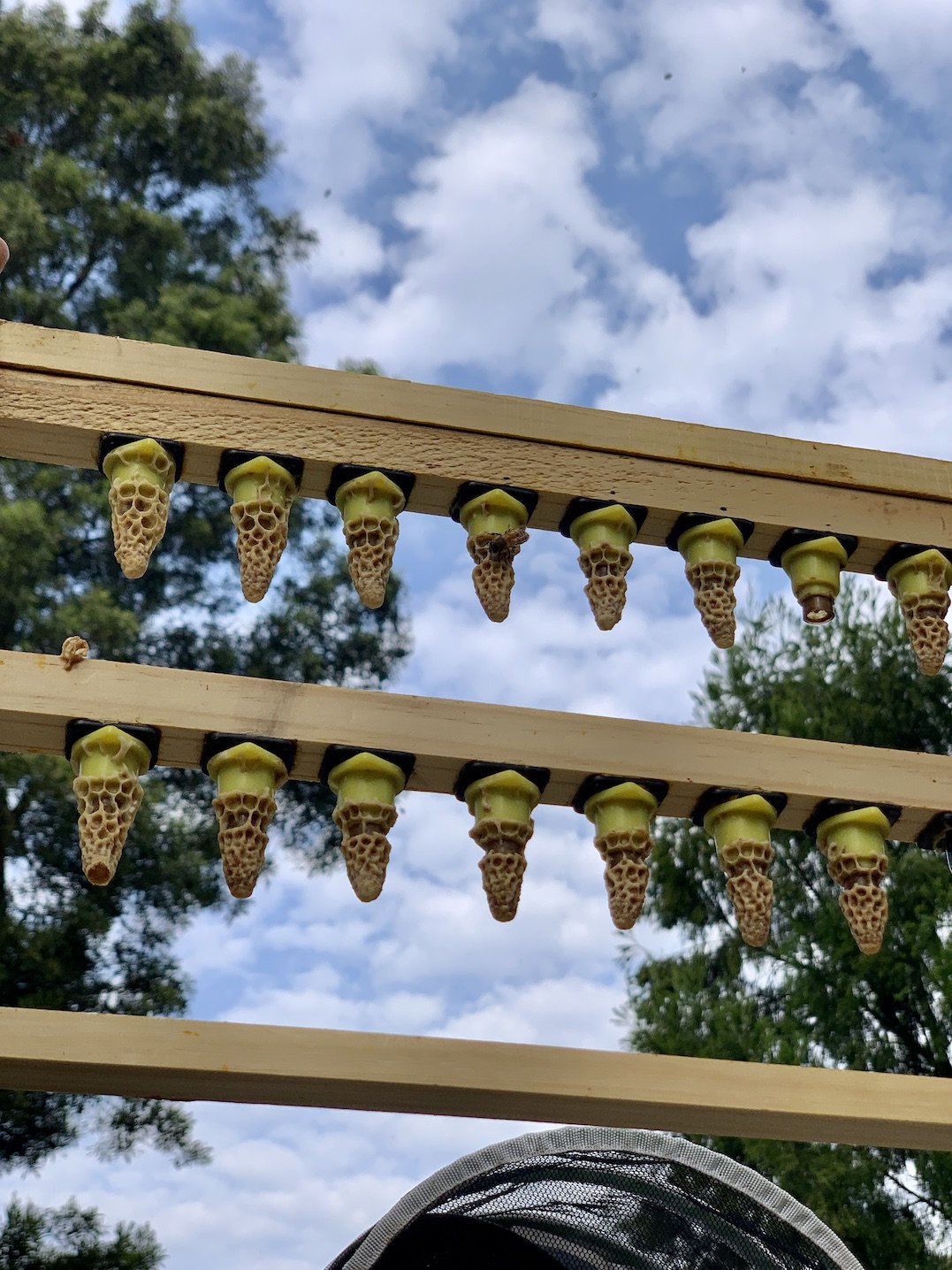
Having dedicated almost twenty-five years to working closely with bees, we've accumulated valuable insights into the intricate role these creatures play in our world.
Unfortunately, the significance and intricacies of bees and beekeeping in ensuring our food security remain largely underestimated and not well understood by the majority of people. We have made it our quest to share and promote this knowledge.
Early years of beekeeping… (photos ©Rebecca Campbell)
One of the commonly misconceived aspects of our role as beekeepers is the notion that we simply make one or two visits to the hives, collect honey, and then enjoy a leisurely ten months off. Although this may appear to be an idealized view of beekeeping, the actuality couldn't be further from it. There's a saying that suggests people enter commercial beekeeping driven by a profound fascination with bees but often contemplate quitting once they fully grasp the expenses and intricacies involved - though by that point, they find themselves deeply committed.
Commercial beekeepers in Tasmania have between 500 and 3,000 hives.
Beekeepers must possess a deep passion for bees, exhibit patience, maintain a calm demeanor, demonstrate a strong work ethic, pay close attention to detail, have a genuine thirst for acquiring new knowledge, and understand that their dedication knows no bounds.
Our year sees us continually researching better ways of beekeeping, building equipment, maintaining machinery, keeping detailed records, managing pests and disease, monitoring hives, splitting hives, feeding hives, doing numerous hive inspections, raising queens, selling nucleus hives, transporting bees to and from random flowerings, transporting honey supers, extracting honey and then trying to sell the honey. (And this is all weather dependent!)
You need numerous buildings: a warehouse, storage facilities that are secure, weatherproof and anywhere there is honey, above-all, bee-proof (a 5mm hole is all the bees need to enter your building and take all their honey back, which they will do in a remarkably short time); a food-grade honey factory (complete with extraction plant, packing, storage and warming rooms - all under strict food safety guidelines)
You need to invest in the following equipment: beekeeping gear (10s of 1,000s of frames, 1,000s of boxes, 100s of lids, feeders, feeder covers, inner covers, split boards, escape boards, clearance boards, queen excluders, bottom boards and scores of hive pallets), smokers, hive tools; queen-rearing gear (microscope, magnifiers, grafting tools, special frames, special cups, cages, cage holders, etc); trucks, utes, trailers, cranes and forklifts; branding equipment; buckets & IBCs; extracting gear - all in stainless steel (bottling tanks, filter systems, extractors, settling tanks, pumps, augers, uncapping equipment, honey sumps, wax melters and all the other sundry small tools that are too numerous to list); and then you need the tools and machinery to keep all the above going.
You will have to afford - in time and money - to feed your hives when needed (both carbohydrates and proteins); pay petrol, diesel, heavy vehicle and equipment maintenance; labour cost for employees; honey site lease fees; business expenses (accountants, advisors, numerous insurances and registrations); honey paid to land owners; and ridiculous hours of the day and night.
When it comes to trying to sell your honey, you need to consider; bulk or packaged (packaging, labelling and branding); large- or small-scale wholesale, or retail; local, national or international export.
FOR US, ALL THIS IS DONE FROM A SMALL ISLAND, OFF A BIG ISLAND, IN THE MIDDLE OF THE OCEAN.
Enjoy the journey if you decide to take it - and don’t say I didn’t warn you!
Yours truly, Tristan
Recent beekeeping… (photos ©Rebecca Campbell)
Over the years, we have introduced beekeeping to lots of people who have wanted to learn about the trade. See photos below…
(photos ©Rebecca Campbell)
Queen breeding is a very specialised undertaking.
A queen can lay up to her own body weight in eggs a day (up to 2,000) during the hive’s active season and can live many years, if she is well-mated and of good localised genetics. When selecting a queen for breeding, we have at least a dozen genetic traits we will select from - disease resistance, honey gathering, overwintering, temperament, comb-building, hygienic behaviour, size of workers, workability, propolis collecting, ability to work in different temperatures, to name the main ones. Some of these traits come from the male gene line and some from the female line.
The queen bee mates during only one period in her life. When she is about two weeks old she will start her mating flights. She will leave the hive around the middle of the day to seek out a drone congregation area (an area where drones meet chosen through a complex set of factors, such as landmarks, topography and magnetic fields). She will do this over a few days consecutively, if the weather allows her to leave the hive. There is great danger outside the hive for this young virgin queen - she may get lost returning to the hive, blown off course by the wind, be caught by storms or get eaten by a bird or other predator. All in all, a complex miracle of nature.

